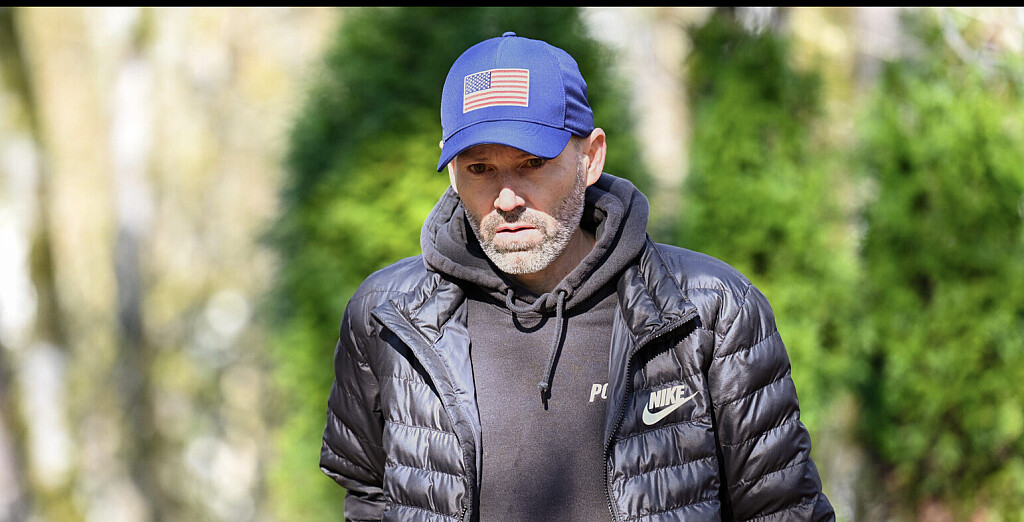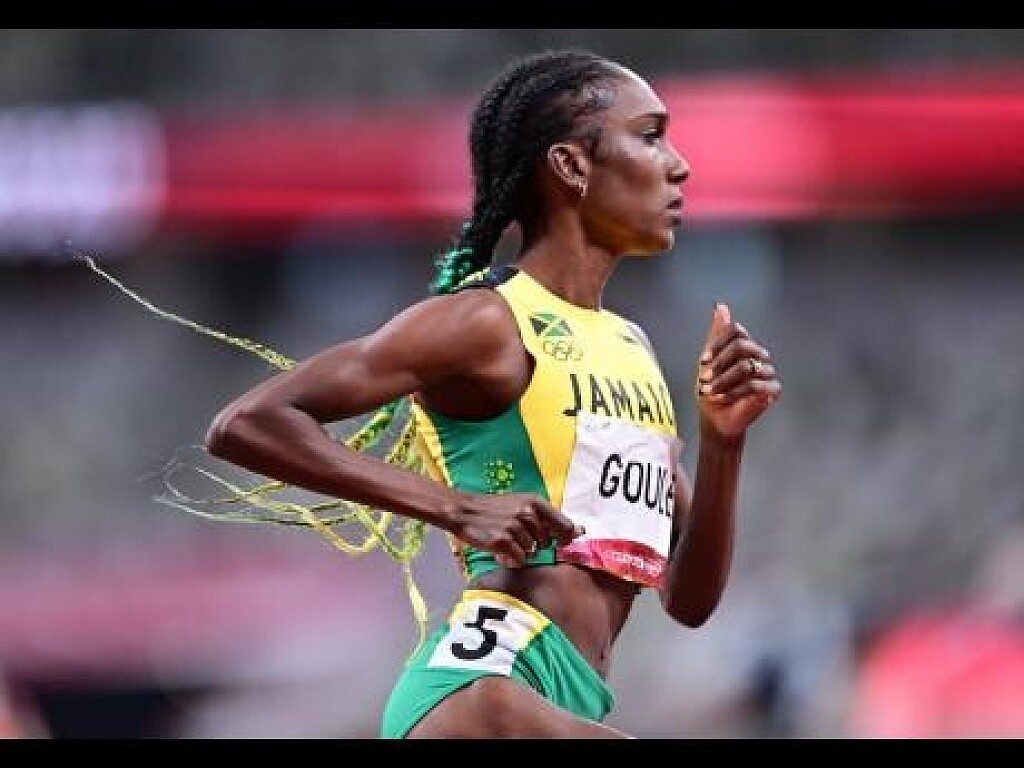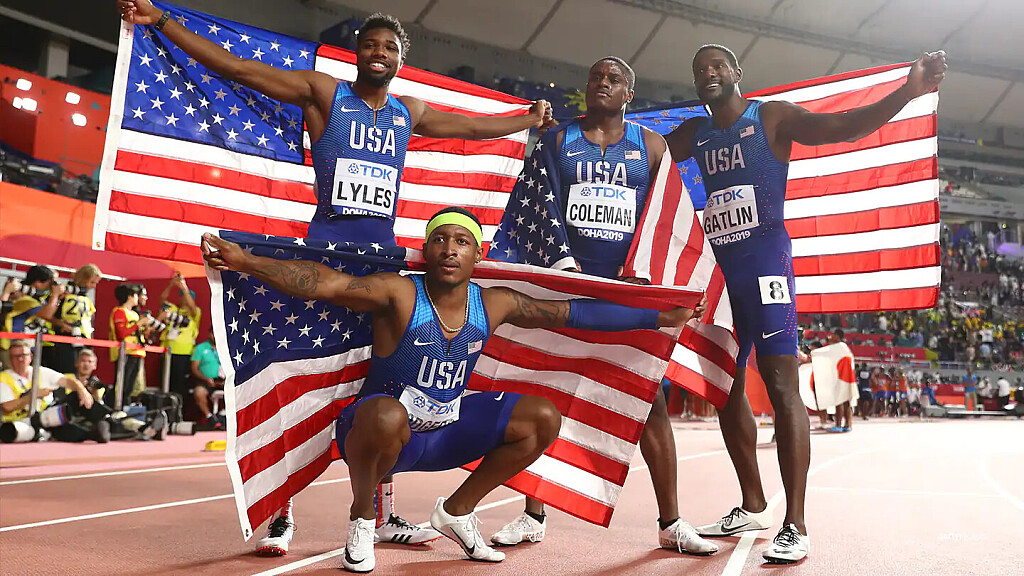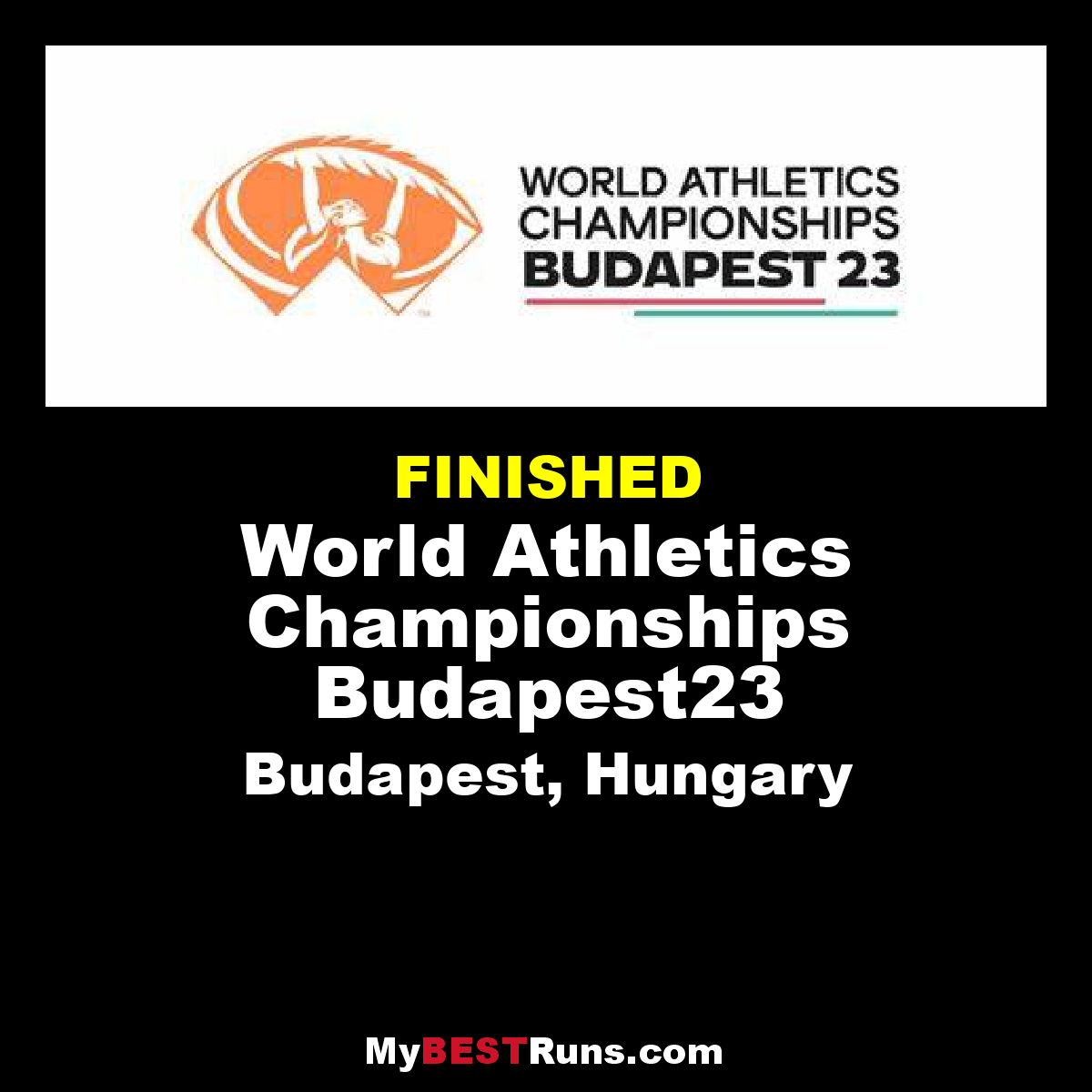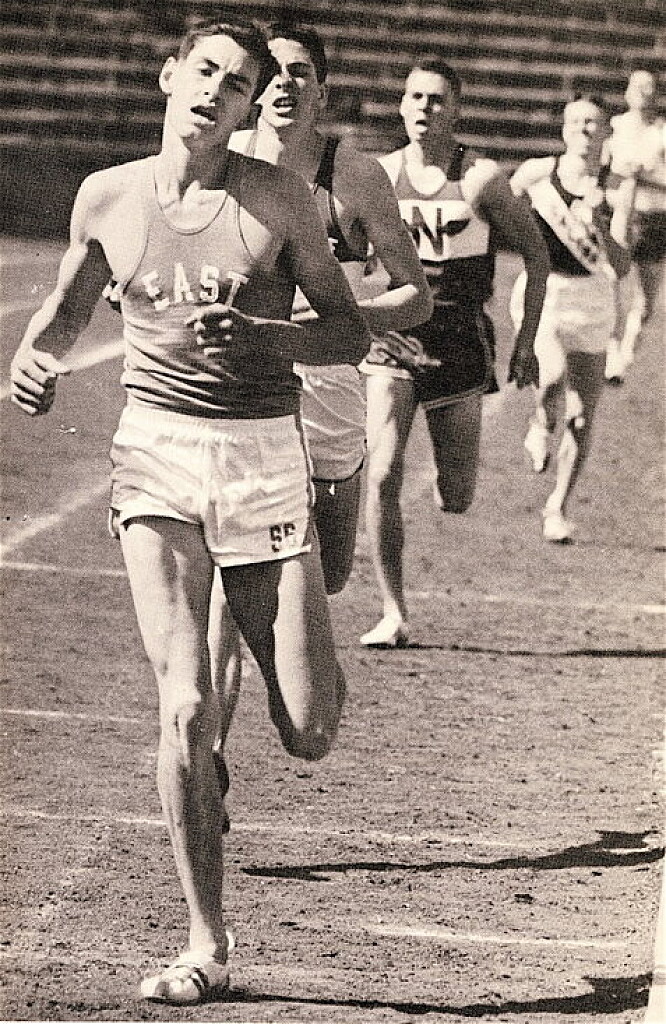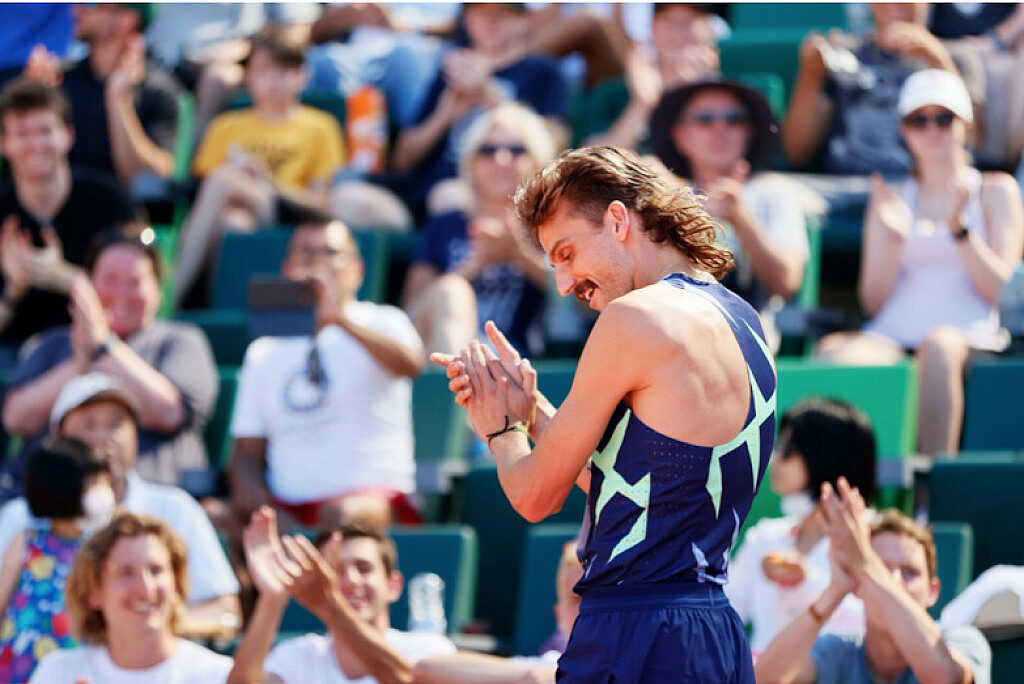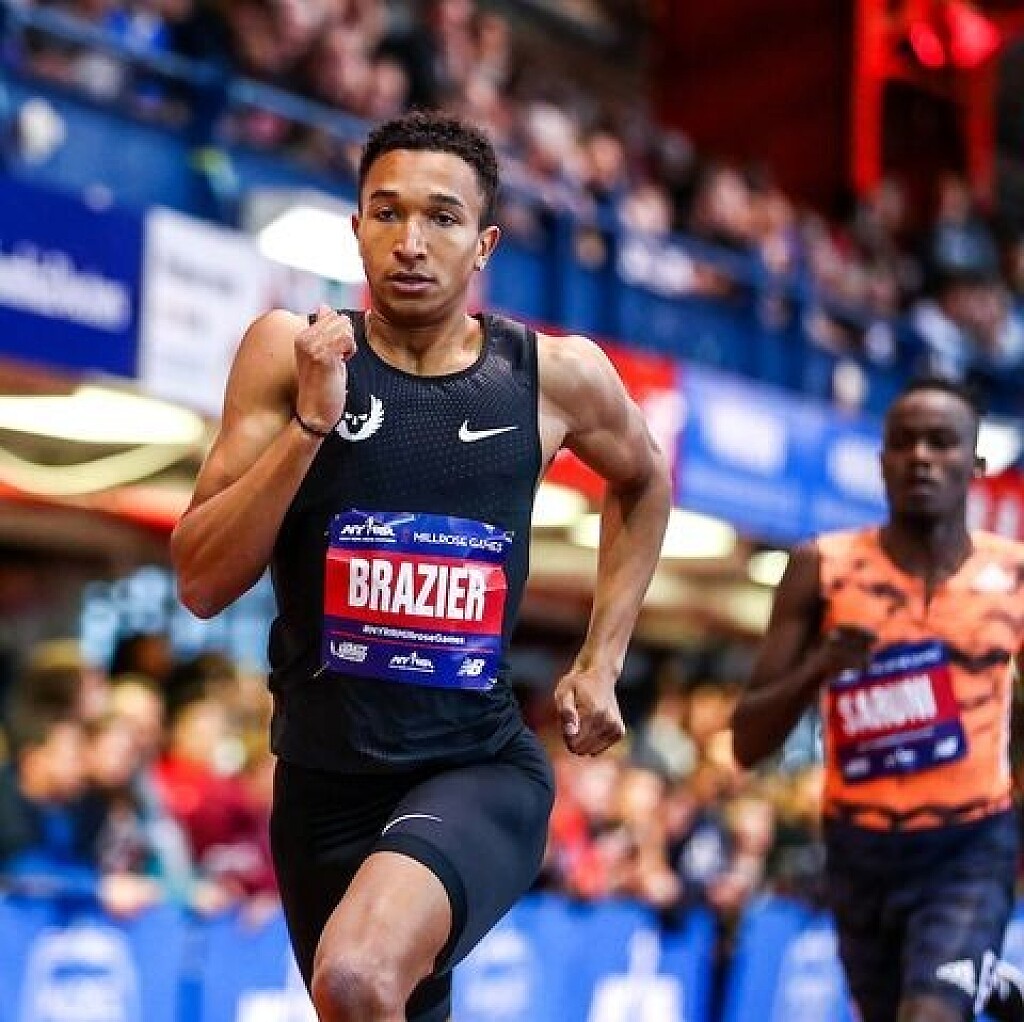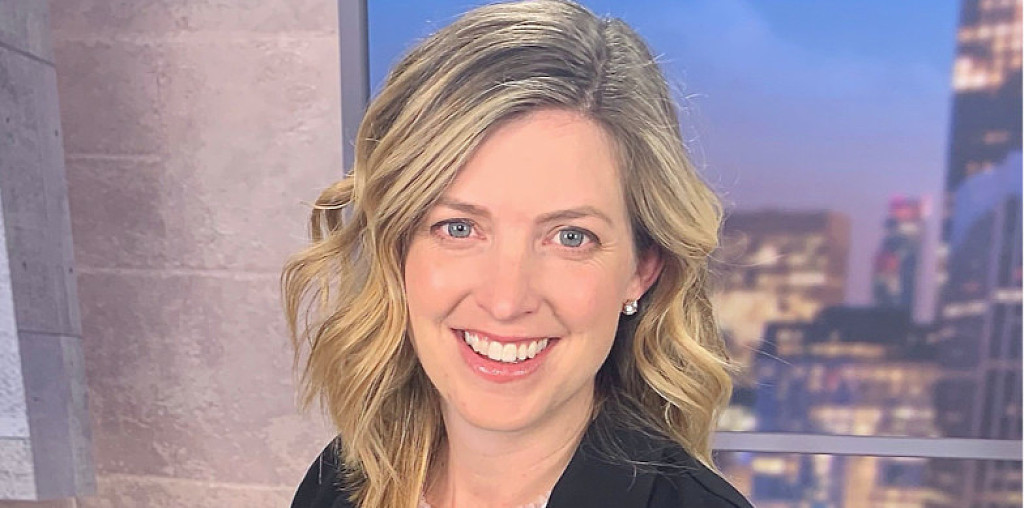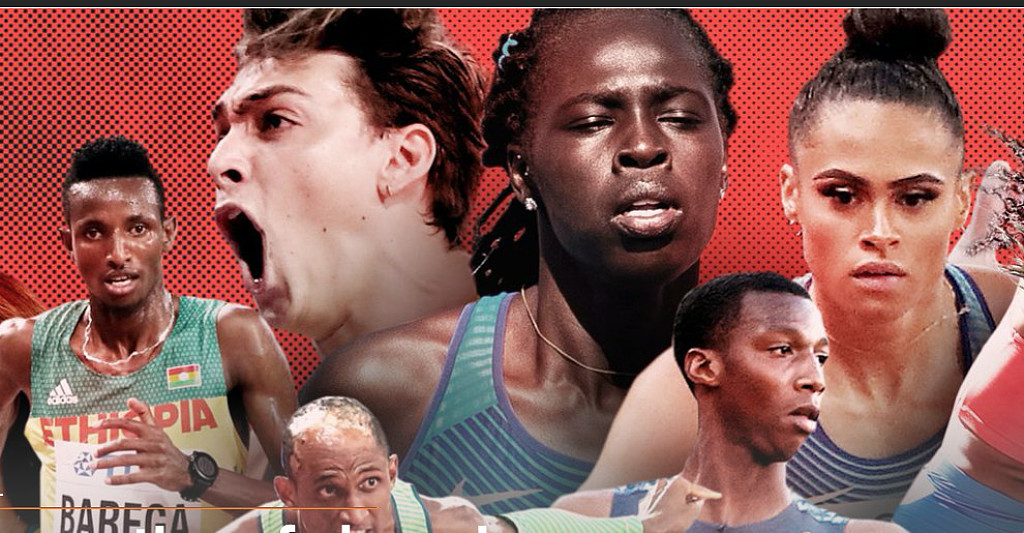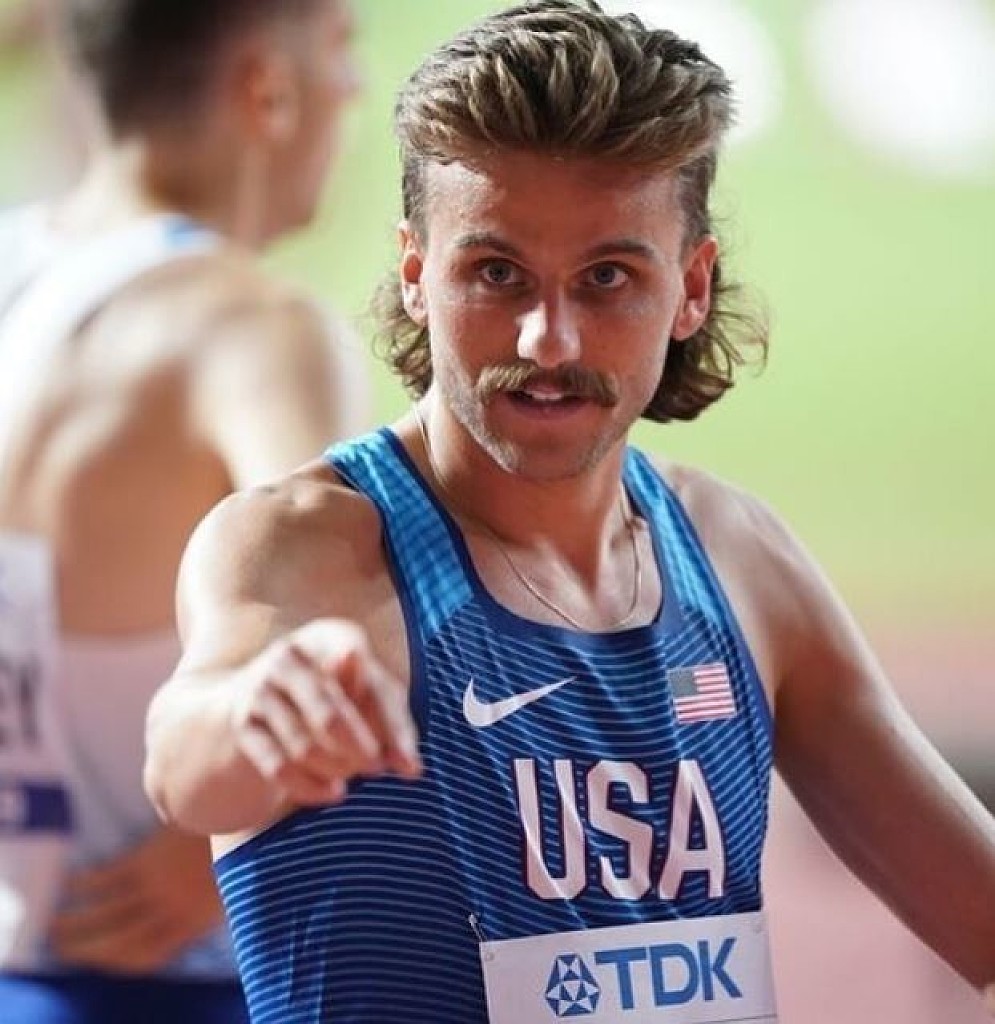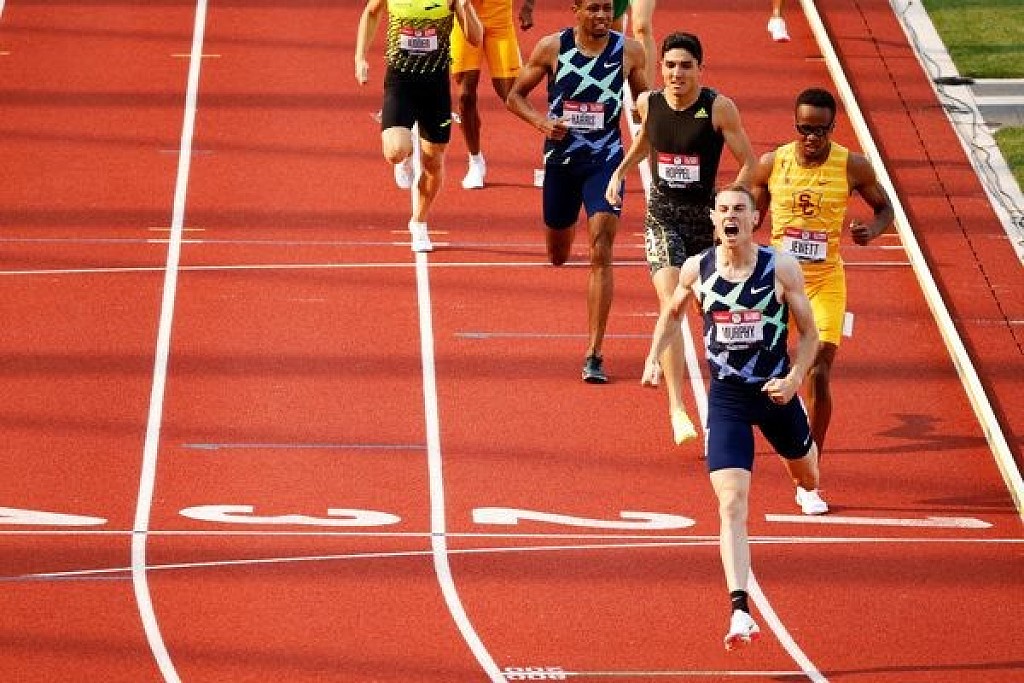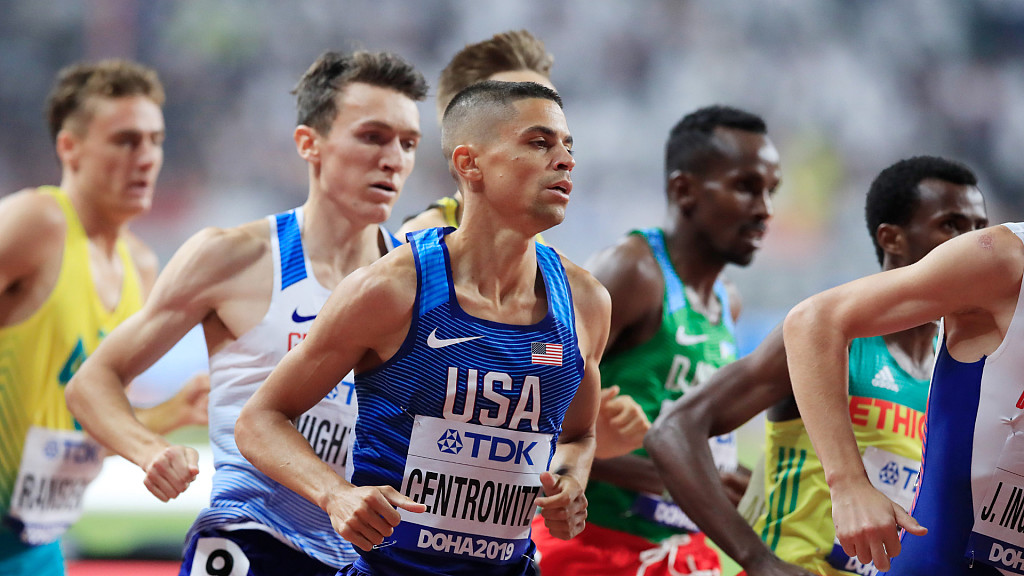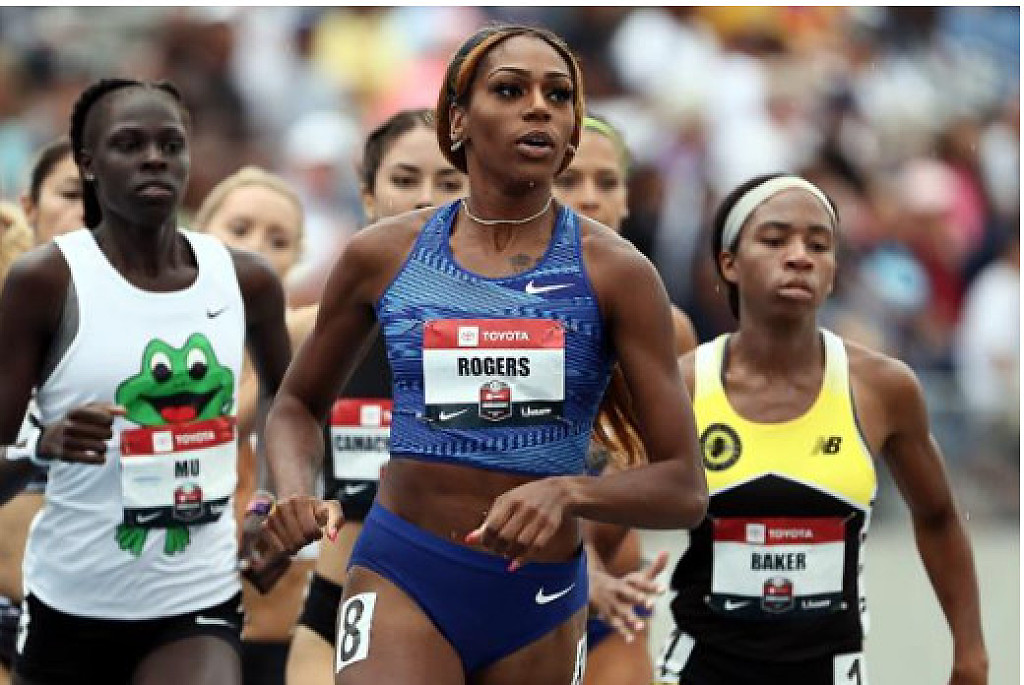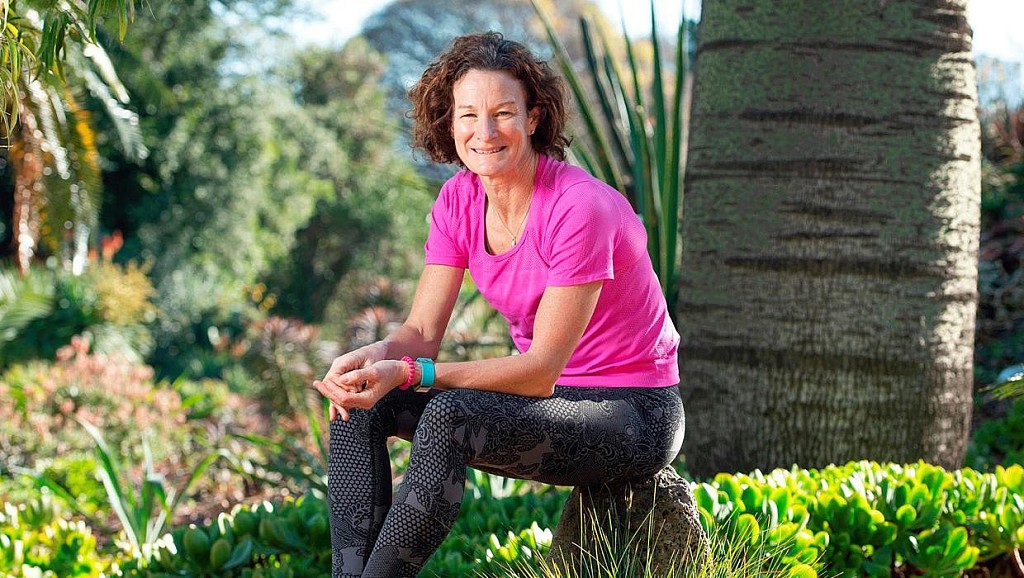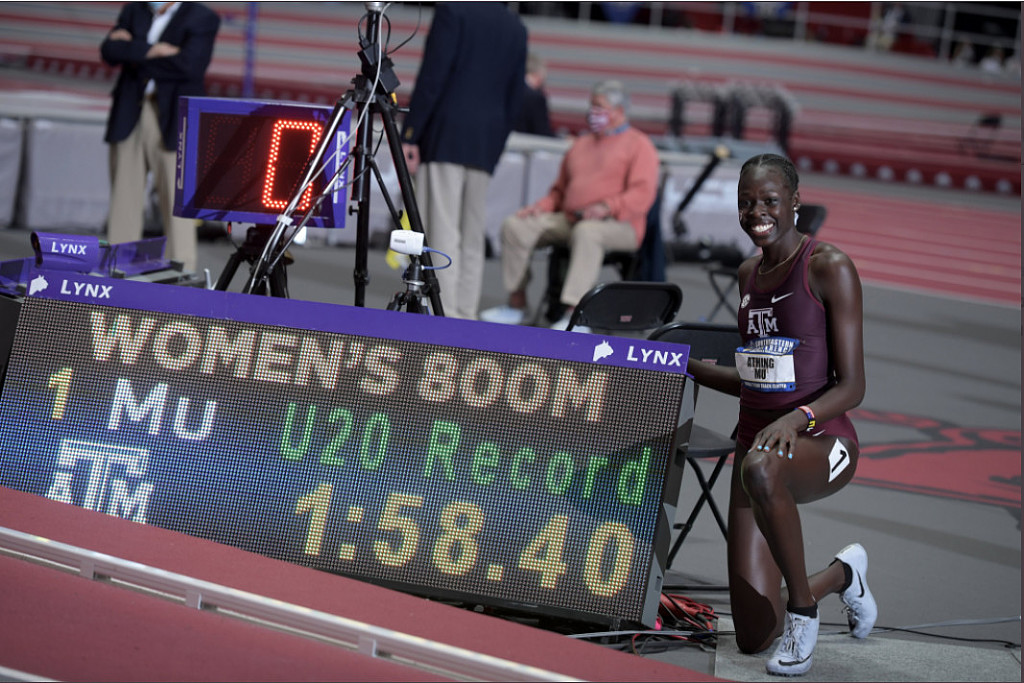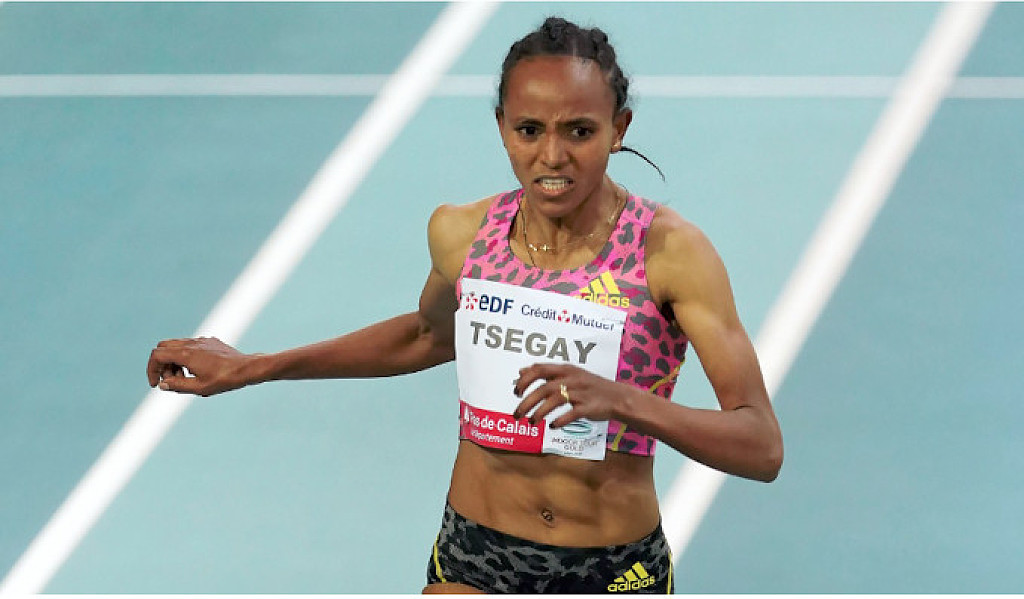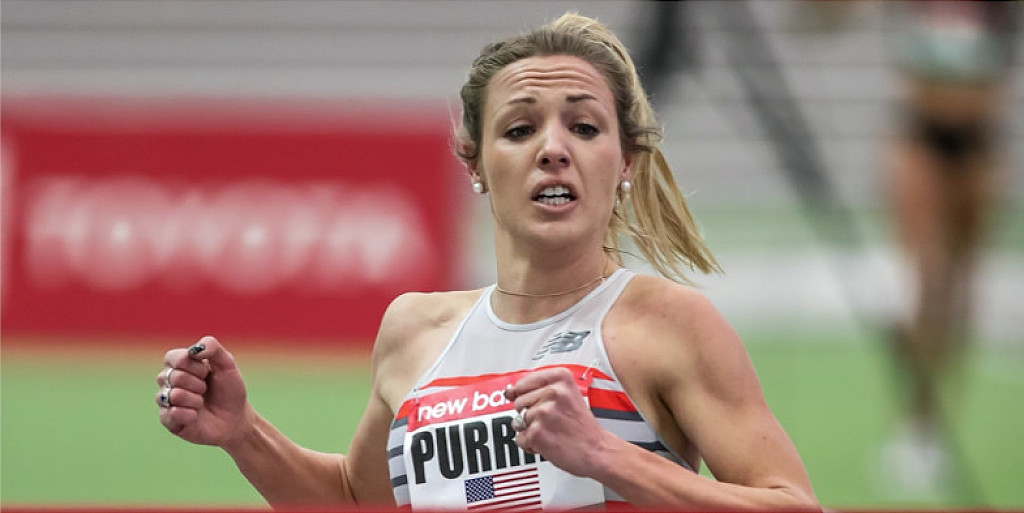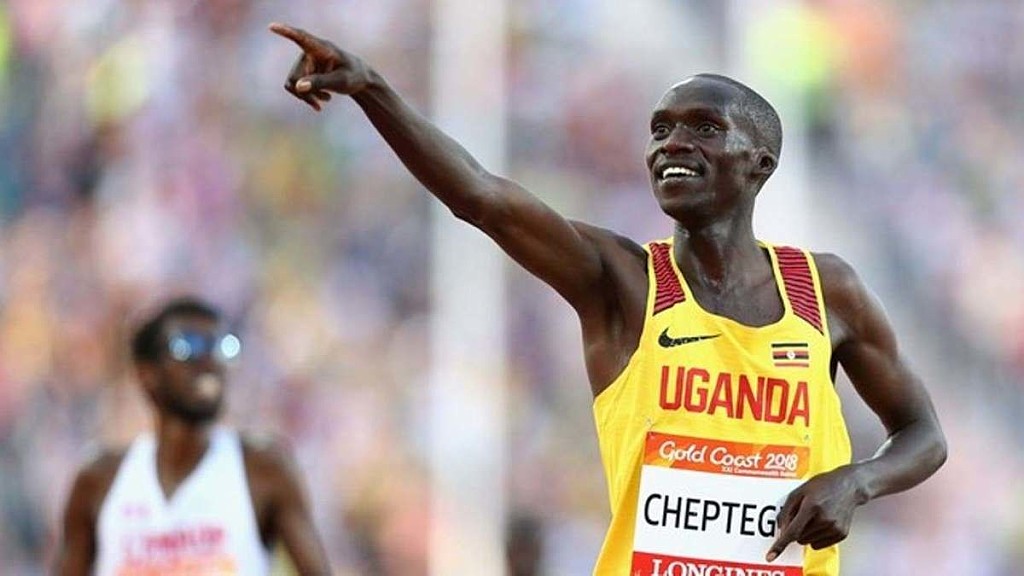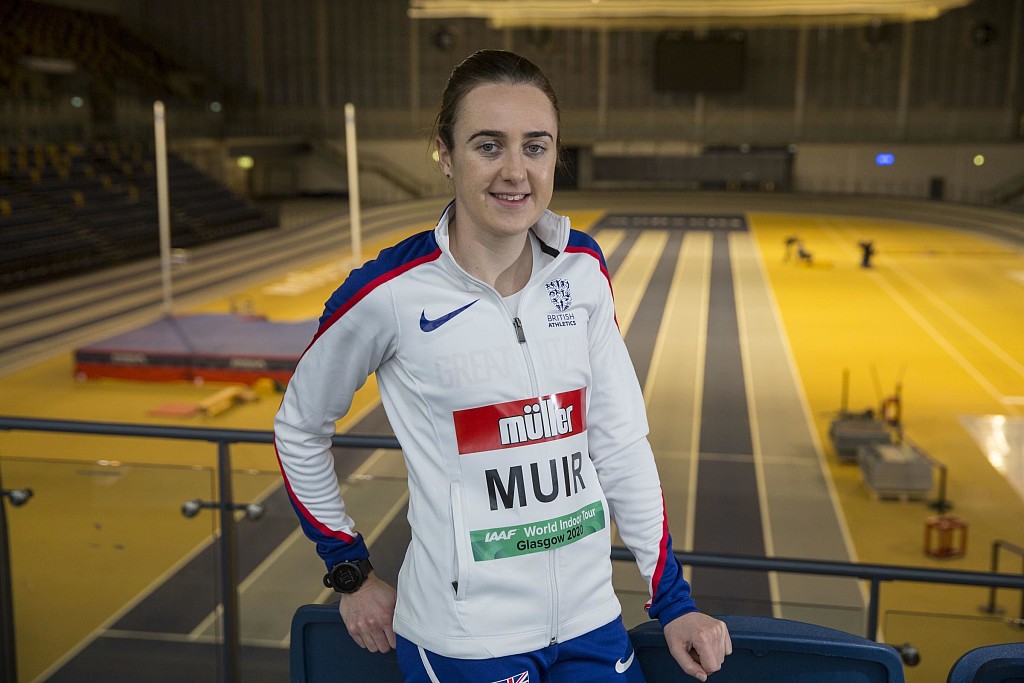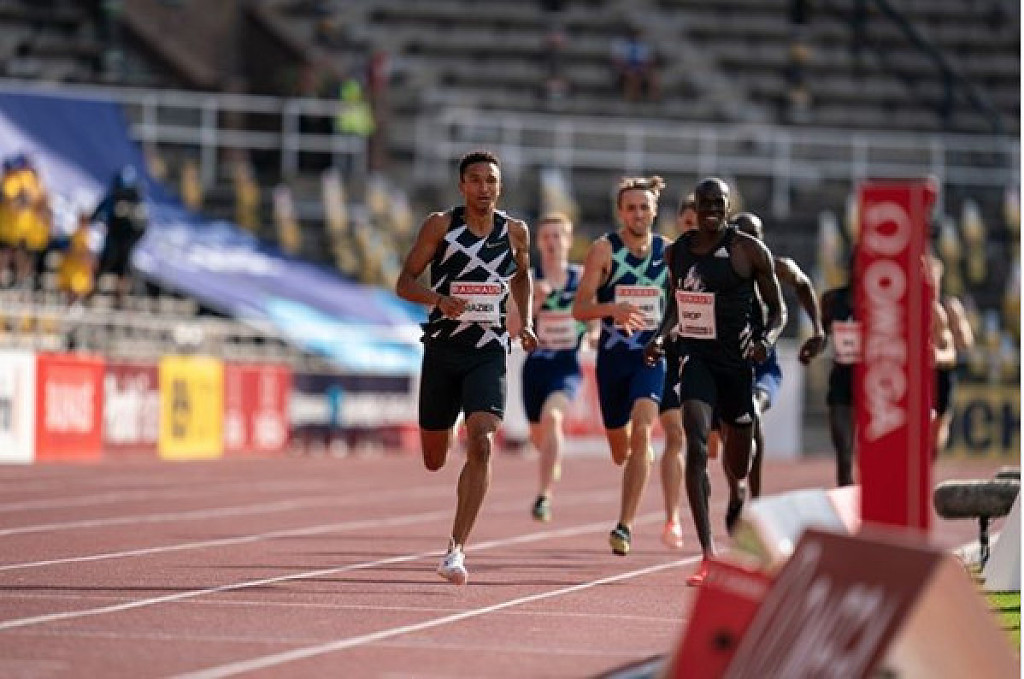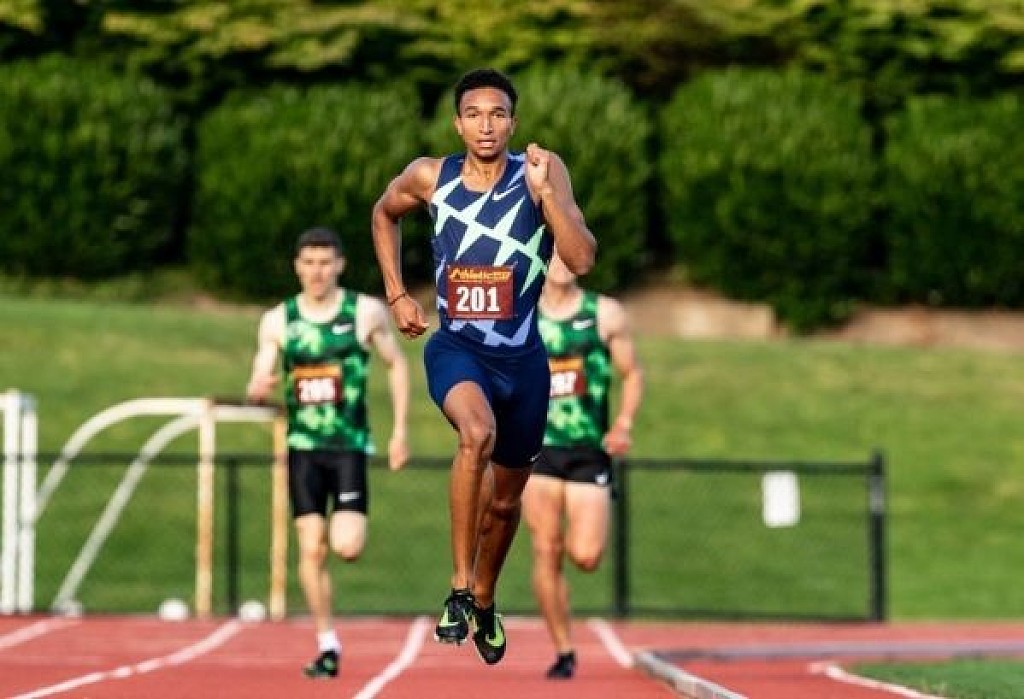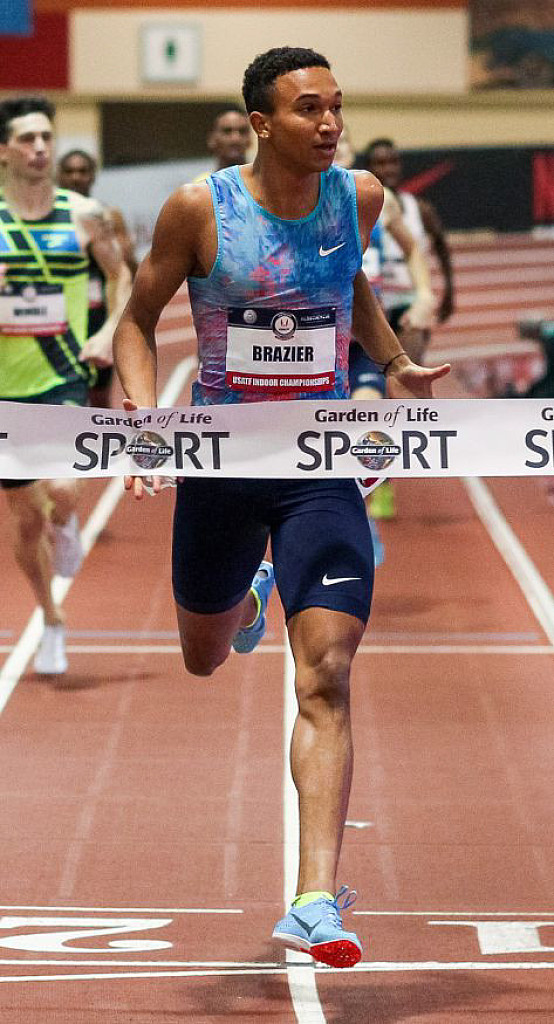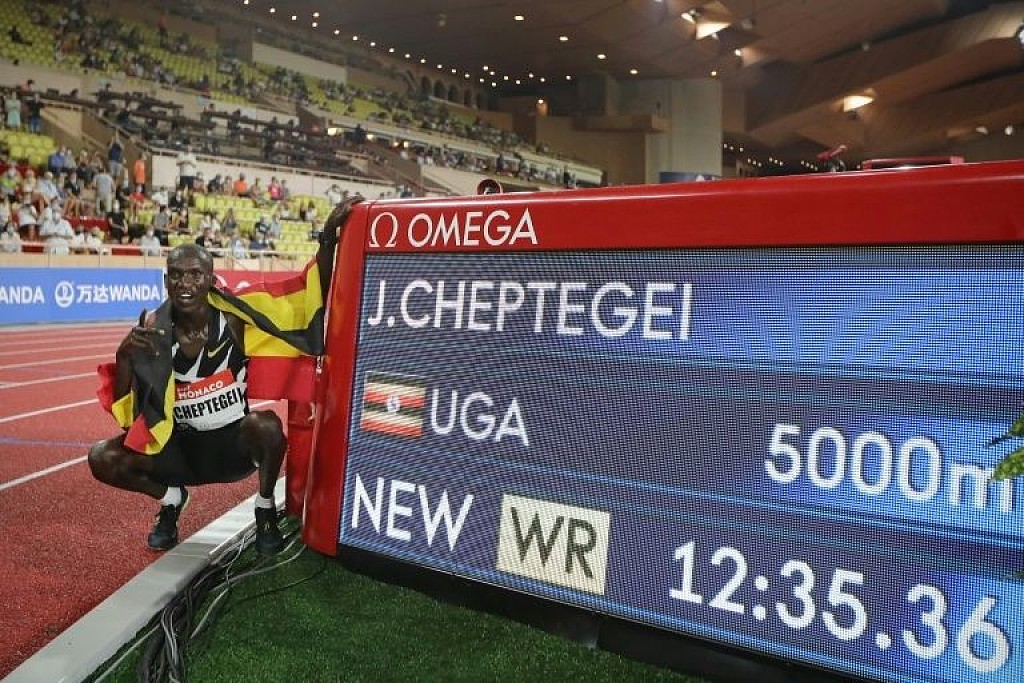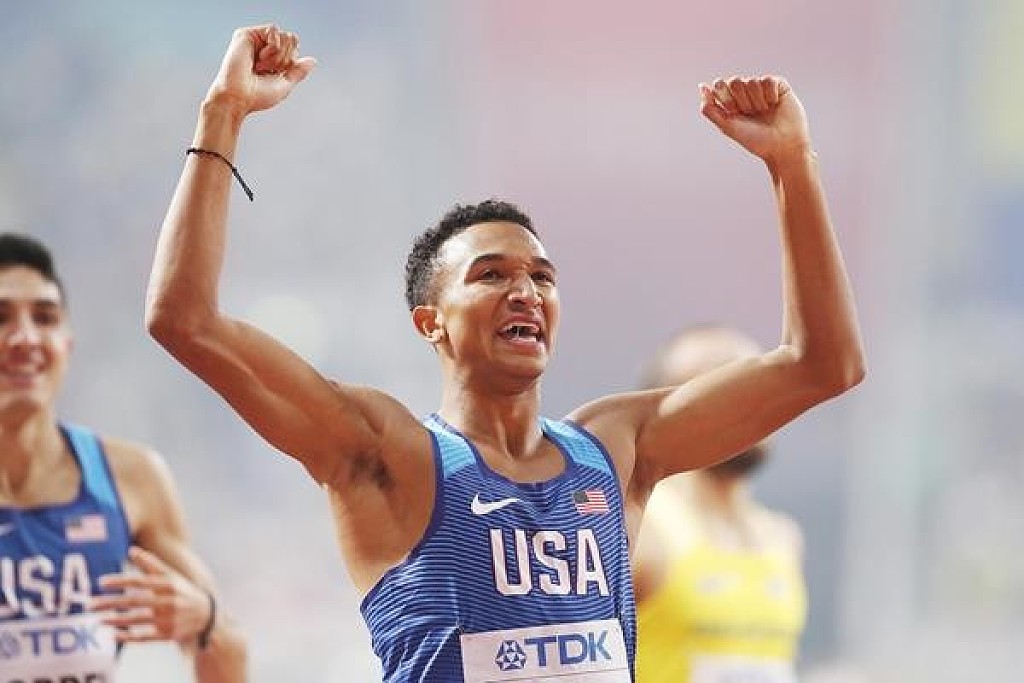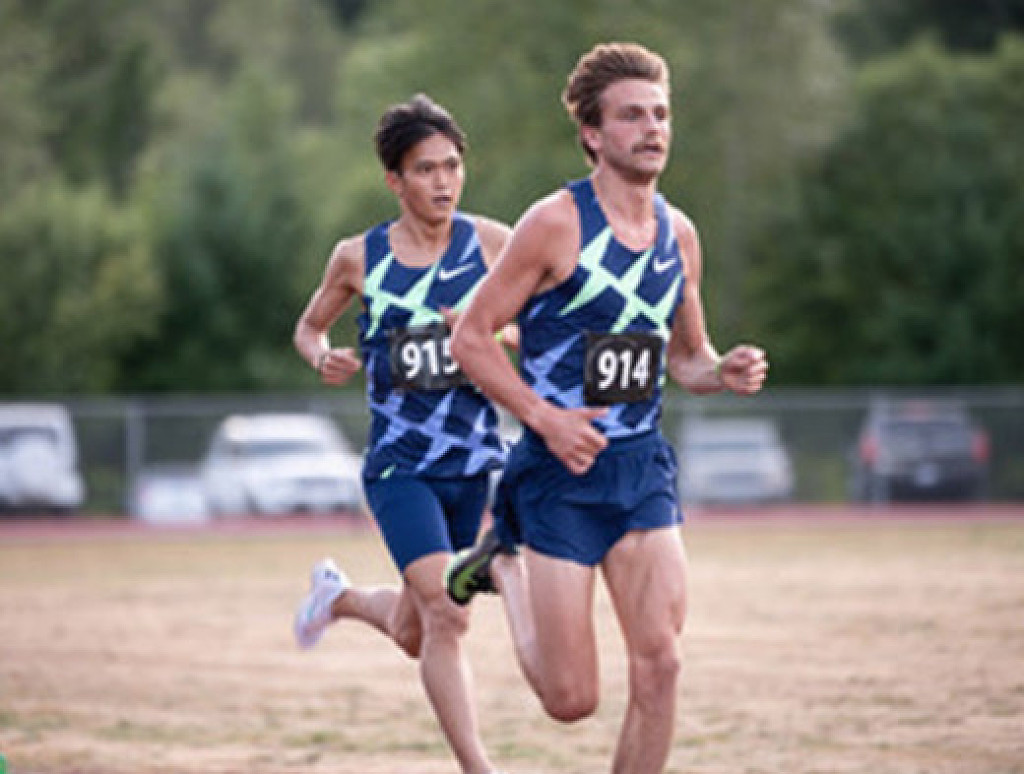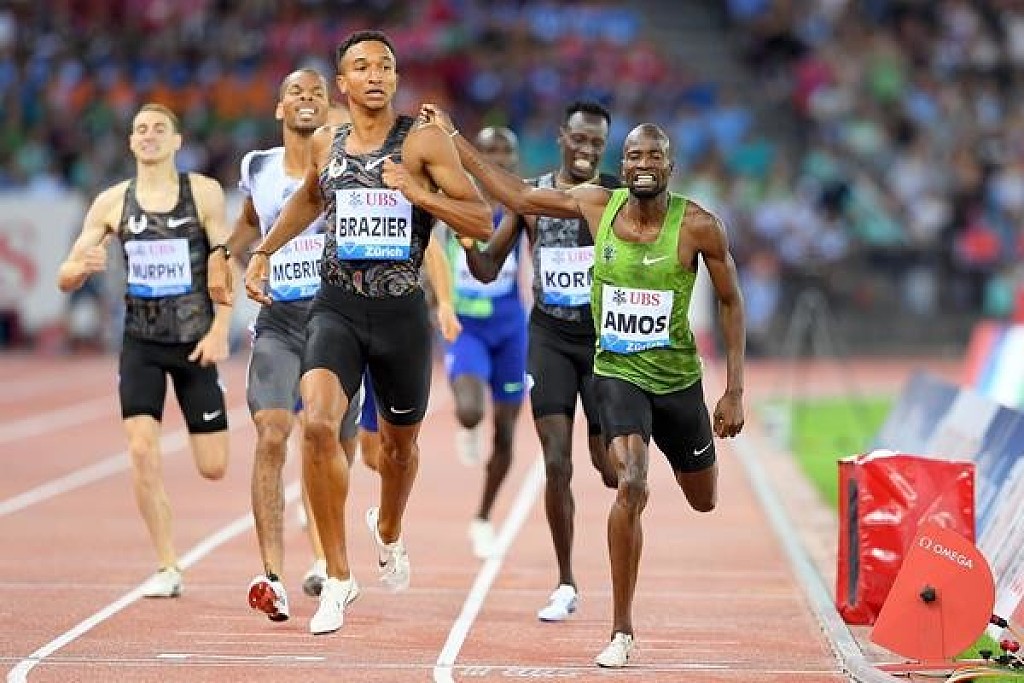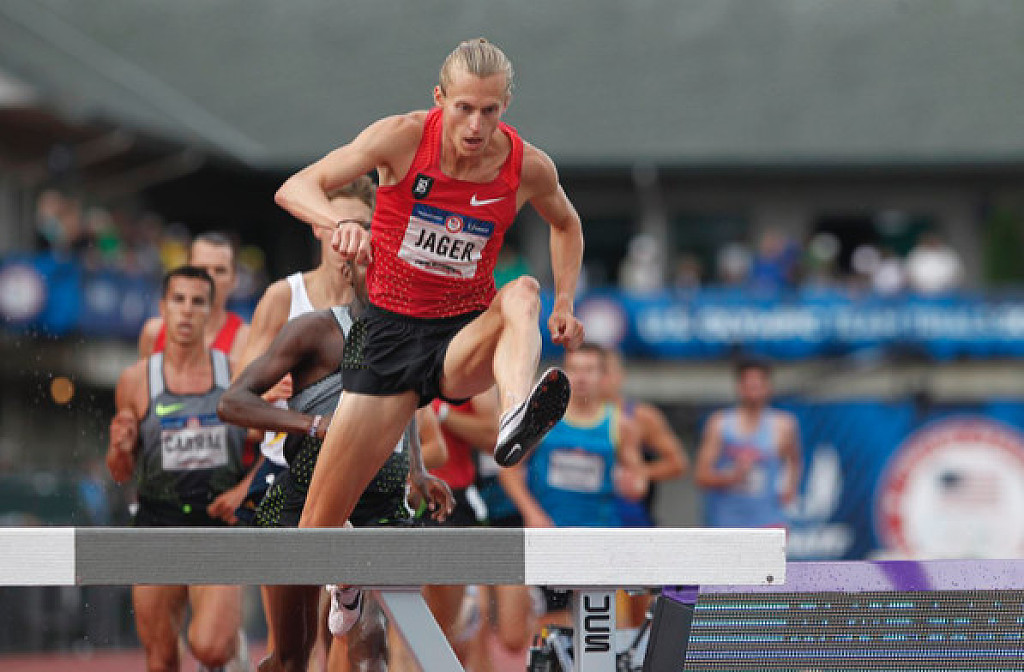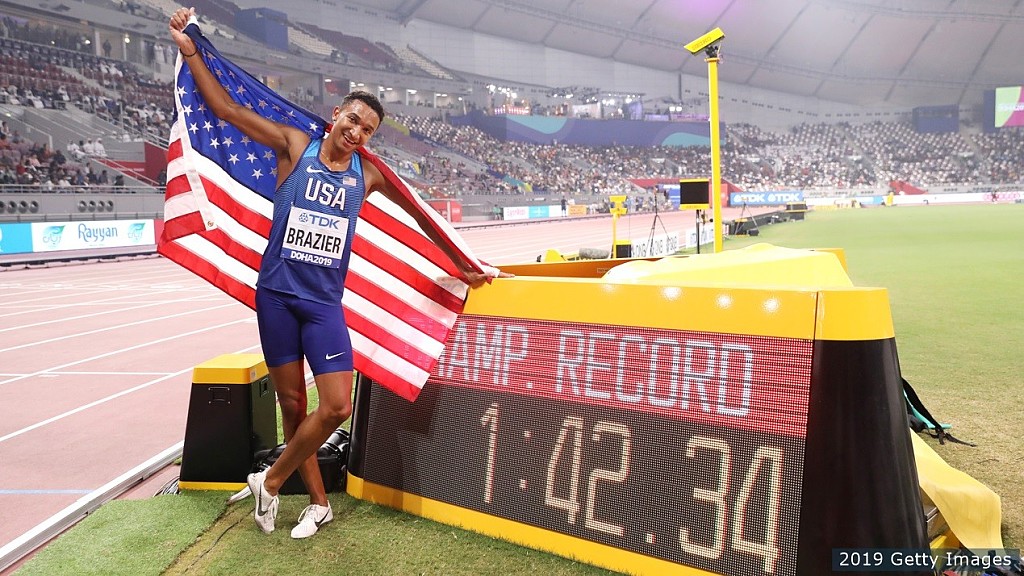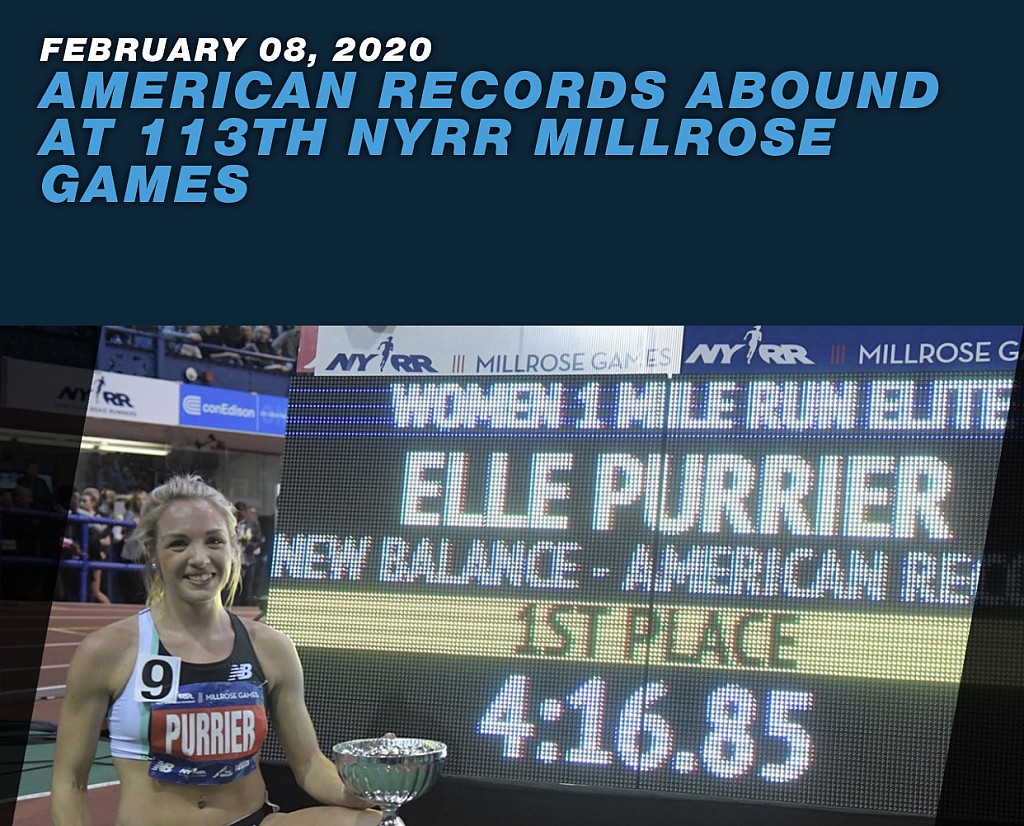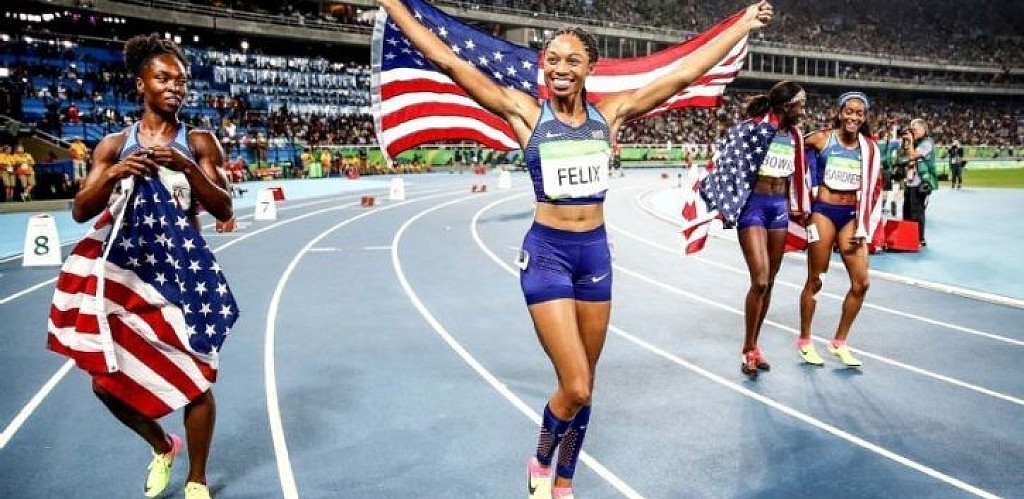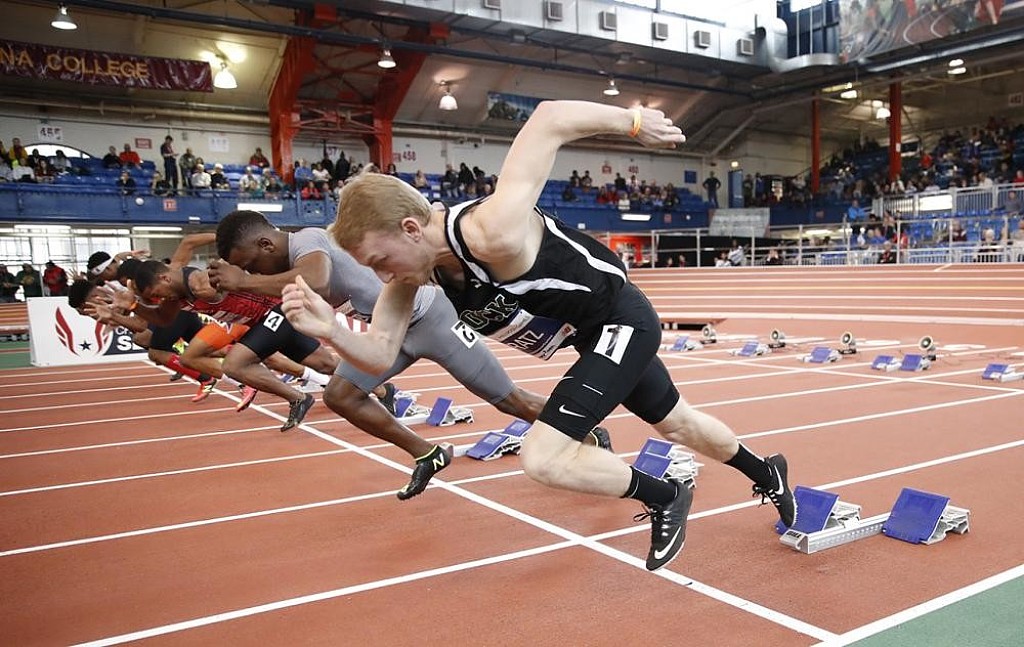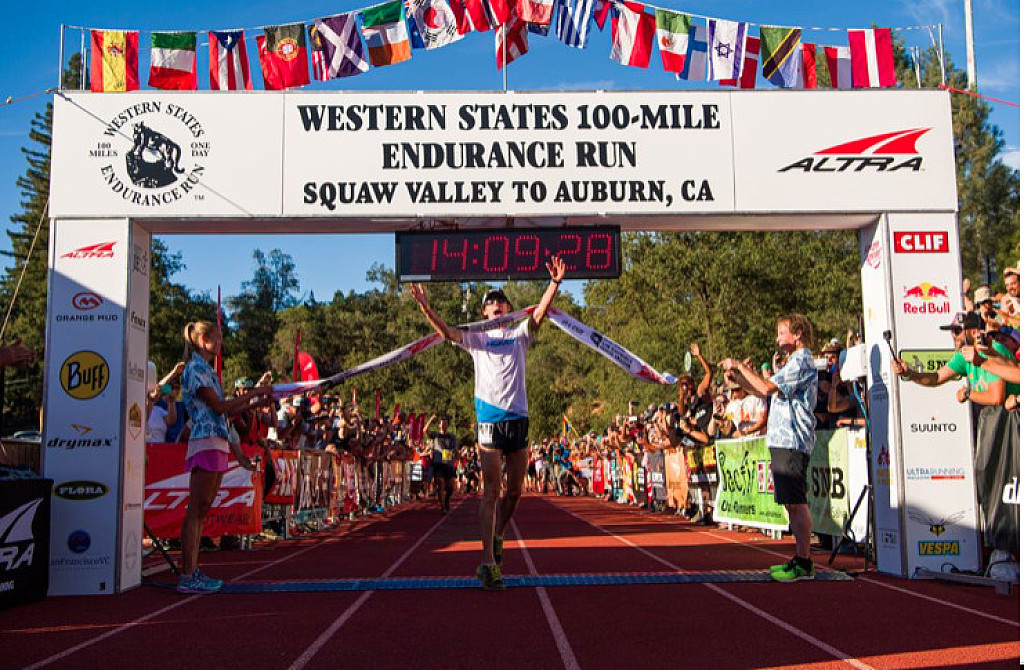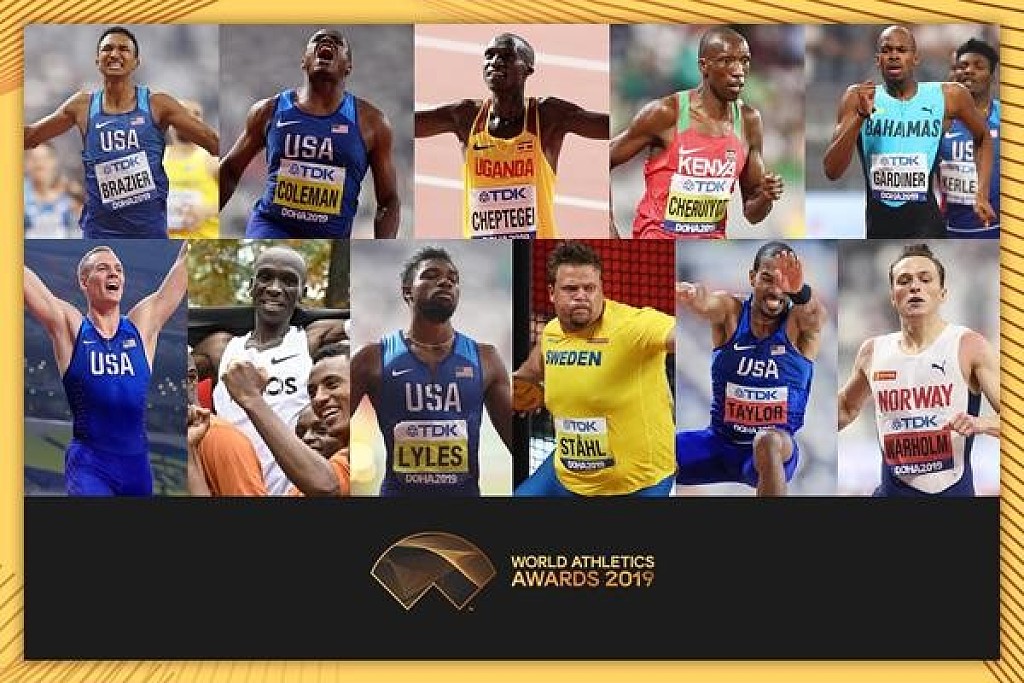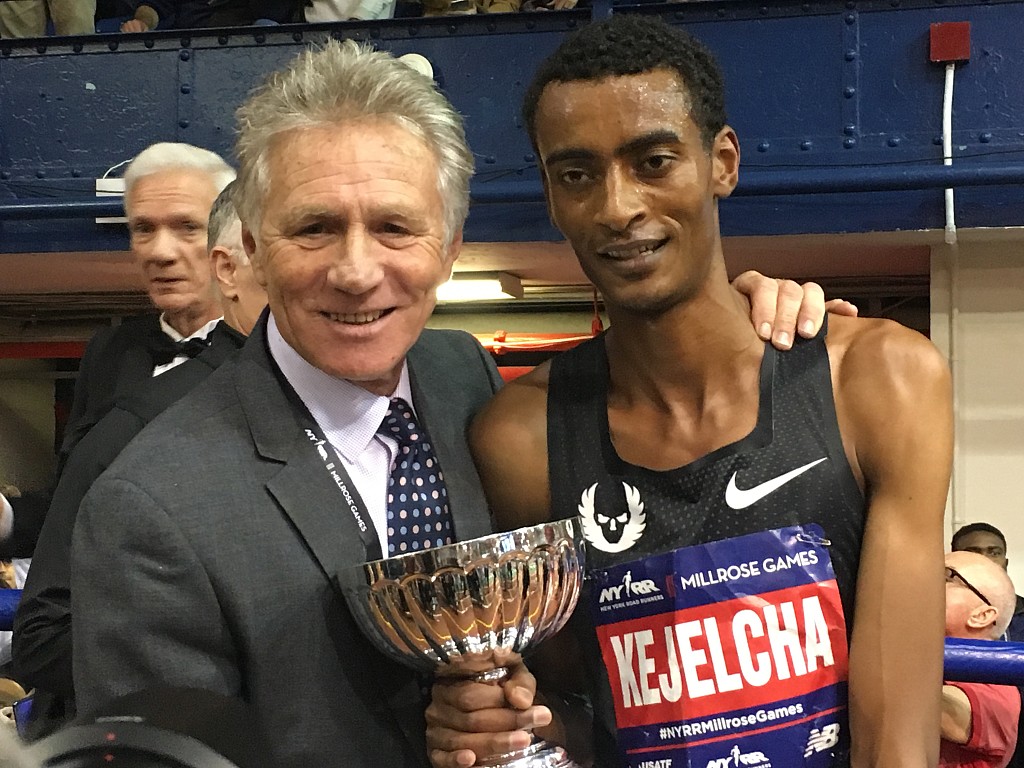Running News Daily
Running News Daily is edited by Bob Anderson. Send your news items to bob@mybestruns.com Advertising opportunities available. Train the Kenyan Way at KATA Kenya and Portugal owned and operated by Bob Anderson. Be sure to catch our movie A Long Run the movie KATA Running Camps and KATA Potato Farms - 31 now open in Kenya! https://kata.ke/
Index to Daily Posts · Sign Up For Updates · Run The World Feed
Articles tagged #Donavan Brazier
Today's Running News
Nike Continues Shuffle of Pro Coaches
Pete Julian’s Union Athletics Club will move to Colorado.
In the latest move by Nike to reconfigure its pro running teams, Pete Julian’s Union Athletics Club will move from Oregon to Colorado, sources tell Runner’s World.
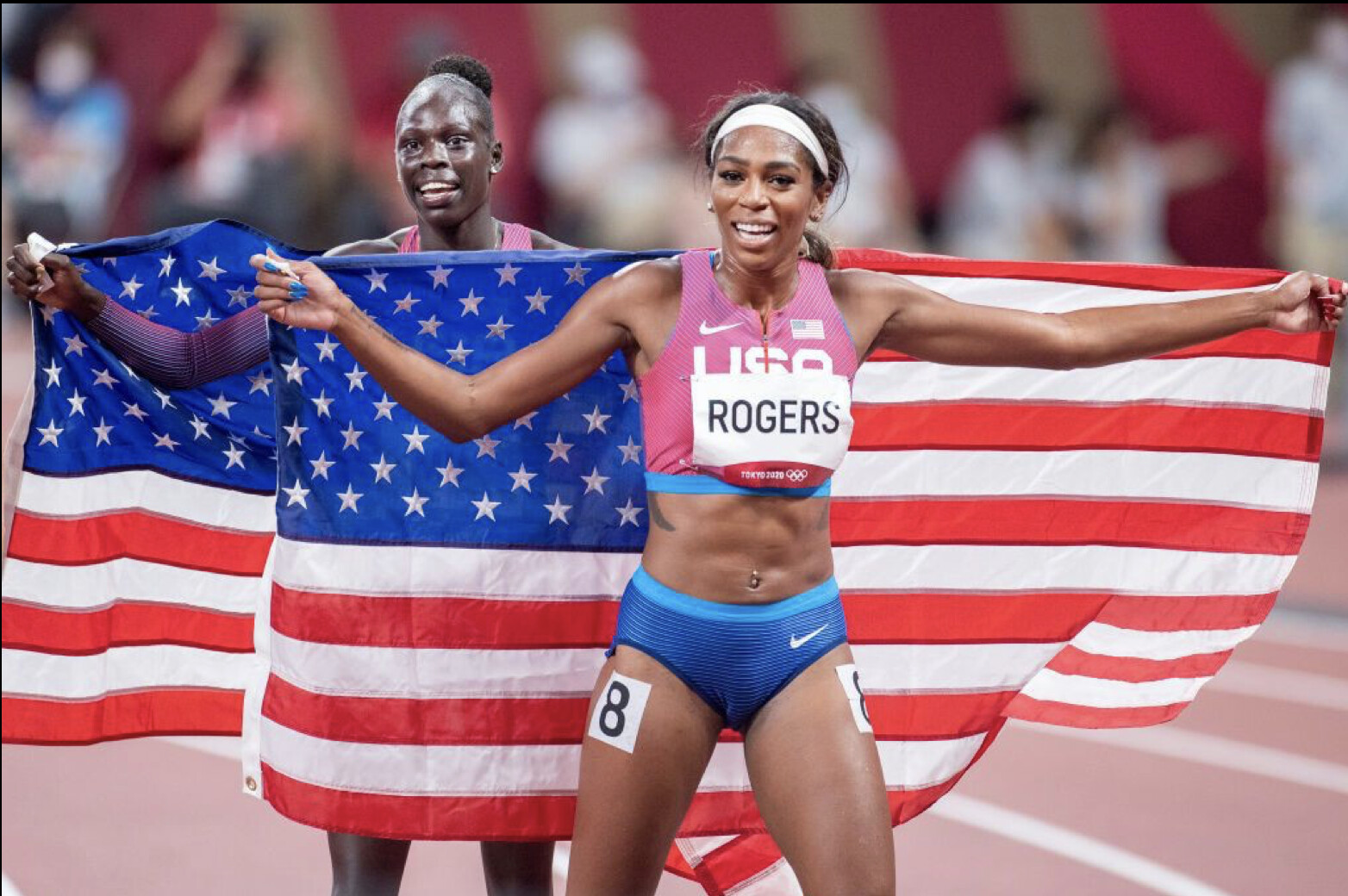
This move comes two weeks after it was announced that Mike Smith would leave his post at Northern Arizona University in June 2025 to start a Nike pro group.
Julian, reached by text by Runner’s World, did not deny the team was making the move but said he was unable to comment. Media relations representatives at Nike acknowledged questions from Runner’s World on July 19 and again on August 12, but they did not reply with any further information about the group’s move.
UAC’s 10 current athletes compete at a range of events. They include Raevyn Rogers, the 2021 Olympic bronze medalist in the 800 meters, and Sinclaire Johnson, the 2022 U.S. champion in the 1500 meters. Suguro Osako, a marathoner from Japan, is also listed on the roster; he finished 13th at the Olympics in Paris in 2:09:25.
It is unclear if all the athletes will go to Colorado with Julian. A message to Rogers via social media was not immediately returned. Rogers has strong ties to Oregon; she went to the University of Oregon and won five individual NCAA titles there. Her image graces the tower at Hayward Field in Eugene, and she is not known to have spent much time training at altitude, if any.
Depending on where in Colorado the group lands, athletes could be training at at least 5,200 feet of elevation. Altitude training is increasingly seen as essential for elite distance runners. Boulder, Colorado, which has long been a mecca for distance athletes, is already crowded with pros: On Athletics Club has a sizable pro group there, as does Team Boss, a group of elite distance runners anchored by steeplechaser Emma Coburn, who runs for New Balance.
Coaching and athlete turnover is common after the Olympic Games. Most pro athletes have contracts that take them through the end of the Olympic year, and some have an option in their contracts that allows a sponsor to sign them for an additional year.
Several high profile athletes have left the UAC in recent years. Jessica Hull returned to her native Australia and trains under her father; she won a silver medal in Paris. Donavan Brazier had great success under Julian in 2019, but LetsRun reported he left the UAC in 2024 after undergoing a fourth surgery on his left foot and lower leg. Fan favorite Craig Engels is now living in California and training under his college coach, Ryan Vanhoy.
Julian’s wife, Colleen Glyde Julian, is a professor of biomedical informatics at the University of Colorado’s medical school in Aurora, Colorado. He has long commuted to Portland, Oregon, from Denver several times each week for athlete workouts in Beaverton.
by Runner’s World
Login to leave a comment
Two-time Olympian Natoya Goule set to compete at Millrose Games
Two-time Olympian Natoya Goule has joined the list of athletes down to compete at the Millrose Games set to take place in three weeks time on February 11 at the Nike Track & Field Center at the Armory in New York.
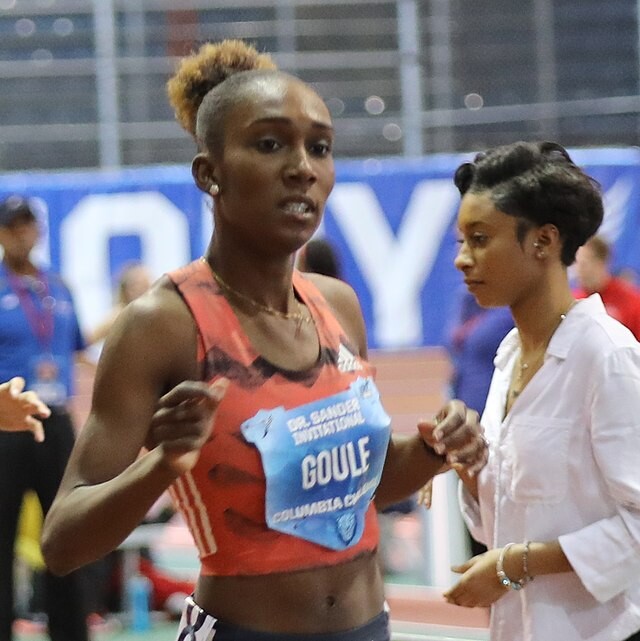
The national 800 meters record holder Goule will join several Olympians and national champions at the meet including world and Olympic 800 meters champion Athing Mu of the USA to contest the women’s 600 meters event.
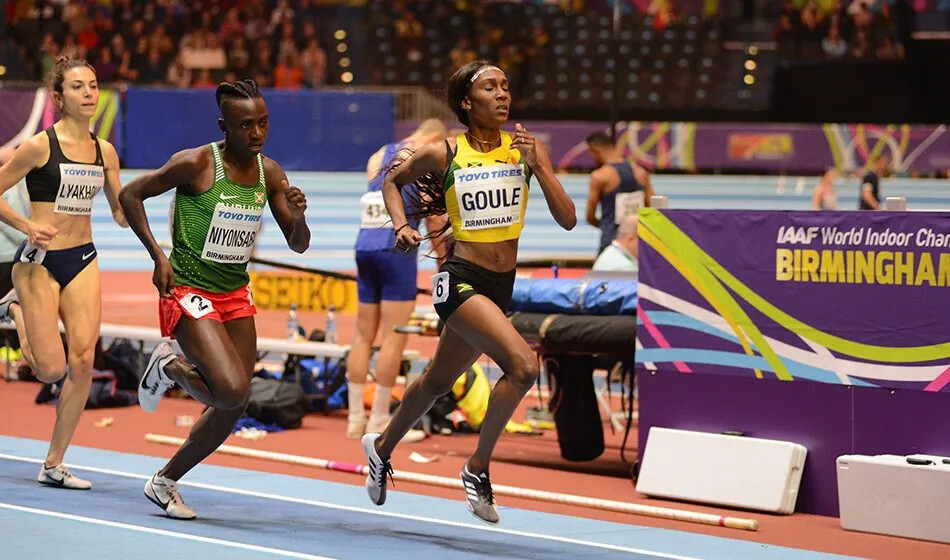
World Championships semi-finalist Ackeem Blake is also listed to compete at the World Athletics Indoor Tour gold meet where he will compete against Christian Coleman, Noah Lyles, and Ronnie Baker, three of the best sprinters in the world, ……………….in the men’s 60 meters dash
Olympic sprint relay gold medalist Briana Williams will line up against the U.S. Olympic bronze medalist and sprint sensation Gabby Thomas in the women’s 60 meters and Olympic finalist Christopher Taylor will take on 800 meters World Champion Donavan Brazier in the men’s 400 meters.
by Dwight Fraser
Login to leave a comment
NYRR Millrose Games
The Pinnacle of Indoor Track & Field The NYRR Millrose Games, first held in 1908, remains the premier indoor track and field competition in the United States. The 2025 edition will once again bring the world’s top professional, collegiate, and high school athletes to New York City for a day of thrilling competition. Hosted at the New Balance Track &...
more...USA names 151-strong team for World Championships in Oregon
A team of 151 athletes will represent the USA on home soil at the World Athletics Championships Oregon22 on July 15-24.
Multiple global champions and world record-holders feature in the squad as Eugene’s Hayward Field gets ready to welcome the world for the first-ever outdoor World Athletics Championships to be hosted in the USA.
World record-holder and Olympic champion Sydney McLaughlin will take on the former world record-holder and reigning world champion Dalilah Muhammad as they look to further cement the US women’s global dominance in the 400m hurdles final on July 22.
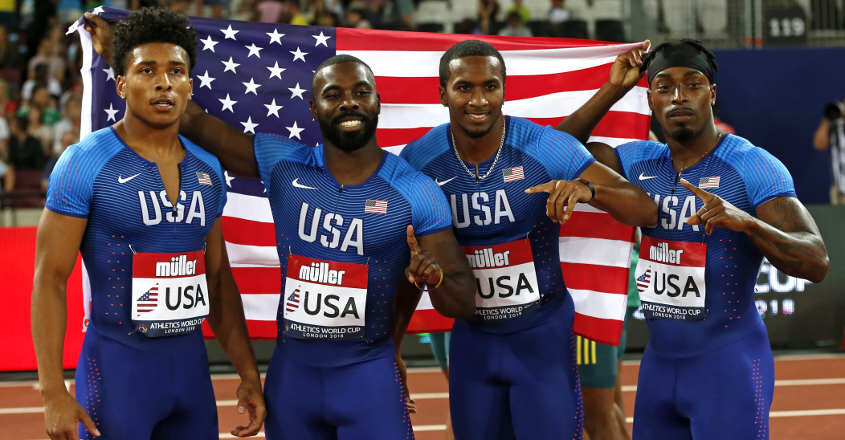
In the men’s shot put on July 17, world record-holder and Olympic champion Ryan Crouser will go after the one title that has so far eluded him – that of world champion – and will take on two-time world champion Joe Kovacs.
Such is the strength of the women’s 800m squad of Athing Mu, Ajee Wilson and Raevyn Rogers, as well as the men’s 200m team of Noah Lyles, Erriyon Knighton, Fred Kerley and Kenny Bednarek, that athletes will be aiming for USA medal sweeps.
Returning to defend the titles they won in Doha in 2019 are Nia Ali (women's 100m hurdles), Donavan Brazier (men's 800m), Christian Coleman (men's 100m), Grant Holloway (men's 110m hurdles), Kovacs (men's shot put), Lyles (men's 200m), Muhammad (women's 400m hurdles), DeAnna Price (women's hammer) and Christian Taylor (men's triple jump).
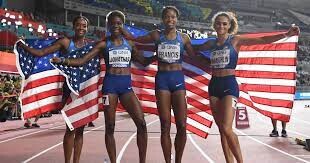
Making her 10th World Championships appearance will be Allyson Felix, who has 18 world medals, including 13 golds, to her name and will be in the mixed 4x400m pool.
“I couldn’t be prouder to lead this amazing team for this once-in-a-lifetime event,” said USATF CEO Max Siegel. “We have been given the unique opportunity to impact the track and field landscape in the US, and we’ve put our best team forward.”
USA team for Oregon
Women
100m: Aleia Hobbs, Melissa Jefferson, Twanisha Terry
200m: Tamara Clark, Jenna Prandini, Abby Steiner
400m: Talitha Diggs, Kendall Ellis, Lynna Irby
800m: Athing Mu, Raevyn Rogers, Ajee Wilson
1500m: Sinclaire Johnson, Cory McGee, Elle St. Pierre
5000m: Elise Cranny, Emily Infeld, Karissa Schweizer
10,000m: Alicia Monson, Natosha Rogers, Karissa Schweizer
Marathon: Emma Bates, Keira D’Amato, Sara Hall
3000m steeplechase: Emma Coburn, Courtney Frerichs, Courtney Wayment
100m hurdles: Nia Ali, Alia Armstrong, Keni Harrison, Alaysha Johnson
400m hurdles: Shamier Little, Sydney McLaughlin, Dalilah Muhammad, Britton Wilson
Heptathlon: Michelle Atherley, Anna Hall, Kendell Williams, Ashtin Zamzow-Mahler
High jump: Vashti Cunningham, Rachel Glenn, Rachel McCoy
Pole vault: Gabriela Leon, Sandi Morris, Katie Nageotte
Long jump: Quanesha Burks, Tiffany Flynn, Jasmine Moore
Triple jump: Tori Franklin, Jasmine Moore, Keturah Orji
Shot put: Adelaide Aquilla, Chase Ealey, Maggie Ewen, Jessica Woodard
Discus: Valarie Allman, Rachel Dincoff, Veronica Fraley, Laulauga Tausaga-Collins
Hammer: Brooke Andersen, Annette Echikunwoke, Janee Kassanavoid, DeAnna Price
Javelin: Ariana Ince, Maggie Malone, Kara Winger
20km race walk: Robyn Stevens, Miranda Melville
35km race walk: Stephanie Casey, Miranda Melville, Maria Michta-Coffey
4x100m: Celera Barnes, Tamari Davis, Gabby Thomas (plus athletes named in individual sprints)
4x400m: Wadeline Jonathas, Jaide Stepter, Kaylin Whitney (plus athletes named in individual sprints)
Men
100m: Marvin Bracy, Trayvon Bromell, Christian Coleman, Fred Kerley
200m: Kenny Bednarek, Fred Kerley, Erriyon Knighton, Noah Lyles
400m: Champion Allison, Michael Cherry, Michael Norman, Randolph Ross
800m: Donavan Brazier, Bryce Hoppel, Jonah Koech, Brandon Miller
1500m: Johnny Gregorek, Cooper Teare, Josh Thompson
5000m: Grant Fisher, Woody Kincaid, Abdihamid Nur
10,000m: Grant Fisher, Joe Klecker, Sean McGorty
Marathon: Elkanah Kibet, Colin Mickow, Galen Rupp
3000m steeplechase: Hillary Bor, Evan Jager, Benard Keter
110m hurdles: Devon Allen, Trey Cunningham, Grant Holloway, Daniel Roberts
400m hurdles: Trevor Bassitt, Rai Benjamin, Khallifah Rosser
Decathlon: Steven Bastien, Kyle Garland, Zach ZiemekHigh jump: Darius Carbin, JuVaughn Harrison, Shelby McEwen
Pole vault: Andrew Irwin, Chris Nilsen, Luke WinderLong jump: Marquis Dendy, Steffin McCarter, Will Williams
Triple jump: Chris Benard, Will Claye, Donald Scott, Christian Taylor
Shot put: Josh Awotunde, Ryan Crouser, Joe Kovacs, Tripp Piperi Discus: Andrew Evans, Sam Mattis, Brian Williams
Hammer: Daniel Haugh, Rudy Winkler, Alex Young
Javelin: Ethan Dabbs, Tim Glover, Curtis Thompson
20km race walk: Nick Christie, Dan Nehnevaj
35km race walk: Nick Christie
4x100m: Kyree King, Josephus Lyles, Elijah Hall-Thompson (plus athletes named in individual sprints)
4x400m: Bryce Deadmon, Vernon Norwood, Elija Godwin (plus athletes named in individual sprints)
Mixed
4x400m: Allyson Felix, Kennedy Simon, Ismail Turner, Noah Williams (plus athletes named in individual sprints).
by World Athletics
Login to leave a comment
World Athletics Championships Budapest23
Budapest is a true capital of sports, which is one of the reasons why the World Athletics Championships Budapest 2023 is in the right place here. Here are some of the most important world athletics events and venues where we have witnessed moments of sporting history. Throughout the 125-year history of Hungarian athletics, the country and Budapest have hosted numerous...
more...Five high school boys have combined to break the four-minute barrier seven times in 2022 and no one has enjoyed it more than Jim Ryun
Jim Ryun was the first high school boy to break the four-minute barrier in the mile as a Kansas 17-year-old in 1964 and went on to a legendary track and field career that included three Olympic appearances in the 1,500m, a silver medal in the 1968 Mexico City Olympics, and numerous American and world records.
Ryun’s name always surfaces when a high schooler dips under 4 minutes in the mile. And in 2022, his name has been coming up a lot.
Ryun’s career was also in the spotlight earlier this month when he was one of 30 former college track and field athletes inducted into the inaugural class of the USTFCCCA’s Athlete Hall of Fame in conjunction with the NCAA Championships in Eugene, Ore.
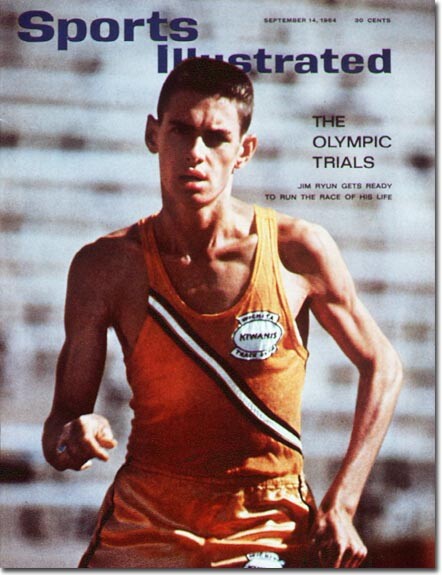
The original 4-minute high school barrier breaker celebrates the resurgence of American high school distance running and says for too long runners were held back in fear of what would happen if they ran under 4 minutes for the mile.
“I think they realize it’s not a barrier that can’t be broken, it’s more of a matter that if you break it,” Ryun said, “will you go on from there, which you can because we’re seeing more and more of them that are doing that.
“It’s not the barrier that it once was, should never have been there. For a long time, there were three of us. Myself, Marty Liquori and Tim Danielson. We were the only (sub) 4-minute milers from high school for years and I think it was the result of people being afraid of that, and coaches saying if you run too fast, too soon you’ll never make it very far.”
Growing up, Ryun often wondered if he would ever be successful in an athletic endeavor. He tried basketball and football and was cut from his church baseball team. At a high school assembly, Bob Timmons, the school’s track and field and cross country coach, encouraged students to run on his cross country team in the fall.
Ryun had never run more than one lap around a track before joining the cross country team, but in one season at Wichita East High School, he went from the last runner on the third-string team to a sixth-place finish at the Kansas state meet.
“Running was so new to me, I didn’t know who the heroes were,” Ryun recalled. “In fact, my first thought was I wanted to be a baseball, football, basketball player. Running, what’s that? So, it took a while. The first book Coach Timmons gave to me was about Emil Zatopek, the great Olympian, so I read that, and it began helping me understand about the sport.”
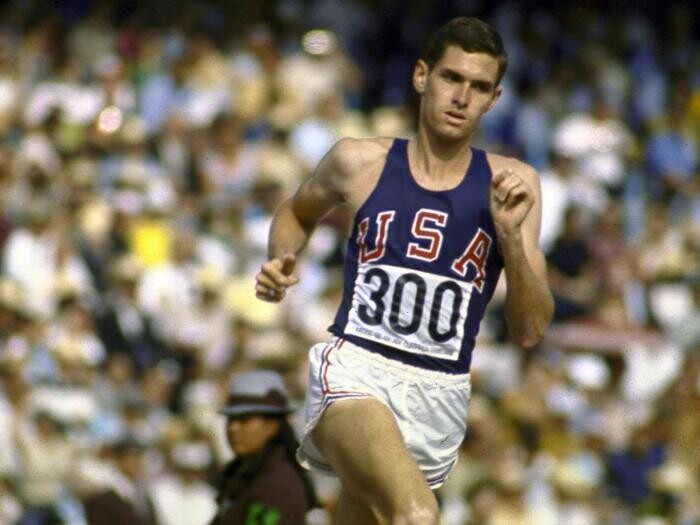
Ryun said Timmons was convinced he could be the first high school runner to break 4 minutes in the mile. That came true on June 5, 1964, when Ryun ran 3 minutes, 59.0 seconds to finish eighth at the Compton Invitational in Los Angeles.
“The goal originally was my coach’s because I was the kid that got cut from the church baseball team, didn’t have great talent and when I started running, I was looking for direction,” Ryun said. "And he began basically teaching me about goals, how to reach goals, and gave me workouts to get there. The night that I ran 4 minutes, 3:59.0, I didn’t sleep that night (before) because I realized that it was his goal.
“But my thought was, what happens if I take ownership, ownership being there’s certain things you as an athlete know you could do like maybe a little extra weightlifting, better eating. It was a transformational moment, because I mean when you finish eighth in a race and become the first kid to run under 4 minutes, that has to change your life – and it did.”
Ryun’s running career took off from there. He made the 1964 U.S. Olympic team in the 1,500m that went to Tokyo and was the last U.S. high school men’s track and field athlete to make the U.S. Olympic team until teenager Erriyon Knighton qualified for the 2020 Tokyo Olympics in the 200m and finished fourth there.
As a high school senior, Ryun broke 4 minutes four more times. His time of 3:58.3 at the 1965 Kansas state meet was the first time 4 minutes was broken in a high school-only meet. On June 4, 1965, Ryun returned to the Compton Relays, the site of his first sub-4-minute mile and ran 3:56.8. A little over three weeks later, he ran 3:55.3 at the U.S. AAU Championships in San Diego and beat New Zealand’s Peter Snell, the 1964 Olympic champion in the 800m and 1,500m.
Ryun, who would stay close to home and attend Kansas University after graduating from high school in 1965, roomed with a former Jayhawks great, Billy Mills, during U.S. training camps leading up to the 1964 Olympics. In Tokyo, Mills stunned the world by becoming the only U.S. athlete to ever win the Olympic 10,000m.
In 1966, Tim Danielson became the second American high schooler to break 4 minutes when he ran 3:59.4. A year later, Marty Liquori ran 3:59.8 to become the third high schooler under 4 minutes.
Ryun and Liquori had illustrious careers after high school, particularly Ryun. At age 19 in 1966, Ryun set two world records, first in the 800m (1:44.9), and then the mile (3:51.3). He was the NCAA indoor mile champion for Kansas in 1967, 1968 and 1969, and the 1967 outdoor NCAA mile champion. In 1967, he set a 1,500m world record of 3:33.1 that stood for seven years.
That same year, he lowered his mile world record to 3:51.1., a mark that stood for almost eight years. Ryun was the last American man to hold the mile world record. He still holds American junior records for the mile (3:51.3) and 2-mile (8:25.1), and his 800m American junior record of 1:44.9 stood for exactly 50 years.
In 2003, ESPN.com ranked Ryun as the greatest U.S. high school athlete of the 20th century, ahead of Tiger Woods, LeBron James, Lew Alcindor (now Kareem Abdul-Jabbar), Wilt Chamberlain, Marion Jones, and others.
After Ryun, Danielson, and Liquori, the 4-minute mile wasn’t broken by a prep athlete again for more than 32 years until Alan Webb ran 3:59.86 at the New Balance Games in New York on Jan. 20, 2001. Sensing something special in Webb, the promoters of the Prefontaine Classic in Eugene, Ore., invited him to run in the Bowerman Mile, the signature event of the meet that has since become a Diamond League event, on May 27, 2001.
Morocco’s Hicham El Guerrouj, still the world record-holder in the 1,500m and mile, won the event in 3:49.92, followed by Kevin Sullivan of Canada and Bernard Lagat, then of Kenya, who later ran for the U.S. They helped pull Webb to a fifth-place finish in 3:53.43, breaking Ryun’s 36-year-old high school record.
“I thought he would. I just didn’t know how much he would break it by," Ryun said. “It was one of those moments in time where he had run well, but he needed somebody to help him get over that finish line, just as I did running under 4 minutes for the first time. You need someone to help set the pace. You can relax a little bit, and he was able to take advantage of that.
“So, there was no real surprise to me. The biggest surprise was that there weren’t more high school boys running under 4 minutes.”
It would be another 10 years before a high schooler would break 4 minutes in the mile. In 2015, Matthew Maton and Grant Fisher, now the U.S. record-holder in the men’s 10,000m, both ran 3:59.38 about one month apart. In 2016, two runners broke 4 minutes, including Drew Hunter, who did it twice in a 15-day span in February indoors, both times in New York.
The 4-minute barrier was broken by high schoolers once in 2017 and again in 2020 during the height of the COVID-19 pandemic. In 2021, Hobbs Kessler ran the fastest high school mile since Webb when he ran 3:57.66 indoors. Kessler later that year broke Ryun’s 1,500m American junior record of 3:36.1 that stood for almost 55 years.
The lack of American high school runners breaking 4 minutes in the mile for decades might be a big reason why U.S. men haven’t enjoyed much Olympic or international success until recently. When Matthew Centrowitz won the men’s 1,500m at the 2016 Rio de Janeiro Olympics, he was the first American man to do so since 1908. At the same Olympics, Clayton Murphy won the bronze medal in the 800m, the first American man to medal in the event since 1992.
And when the World Athletics Championships are hosted on U.S. soil for the first time next month in Eugene, Ore., the defending 800m men’s champion is American Donavan Brazier.
“If you look back in history, you’d see there was a dominance maybe by a country for a time like Great Britain had all those great runners. America at one time was dominant in that area as well,” Ryun said. “So, I think it’s a matter of floating from place to place, and I think it comes down to motivation. How motivated are you?
“Over time you start realizing that motivation has to come down to you be willing to get up, run in all kinds of weather, race all over the world and let those talents be developed that God’s given you. So, it takes time. I think America can come back with dominance, but it also comes down to how motivated you are. I see the Kenyans as very motivated, and America can be just as motivated as you see with these new young runners that are developing quickly.”
That has proven to be the case this season. Seventeen high school runners have broken the 4-minute barrier, and 2022 has been the banner season for it so far with five runners breaking the mark seven times.
“I think a lot of coaches are seeing, too, that kids are just developing a lot faster doesn’t mean you’re going to burn out,” Ryun said. “It means you’ve got great opportunities. Will you decide to keep it going and, in my case, will you take ownership? The coach can only take you so far, but then you have to establish ownership.”
The owner of the fastest prep mile this year is Colin Sahlman, who ran 3:58.81 indoors in February, and, like Webb, was invited to the Bowerman Mile at the Prefontaine Classic. In a field that included 2020 Tokyo Olympic 1,500m gold medalist Jackob Ingebrigtsen, defending World Athletics Championships 1,500m gold medalist Timothy Cheruiyot, and defending 1,500m NCAA outdoor champion Cole Hocker, Sahlman finished 13th in 3:56.24. Of the 14 men who finished the race, seven set personal bests and seven set season bests, including Ingebrigtsen, whose time of 3:49.76 is the fastest in the world this year.
Sahlman’s time moved him to third on the all-time prep list behind Webb and Ryun. Sahlman, who is headed to Northern Arizona University for college, was part of a high school powerhouse at Newbury Park High in Southern California. In 2021, Newbury Park became the first high school team to have four runners break 4:10 for the mile in the same season.
“That mindset has really evolved and developed over these last three to four years,” Sahlman said in a March article in the Los Angeles Times. “It’s just like it’s transformed into something that we never thought was possible. Now we think anything’s possible.”
Gary Martin has also broken 4 minutes twice this year, running 3:57.98 on May 14 and 3:57.89 on June 2 in the Festival of Miles in St. Louis. At the Festival of Miles, Connor Burns ran 3:58.83 to become the first high school junior since Ryun to break 4 minutes. It was also the first time two prep runners broke 4 minutes in the same race.
Those two performances gave the Festival of Miles four prep runners who have broken 4 minutes. That’s where Fisher did in 2015, a feat repeated by Reed Brown a year later.
And one day after Martin and Burns broke 4 minutes, Rheinhardt Harrison ran 3:59.33 in Florida on June 3. On June 15, Simeon Birnbaum added to the list of sub-4 minute runners when he became the second high school junior this season to break the mark with a time of 3:59.51.
Will this high school running resurgence lead to greater U.S. success against international competition and major global championships? Only time will tell.
by Ashley Conklin (World Athletics)
Login to leave a comment
Craig Engels, Running’s Most Committed Party Animal, Returns to Nike—and Running Fast
Craig Engels explains what he can about his new four-year deal and heads to Millrose Games in good shape.
Craig Engels, the fun-loving 1500-meter runner who never misses a party, inked a new deal with Nike in the early days of 2022. It’s a four-year agreement, taking him through 2026.

But he went through a lot of soul-searching before he decided to return to running at a high level.
Engels, 27, finished fourth by half a second in the 1500 meters last June at the U.S. Olympic Track and Field Trials, just missing the team bound for Tokyo.
In the days afterward, he was adrift. “Everything I worked towards [was] over,” he told Runner’s World during one of several recent interviews. “I didn’t know what to do with myself. Which—I don’t know what emotion that is. It wasn’t sadness. More like, what do I do?”
He spent the rest of the summer racing on the track and road circuit in the U.S. He helped pace men who were trying to break 4:00 in the mile, and he encouraged facial hair growth. And still, he raced at a high level, although neither Engels nor his coach, Pete Julian, would say that his training resembled what it was before the Trials.
“We had to change things up,” Julian told Runner’s World last September, “had to piece together workouts in between to keep him so he could at least finish a mile. That’s what Craig needed at the moment.”
On August 14, he finished second at a mile in Falmouth, Massachusetts, clocking 3:53.97. Six days later he finished second again in the international mile at the Prefontaine Classic in Eugene, Oregon, in 3:55.41.
That runner-up finish at Pre came as a result of a premature celebration. He waved to the crowd at the top of the home stretch, but Geordie Beamish of New Zealand sailed by him with a few meters to go.
They hugged it out on the track and then took a victory lap.
“That’s Craig,” Julian said. “He makes mistakes along the way, it’s why he’s so damn popular. I’ve never seen anybody do something as dumb as wave to the crowd and then get beat and still get to take a victory lap. Pretty classic, right? There’s one guy in the world who can do that, and that’s Craig.”
After Pre, Engels shut down his season. In the fall, he returned to the University of Mississippi to finish the final semester of classes he needed to complete his MBA.
While Engels was in Oxford, Mississippi, he trained with Ole Miss cross-country coach Ryan Vanhoy, who had coached him in college, and the Ole Miss team. They logged high mileage and did a lot of long strength-based workouts. Meanwhile, Engels pondered his future.
Engels flirted with retirement, and Julian said Engels was sincere in his questioning, asking himself: “Is this something that I want to do?”
Running the Numbers
As Engels got back into shape and finished his classes, he began the process of negotiating a new contract. Initially, he tried to do it alone. He said he parted ways with his first agent, Ray Flynn, via email between rounds of the 1500 at the Olympic Trials.
Reached by text message, Flynn said, “It’s all good with Craig and I. Happy to see him doing well.”
Engels said he had long struggled with the role of agents in pro running and the fee they charge—15 percent of everything, including sponsorship deals, appearance fees, and prize money—for negotiating what often turns out to be a single contract with a shoe company.
“A lot of these agents were athletes,” Engels said. “I don’t know how they possibly sleep at night, taking 15 percent. NFL agents are capped out at three [percent].”
But as Engels talked to shoe company executives and weighed various offers and training situations, he realized he needed someone to review the contracts—“the lawyer jargon,” he calls it. “I was getting a little stressed,” he said.
So he hired Mark Wetmore as his agent, who also represents Engels’s teammate Donavan Brazier, among others. Wetmore immediately increased the value of the offers Engels had started negotiating on his own behalf.
Engels signed with Nike again. At the end of the four-year deal, he’ll have run professionally for 9 years, and he said it will be his last contract.
The terms of the deal are private—Engels had to sign a nondisclosure agreement, as most athletes do, which also limits the knowledge athletes have about their value in the market.
All he could say about it? “I definitely had some great offers on the table, which led to a very good contract for myself.”
Engels said if it were up to him, he’d post the details of his contract on Instagram to his 97,000 followers. Such knowledge would only help other runners, he says, while the current system benefits agents.
The Athlete Changes the Coach
Engels also returned to train with Julian and his team, recently named the Union Athletics Club (UAC). The club is headquartered in Portland, Oregon, but between altitude stints, training camps, and races, they’re rarely there for long.
He is now doing the bulk of his workouts with Charlie Hunter, who is on the UAC, and Craig Nowak, who trains with the group but isn’t officially on the roster. The group has been training in San Luis Obispo, California—team member Jordan Hasay’s hometown—and enjoying sunny skies and warm weather, and preparing to race the Millrose Games. Engels is entered in the mile.
“I’m in pretty good shape, yeah,” he said. “I don’t want to talk too much before it happens. I’m in pretty good shape.”
After Millrose, UAC hosts an indoor meet in Spokane, Washington, the Lilac Grand Prix, on February 11. The U.S. indoor championships are back in Spokane two weeks after that.
Julian, for one, is glad to count Engels on the roster. He told Runner’s World that Engels has “completely changed” the way he coaches.
“He’s made me realize that making [something] enjoyable and working hard don’t have to be separated, don’t have to be mutually exclusive,” Julian said. “The two things can exist. And we can be really great. But by being able to enjoy ourselves and being able to have some fun. To not take ourselves as seriously, but at the same time, take what we’re doing very seriously. You can do both.”
That’s a startling admission from Julian, who was a longtime assistant coach to Alberto Salazar. He was viewed as in relentless pursuit of every advantage for his athletes. Salazar is now banned from coaching Olympians permanently by SafeSport and serving a four-year ban for anti-doping offenses.
“[Engels has] made me realize that, hey, we can add some color to our lives,” Julian continued. “We’re not curing pediatric cancer here. We’re running around in half tights on a 400-meter circle. Coming from my own background, I’ve had to realize that, too, [with] my own coaching the last four or five years. You know what? Everyone needs to chill out a little bit. Let’s quit trying to eat our own and actually try to promote the sport and race really, really fast.”
One small way that Engels has changed the team? He prefers FaceTime to phone calls. Julian said Engels likes to see people, likes to smile at them. The FaceTime habit has spread throughout the group, so now, anytime anybody communicates on the team, it’s always by FaceTime. “That started from Craig,” he said.
Critics of Engels—who is an unabashed beer drinker, hot-tub soaker, RV driver, and mullet wearer—don’t see the work that he does, his coach says. And they don’t see how hard he tries.
“He did everything he could to make that Olympic team,” Julian said. “He’s done everything he can to make the sport better. He puts forth an amazing effort and he tries to win. But he’s not a robot, either.”
by Runner’s World
Login to leave a comment
Donovan Brazier and Kenya’s Michael Saruni will headline 400m and 800m fields at Millrose Games
Organizers of the Millrose Games have announced strong fields for the men’s 800m and 400m for the World Athletics Indoor Tour Gold meeting.
The 800m is headlined by Kenya’s Michael Saruni, the 2019 Millrose Games 800m champion. His African indoor record of 1:43.98 in that race is the fastest indoor 800m clocking ever achieved in the US and made Saruni the second-fastest indoor performer at that time.

“It will be really great to come back to The Armory and the Millrose Games where I had such a great winning race,” said Saruni, who formerly held the world best for the indoor 600m.
Bryce Hoppel returns to the Millrose Games after placing second in the 800m in 2020. Hoppel finished fourth at the 2019 World Championships and ranks seventh on the world indoor all-time list for 800m with a best of 1:44.37. NCAA champion Isaiah Jewett, who joined Hoppel on the US Olympic team last year, is also set to compete.
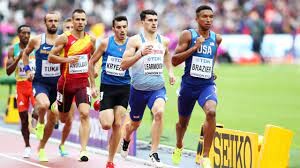
Four other Olympians will take part in this race, including Charlie Hunter of Australia, Mexican record-holder Jesus Lopez of Mexico, Spanish record-holder Saul Ordonez and Irish record-holder Mark English. Isaiah Harris, who represented the USA at the 2017 World Championships, is also in the field.
Donavan Brazier, the world champion over 800m, has opted against contesting his specialist distance at the Millrose Games and will instead test his speed in the 400m. The 24-year-old, who holds the North American 800m records indoors (1:44.21) and outdoors (1:42.34), has an indoor 400m PB of 46.91.
“I’m really excited about running the 400m at Millrose,” said Brazier, whose 2021 season was hampered by injury. “I look forward to the challenge, and it is also part of our plan for continued improvement in the 800m.”
Brazier will face a stiff challenge in the form of Jamaica’s Olympic finalist Christopher Taylor, 2015 world 4x400m champion Vernon Norwood and triple Paralympic medalist Hunter Woodhall.
Other top athletes so far announced for the Millrose Games include Olympic shot put champion Ryan Crouser, world shot put champion Joe Kovacs, Olympic 800m champion Athing Mu, Olympic pole vault champion Katie Nageotte, world indoor pole vault champion Sandi Morris, world 100m hurdles record-holder Kendra Harrison, 2016 world indoor 60m champion Trayvon Bromell, Olympic 200m bronze medalist Gabby Thomas, and Olympic 1500m bronze medalist Josh Kerr.
by World Athletics
Login to leave a comment
NYRR Millrose Games
The Pinnacle of Indoor Track & Field The NYRR Millrose Games, first held in 1908, remains the premier indoor track and field competition in the United States. The 2025 edition will once again bring the world’s top professional, collegiate, and high school athletes to New York City for a day of thrilling competition. Hosted at the New Balance Track &...
more...Betsy Riley and NBC's Olympics Production Team Are to Thank for the Peaking Track Coverage
The network’s Olympics production team is peaking at the right time—thanks, in part, to Betsy Riley, its first female producer.
Track and field reporter Lewis Johnson is live on NBC during the third day of the Olympic Track Trials in Eugene, Oregon—and he’s perched on the steeplechase barrier in front of the water jump.
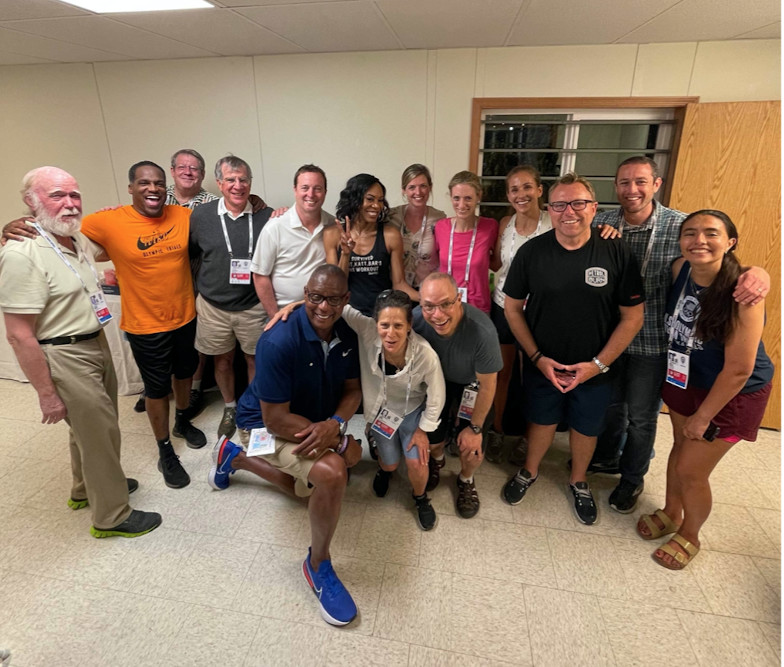

He explains the origins of the event, from the 1800s in England. Graphics flash on the screen, showing the specifics of the modern-day version of the steeplechase, 28 barriers over a 1.86-mile race. Johnson describes how the barriers don’t move as he tries, unsuccessfully, to hip check the one he was just sitting on.
Then the segment takes a whimsical turn. He walks around to the water side of the jump, kicks off a pair of green Nikes, and wades in. “Oh, that feels so good, Diff,” he says, talking to Leigh Diffey, the lead announcer at the Trials.
As Johnson gets to the deepest portion of the pit, the water is lapping at the bottom of his khaki shorts. He sits down at the edge. “Throw me a towel, man,” he says, before the broadcast cuts to the 17 women lined up at the start of the first heat of the women’s steeplechase.
It’s effective television: In one minute and 17 seconds, the segment has entertained and informed viewers—those who might not know the first thing about one of track’s quirkiest events as well as those who understand the basics of steeple but have never gotten close.
The idea for the segment? That came from the Trials producer, Betsy Riley.
Riley has implemented dozens of changes to NBC’s track broadcasts. Some are obvious improvements, like bringing on two-time Olympian Kara Goucher as a commentator, or using double boxes to keep a camera focused on track action during commercials. Others are behind-the-scenes, out of sight of viewers, but which contribute to better coverage.
The result is that long-suffering track fans, who for decades from their recliners have made a secondary sport of complaining about the way track is aired, suddenly find themselves with little to carp about. In fact, anecdotally at least, they’re happy to tune in, whether it’s on their TVs or phones or tablets, and watch running and field events.
That’s largely because Riley is one of them, a true believer and competitor with a lifelong love of track and field.
A pair of firsts
Riley will make TV history this month when she becomes the first woman to produce track and field at an Olympics for NBC. Network brass plan their coverage of the summer Games around swimming, gymnastics, and track—these three disciplines are the “tentpoles” that anchor the coverage—and in fact, Riley is the first woman to produce any of the sports for NBC at the Games.
“We’re so proud of her,” said Molly Solomon, who is the executive producer for the summer Games, also a first for a woman at NBC. “The fact that she’s producing an ‘A’ venue, track and field, at the Olympics, one of the big three. It’s a huge accomplishment.”
But Riley brushes this aside. While other people are making a big deal out of it, she is not, deflecting attention to the great role models she’s had at NBC, including Solomon, and the team of experts she has around her.
A pair of firsts
Riley will make TV history this month when she becomes the first woman to produce track and field at an Olympics for NBC. Network brass plan their coverage of the summer Games around swimming, gymnastics, and track—these three disciplines are the “tentpoles” that anchor the coverage—and in fact, Riley is the first woman to produce any of the sports for NBC at the Games.
“We’re so proud of her,” said Molly Solomon, who is the executive producer for the summer Games, also a first for a woman at NBC. “The fact that she’s producing an ‘A’ venue, track and field, at the Olympics, one of the big three. It’s a huge accomplishment.”
But Riley brushes this aside. While other people are making a big deal out of it, she is not, deflecting attention to the great role models she’s had at NBC, including Solomon, and the team of experts she has around her.
From there, she raised her hand for anything, filling any role, on coverage of surfing, golf, horse racing, college football, college basketball. And always the Olympics and Olympic sports. These days, she’s also Michele Tafoya’s sideline producer on Sunday Night Football.
Amid the long hours that TV requires, Riley met her husband and got married, and they have two children, ages 4 and 1 1/2. In a year when talk of mothers and motherhood has dominated track and field, Riley has her own story to rival them all.
It was 2017, she was 35 weeks pregnant, and she had just finished producing the Prefontaine Classic, a Diamond League track meet in Eugene. On her flight home to Baltimore, somewhere over the Midwest, her water broke. When the plane landed, she took a cab straight to the hospital, and met her husband there. A few hours later, they welcomed a son—who had jumped the gun by more than a month.
Infinite possibilities
Track and field is among the most complex sports to broadcast, and Riley strives to replicate for viewers at home an experience that would be similar to what happens when spectators are watching live, in the stadium. They can choose to watch running on the track or look to the infield for one or more field events happening simultaneously. How do you get that same sense of the action on screen?
On June 26, the penultimate day of Trials competition, Riley sits in the cramped NBC production truck, staring at 30 different screens displaying various camera angles. On her headset she hears the voices of seven on-air commentators. Riley has field events producer Scott Karpen a few feet to her left and director Charlie Dammeyer inches to her right, so close you could barely hold a discus between them. A countdown until the live show begins. Four minutes. Two minutes.
Into her headset, Riley says in a low voice, “Have a great one, everyone.”
From there, Riley is making constant decisions for the next two hours from an infinite combination of elements: which replays to show, when to air a graphic, when to go to a field events package on the women’s hammer throw that happened earlier in the evening, how much time to devote to Sydney McLaughlin walking toward the track while leaving Diffey enough time to voice the element.
Riley, Dammeyer, and Karpen trust one another completely, which makes Riley’s job easier as she decides which family members and coaches to show, when to go to live interviews with happy athletes who just made the Olympic team (and what to do when one lets an expletive slip, as Elle Purrier St. Pierre did after winning the 1500 meters). Karpen describes the role of producer as “the ultimate multitasking job.”
Her background helped make Riley great, observers say, because she grew up in sports television, filling every position, from the entry level production associate calling graphics to working in the videotape area to being in charge of the tape area. She’s been in the front of the truck as the associate director who assists the director and producer in timing.
“If you do those jobs, when you are promoted to producer, you understand what everyone is doing,” Solomon said. “You understand what they need from their leader. You can synthesize all of it. It’s an amazing skill, but you can have six voices in your headset and hear the right ones at the right time. It’s orchestrated chaos.”
A different person might be ruffled by the pressure, but Riley’s steady demeanor is one of her hallmarks.
“I always admire her measured style in the heat of battle,” Solomon said. “She’s very calm, cool, and collected, but she knows what she wants, and she’s direct. That’s what makes great producers—to have a clear head in the middle of the chaos and be able to communicate to the team and lead the team.”
Riley says her faith in the people around her makes it easy. “Our team is incredible,” she said. “It doesn’t happen without every single person contributing, sharing ideas and then pulling in the same direction when we’re on air. In any successful broadcast, you have great teamwork.”
But she has trouble explaining what is going on in her brain during broadcasts, synthesizing all the camera angles and voices, making scores of journalistic decisions every minute. All she can say is that she’s constantly evaluating: What’s the most important right now?
Building team chemistry
None of it happens by accident. Every live broadcast is the result of months of brainstorming, testing, planning, and coaching.
“People at home see the ultimate product,” Karpen explains. “They don’t see the months and years and hours of thought and time she’s put into this. Nothing happens overnight. It’s because Betsy was somewhere in the world thinking, ‘How can we get better?’ And pushing people to think about this. It’s not show up and let’s make TV. This is hours and years to get to that one moment.”
Riley is known for listening at meetings, soliciting input from anyone who wants to contribute, giving serious consideration to all ideas.
“One thing I absolutely respect about her is that nothing is a bad idea,” Dammeyer said. “Ideas come from everywhere. She’s asking everyone, ‘What do you think?’ Everyone has a seat at the table, from Ato [Boldon] to Leigh to the graphics production assistant. Everybody’s voice counts.”
When Goucher first started doing on-air commentary for NBC this spring, Riley gave her extra coaching sessions, telling her what she was doing well and what she needed to improve. On the live broadcast, Riley is in Goucher’s ear.
Goucher remembers watching Abbey Cooper pull away in the early laps of the first round of the women’s 5,000 meters, trying to get the Olympic standard on her own in the Eugene heat. “I was like, ‘This is crazy.’ Betsy was in my ear. ‘Why is this hard? Tell the audience why this is hard.’ She gives me little cues.”
Goucher has been one of the revelations of the track season—a hit with viewers for the passion she brings and the insights she shares, gleaned from her own career as an athlete. But nothing motivates her as much as her producer’s live coaching. “If I do something that she likes, she says, ‘Well done.’ She’ll give you a little feedback as you’re going, which I find super helpful.”
Which isn’t to say that it’s always roses. Boldon has been working NBC broadcasts for 14 years. In 2019, around the time of the Prefontaine Classic, he and the other commentators and members of the production team were summoned to a meeting.
“You know how when a team is playing really badly and you have a players-only meeting?” he said. “Right. We had one of those. The chemistry wasn’t right, the flow wasn’t right. It was watching a team of really good players play badly because they can’t play with each other.”
In Boldon’s telling, Riley led the meeting and didn’t mince words with her assessment of what needed to improve. The message? “Swimming and gymnastics get the baton and we have to bring it home for NBC,” Boldon said. “Everyone in that room was as serious as a heart attack. She came with receipts. She came with video—she had put together a whole package. ‘Look at this. What’s wrong with this? Can we do better here?’”
It was a turning point. “I think the broadcast we did from the Eugene Trials was the best Trials broadcast I’ve ever been a part of,” he said.
A network’s core values
NBC coverage—no matter who the producer is—focuses on two things, according to Riley. First, getting the sport right. And second, storytelling.
“Sometimes people think of storytelling as a soft human interest story, and that’s possible, but it’s also storytelling about the race itself and the athletic event itself,” Riley said. “Storytelling is part of everything we do at the Olympics.”
Donavan Brazier in a feature about fly fishing before the men’s 800 final? That’s storytelling. Lewis Johnson wading into the water jump pit? Also storytelling. But most important is the race itself. Replays that show Dalilah Muhammad getting out to a fast start in the women’s 400-meter hurdles, or Cole Hocker’s kick to win the men’s 1500 meters are, at their core, about storytelling.
The goal of every sports broadcast is to make the viewer care about who they’re watching. Riley understands this, and she’s not afraid to push the envelope with technology to help viewers better understand track and field.
During the Trials, fans of the distance races rejoiced at coverage that continued through commercials with double boxes. It’s a feature that’s been around for five years, Riley said, but its use is expected now.
“Sponsors are noticing that it’s nice to have action, it’s nice to have people sticking around for those commercials,” she said. “Early on there was definitely an effort to showcase the value of it. Now that we’re five years on, people know that’s expected and what track fans really want.”
Riley has been experimenting with other forms of technology—miles per hour graphics and live leaderboards that show how many meters behind athletes are from the leader. The point, always, is to give the viewer at home deeper understanding.
Heading to Tokyo
On the NBC broadcast in primetime, Riley and her team will make sure track and field is accessible for those who tune into the sport only once every four years. Boldon says Riley has pushed him not to rely on statistics and times. Instead, she’ll be in his ear during broadcasts, urging him along to find a different way to tell stories. “Make me care,” she’ll say. “Make me care.”
But changing technology allows viewers to customize what they see. If hardcore triple jump fans want to watch every minute of triple jump or discus from Tokyo, and not just a highlights package, that’s possible with the cable channels and digital streams.
And that means as the broadcast team heads for Tokyo, they’ve got hours and hours of work ahead of them. For 10 straight days, July 30 to August 8, Riley and the team will be at it, documenting the performances and the emotions they inspire.
“For the TV dorks like we are, our team relishes the opportunity to do lots of TV and cover lots of competition,” Riley said. “That’s really fun stuff.”
by Runner’s World
Login to leave a comment
A new generation of champions set to emerge in Tokyo
While some reigning Olympic and world champions might be missing from the Games in Tokyo, the extra year as a result of the postponement in 2020 has allowed a number of new talents to emerge.
For some it means a debut Olympic experience which may not originally have been expected until at least 2024, while for others it is a realistic opportunity to win medals and titles.
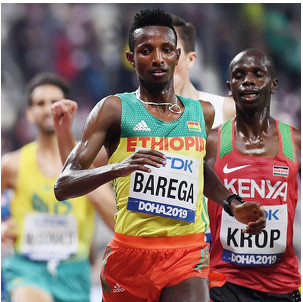
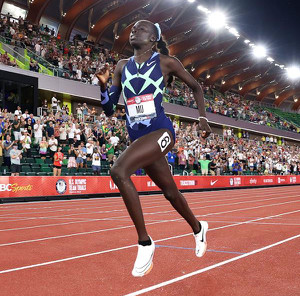
Of the 43 individual events contested at the Rio 2016 Olympics, the winners from just 18 of those will defend their titles in Tokyo.
The likes of world 800m champion Donavan Brazier and Olympic 110m hurdles champion Omar McLeod missed out on being selected for their national team, while other stars, such as world and Olympic triple jump champion Christian Taylor, are currently sidelined with injury.
But while those global champions won't be able to contend for top honours in Tokyo, here are some of the new generation of stars who are set to emerge.
Selemon Barega, 10,000m
After winning world U18 and U20 titles in 2017 and 2016 respectively, Ethiopia’s Barega stepped up to secure senior 5000m silver at the World Athletics Championships in 2019. Still aged just 21, he is now preparing for his debut Olympics, where he will race the 10,000m.
Barega started the season with intent, running an Ethiopian all-comers’ record of 27:58.5 at altitude in Addis Ababa in January. He then went even faster at the Ethiopian Trials in Hengelo in June, clocking 26:49.51 on the same track on which he ran his 26:49.46 PB in 2019. That, together with the speed he demonstrated by running PBs of 3:32.97 for 1500m and 7:26.10 for 3000m during the indoor season, means he is set to be a strong force in Tokyo
Jasmine Camacho-Quinn, 100m hurdles
Medal success in Tokyo would see Camacho-Quinn become the first Puerto Rican woman to secure an Olympic podium place in athletics and this season she has certainly demonstrated her ability to achieve that feat.
The 24-year-old improved her own national 100m hurdles record to 12.32 to move to equal seventh on the world 100m hurdles all-time list in Eugene in April and hasn’t been beaten since. She clocked 12.38 to win at the Wanda Diamond League meeting in Florence and 12.34 for success in Szekesfehervar, meaning she has the three fastest times in the world so far this year. “I'm looking forward to the Olympics this year - it will be like redemption from my fall in 2016,” she said after her Florence run as she reflected on missing out on the final in Rio. “I'm really excited. Training really hard, working really hard, but really looking forward to it.”
Tara Davis, long jump
Davis leapt into the seven-metre club in March, breaking the US collegiate long jump record with 7.14m at the Texas Relays. The longest jump in the world since the 2019 World Athletics Championships final, that mark moved the 22-year-old to fifth on the US all-time list.
The world U20 bronze medallist had also broken the collegiate indoor record with 6.93m at the NCAA Indoor Championships earlier in the year and finished second at the US Olympic Trials, going beyond seven metres again with a best of 7.04m. “I’m shocked still because seven metres as a jumper is the biggest thing ever. Hitting it in the Olympic Trials is unreal,” she said after her performance in Eugene, where she finished second to four-time world gold medallist and 2012 Olympic champion Brittney Reese. “I’m freaking jumping with my idol, Brittney Reese. Being with her and competing with her in 2016 I was so starstruck. I was like, ‘I see her on TV and now I’m jumping with her’.”
Alison Dos Santos, 400m hurdles
After running in the lane next to Karsten Warholm during his world record in Oslo, improving his South American record to 47.38 to finish second, Brazil’s Dos Santos went even quicker to win three days later in Stockholm, taking another 0.04 off that mark.
This season has seen the 21-year-old build on his 2019 breakthrough, having that year improved his PB and the South American U20 record seven times, eventually clocking 48.28 to finish seventh at the World Athletics Championships in Doha. Also a key member of Brazil’s relay team, he ran the fastest split of the mixed 4x400m final at the World Athletics Relays in Silesia, recording a 44.62 anchor leg. “I'm looking forward to the Olympics, and yes, I think I can get a medal,” he said with a smile after his run in Stockholm.
Mondo Duplantis, pole vault
While some may argue that a world record (or two) rules an athlete out from being considered part of a ‘new generation’, pole vault star Duplantis is still aged only 21 and has much more he hopes to accomplish during his career, including winning Olympic gold.
This season he has cleared six metres or higher in four competitions, capped by his 6.10m in Hengelo - a height only he, Renaud Lavillenie and Sergey Bubka have ever achieved. After winning 2019 world silver behind Sam Kendricks - who ended Duplantis’ 23-competition win streak in challenging conditions in Gateshead in May - Duplantis will be looking to go one better in Tokyo. He also believes he can go higher than his 6.18m world record this season and after attempting 6.19m in Oslo, he said: “I really think I can get that record soon. But for now I feel good, a month away from the most important meet of my life. I am in good shape, I am running well on the runway and keeping up the rhythm well.”
JuVaughn Harrison, long jump and high jump
Harrison secured his two Olympic spots in style at the US Trials, soaring over 2.33m and then leaping a PB of 8.47m to improve his own best-ever single-day high jump and long jump double. As a result, he will become the first male athlete to represent the USA in both events at the Olympics since Jim Thorpe in 1912. No other athlete has ever achieved both a 2.30m high jump and 8.40m-plus long jump.
The 22-year-old is no stranger to juggling both events on the same day and in March he cleared 2.30m and jumped 8.45m at the NCAA Indoor Championships. In Tokyo, the high jump final is on the evening of day three and the long jump final is on the morning of day four. He is expecting to rise to the challenge. “It will be harder competition which will make me push harder and jump farther,” he said.
Erriyon Knighton, 200m
Running 19.88 at the age of just 17, Knighton broke not one but two world 200m age-group bests which had previously been held by a certain Usain Bolt. At the US Olympic Trials, the former American football player ran 20.04 in the heats to improve Bolt’s world U18 best before taking 0.16 off that mark in the semifinals to break the world U20 record of 19.93 set by Bolt in 2004. In the final he went quicker still, clocking 19.84 to finish third and become the youngest man to represent the USA in athletics at the Olympics since Jim Ryun in 1964, also in Tokyo.
Racing outside of the USA for the first time, Knighton then placed third at the World Athletics Continental Tour Gold meeting in Szekesfehervar, running 20.03. “It hasn't sunk in, it’ll probably sink in when I get home,” he said after claiming his Olympic place. “I'm happy. I feel it's a really big achievement.”
Nicola McDermott, high jump
As an eight-year-old, McDermott dreamt of becoming a consistent two-metre-plus international high jumper and having already achieved the latter, this year her two-metre aim was accomplished, too. Clearing 2.00m at the Australian Championships in April, the 24-year-old broke Eleanor Patterson’s Oceanian record and then added another centimetre to the mark in Stockholm earlier this month, despite not feeling 100 percent.
McDermott didn’t manage to register a height when she made her World Athletics Championships debut in London and two years later the Commonwealth bronze medallist finished 15th in qualifying. This time, as she makes her Olympic debut, her mind is on medals. “I’m not going to say it’s impossible to get a medal,” she said. “I’ll be aiming and I think 2.01m will maybe get me in the medals so I am aiming and training for that and believing that I can do it.”
Sydney McLaughlin, 400m hurdles
Like Duplantis, McLaughlin is already a world record-breaker having taken the 400m hurdles to another level with her time of 51.90 at the US Olympic Trials. She also was no stranger to making history before that, with world U18 best and world U20 record times among her age-group accomplishments.
Now aged 21, she made her first Olympic team at just 16, finishing fifth in her semifinal nine days after her 17th birthday, and then secured silver at the 2019 World Athletics Championships in Doha, a race won by her compatriot Dalilah Muhammad in a world record of 52.16. It was that mark McLaughlin improved in Eugene. “So many amazing women have come before me and will come after me,” she said after her world record. “I'm excited for what the future holds. I just want to leave my mark and be part of such an amazing sport, because the glory isn't forever.”
Athing Mu, 800m
Mu is another athlete to have risen impressively through the ranks, having stormed into the spotlight in 2019 when as a 16-year-old she ran the second-fastest ever indoor 600m time of 1:23.57. This year she has broken the world U20 indoor 800m record with 1:58.40 and then dominated the two-lap final at the US Olympic Trials, running a world-leading 1:56.07 to improve her own North American U20 record.
The 19-year-old also ran an area U20 record in the 400m with 49.57 to win the NCAA title earlier in the month. “This is my first year coming out here running to my potential,” she said after her trials win. “I wouldn't want to say I'm dominant at it yet. My confidence takes a lot from it. In 2019, I wasn't confident, but I was good enough. Gaining confidence has contributed to my dominance thus far in the 800m. Being good at it, knowing it's my event.”
Great experience
While some reigning global champions may be missing out on Tokyo, there are a number of vastly experienced stars who will be adding another Olympics to their impressive tally of major events. The USA’s Allyson Felix has already won six Olympic gold medals and 13 world titles, while shot put star Valerie Adams has claimed two Olympic and four world titles for New Zealand, with Tokyo being a fifth Olympic Games for both athletes.
Spain’s 51-year-old Jesus Angel Garcia, meanwhile, will compete at his eighth Olympics – the most ever for a track and field athlete. Who knows whether some of this new generation of stars will still be in action come the Olympic Games in 2048!
by World Athletics
Login to leave a comment
7 Things You Should Know About Craig Engels, the Runner With the Mustache and Mullet
He has the fastest time in the country this year in the 1500 meters, and he loves a good construction project.
Craig Engels burst onto the U.S. running scene in 2017, during his final year at the University of Mississippi. He was the athlete with the mullet and mustache who loved mugging for the television cameras—and he could run, too.
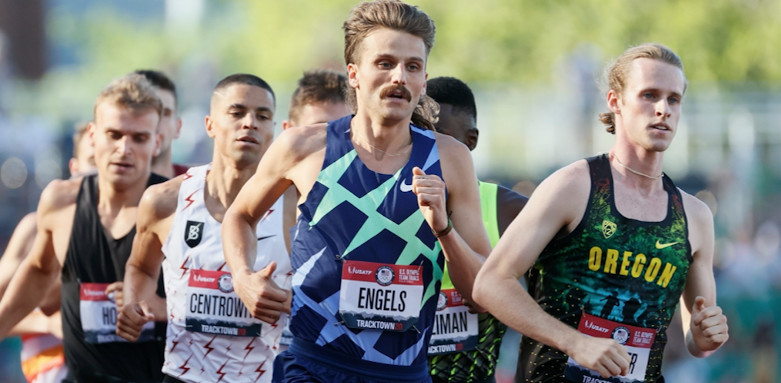
Engels just missed making the Olympic team in 2016, finishing fourth in the 800 meters and fifth in the 1500. But he broke through in 2019, earning a spot on Team USA for the world championships in Doha. He finished 10th in the 1500 in 3:34.24.
Now 27, Engels is hoping to make his first Olympic team, and things are looking good. He set his PR in the 1500 meters, 3:33:64, on May 29, which is the fastest time by an American so far this year. And in the first round at the Trials, he easily advanced to the semifinals, finishing third in his heat in 3:40.03.
Engels, who lives in Beaverton, Oregon, and trains with the Nike group under coach Pete Julian, spoke to Runner’s World on June 15, after he had just finished up at the laundromat.
He likes doing construction projects
Engels buys, renovates, and sells RVs. And last June, he bought a house in Beaverton on a large lot. He and teammates Eric Jenkins and Donavan Brazier built a fence to divide the lot, and Engels rents the front house out. When he’s in town, he lives in the back in a pole barn he converted into a house with the help of his teammates and father and by watching YouTube videos.
“Learned how to do plumbing, electrical, everything,” Engels said.
Pete Julian asked him to stop the physical labor until the Trials are over
“I’ve chilled out with extracurricular projects a little bit more,” he said. “No working on RVs, or at least not working hardcore. Pete kind of got upset with me. I was digging trenches and building chicken coops and just working on my property. Pete was like, ‘Can you just chill out until the Olympic Trials?’”
He regulates his social media time
For a period during the pandemic, he was trying to be good about responding to DMs, but then the demands people were making started to wear on him. These days, he isn’t on too much. “When I’m on my phone, I’m on craigslist, looking at RVs,” he said.
He has a new tattoo
It’s an image of a van, and it’s on his butt, according to the Winston-Salem Journal, which is Engels’s hometown newspaper in North Carolina. He told the paper he might show it off at the after-party if he makes the Olympic team.
Engels does not do much, if any, altitude training
The environment doesn’t suit him. He’s not sure if it’s the physical demands of the mountain air, or the sense of being cooped up to recover from tougher-than-usual workouts, but he doesn’t go to altitude.
“Pete’s okay with it,” Engels said. “We have a good enough relationship now and he knows me well enough to know it’s not a good fit. He’d rather me be happy at sea level than suffering at altitude.”
Recent workouts have gone well
Engels declined to give too many specifics, but he said he likes doing mile cut-downs. He’ll do two sets of a mile, 1200 meters, 800 meters, 400 meters, getting faster each rep.
“I actually don’t know how many miles a week I’m running,” he said. “I don’t care, just whatever my body is feeling.”
He respects his competitors
There’s definitely more depth in the 1500 meters now than there ever has been, he said. But his goal is simple: “The goal is just to win.”
by Runner’s World
Login to leave a comment
Murphy, Purrier St Pierre and Nilsen among the winners on day of surprises in Eugene
With mayhem all around on the fourth day of action at the US Olympic Trials, two-time world pole vault champion Sam Kendricks is relieved to be going to Tokyo. Two other winners of global titles – world 800m champion Donavan Brazier and 2011 world 1500m champion Jenny Simpson – will not be heading to the Games.
“A gold medal brings golden handcuffs,” Kendricks said. “Wherever we go somewhere it’s a world champion, and they expect a world champion’s effort. People follow in your wake when you’re ahead of the game.”
Clayton Murphy stayed ahead on Monday night (21) in Eugene.
He ran an evenly split world lead of 1:43.17 to win the men’s 800m, showing the form he had as 21-year-old to earn Olympic bronze in Rio in 2016. It was an emphatic response to those who were unsure he would ever recapture that.

That 800m – plus a historic pole vault competition won by Chris Nilsen and a front-running 1500m by Elle Purrier St Pierre – were the highlights of day four ahead of two rest days.
Shockingly, Brazier faded to last in the 800m and will miss a second successive Olympics. He was a pre-trials favourite in 2016, at age 19, coming off a 1:43.55 and NCAA victory, but he failed to get out of the first round then.
This time, NCAA champion Isaiah Jewett bolted ahead and built a lead with an opening lap of 50.60. Brazier crossed the 400m in 51.00 and attempted to reduce that gap on the final backstretch.
“I think I made a move a little too early and paid the price for it in the last 200,” he said.
Murphy, fifth at the midpoint at 51.67, said afterwards that he executed a perfect plan. He caught and passed Jewett, covering the second lap in 51.50. He said he had a “pretty serious hamstring issue” a few days before the trials but overrode it with adrenaline. He also overrode pre-trials form charts leaving him out of the requisite top three.
“It is hard not to read the middle-distance preview,” he said. “I kind of just accept it. As long as I handle it the right way, it is only motivation.”
Jewett was second in a PB of 1:43.85 and Bryce Hoppel, fourth at the 2019 World Championships, finished third in 1:44.14. Brazier eased to the finish in 1:47.88.
USA is sending “a pretty damn good team” to Tokyo, Murphy asserted. Jewett and Hoppel now sit at fourth and seventh on the 2021 world list, respectively.
“I think this is the most special moment in our sport,” said Murphy. “It is the most pure way to pick a team. This is what all those workouts pay off.”
Murphy and Brazier are qualified to run in the 1500m, but both said they probably would not. Brazier did not elaborate but said he was not running at 100 percent.
Jewett said his night was not over. He had a 10-page paper due for a course at the University of Southern California because a teacher had not granted his request for an extension.
Nilsen, an 18-year-old at the 2016 trials, said his goal then was to have his photo taken with Kendricks. In 2021, his 5.90m vault was enough to beat Kendricks and KC Lightfoot, second and third at 5.85m.
Matt Ludwig and Jacob Wooten were fourth and fifth at 5.80m, making this the first national competition ever featuring five men over 5.80m and 11 over 5.70m. It was also the first US meet ever to have three over 5.85m.
“This’ll go down in history as the hardest team ever to make,” Kendricks said.
The team in the women’s 1500m was also hard to make. An early stumble startled Purrier St Pierre, who on the spot decided to push the pace and led all the way thereafter.
Her time of 3:58.03 broke a trials record of 3:58.92 that Mary Slaney held for 33 years. Cory McGee was second in 4:00.67 and Heather MacLean, Purrier St Pierre’s training partner, was third in 4:02.09 as the top three all ran PBs. Shannon Osika was less than a tenth behind in 4:02.18.
Purrier St Pierre grew up on a dairy farm in rural Vermont and runs on dirt roads with her dog. She was shaken by the bumping to start the race.
“I couldn’t believe I’d just been shoved off the track,” she said. “After that, I thought I’d just go for it.”
Simpson, 34, the 2016 Olympic bronze medallist, was aiming for a fourth Olympics but finished 10th in 4:07.76. Coincidentally, she was Purrier St Pierre’s roommate in Doha.
Simpson conceded it was “hard to believe” she had not made the team; she had been on every Olympic or World Championships team since 2007.
“The sport goes on without you,” she said. “You don’t make the Games, and the Games are fine and they go on without you.”
With temperatures soaring past 32C, Elise Cranny won the 5000m in 15:27.81. Karissa Schweizer was second in 15:28.11 and Rachel Schneider third in 15:29.56. Abbey Cooper, who met the Olympic standard by running 15:07.80 in the heats on Friday, was fourth in 15:31.05.
In the absence of the injured Christian Taylor, Will Claye took the triple jump with 17.21m (0.1m/s). Donald Scott was second at 17.18m and Chris Bernard third at 17.01m. “My sights have always been on the gold medal,” Claye said. "I want to win whether Christian is there or not. I feel for Christian. A year ago, I was going through the same thing.”
Curtis Thompson had the four longest throws of the competition and won the javelin with 82.78m.
Roy Jordan for World Athletics
by World Athletics
Login to leave a comment
What to Watch For in the U.S.A. Track & Field Olympic Trials
For months, they have trained in relative isolation. They have triple jumped in empty stadiums and chased qualifying standards on high school tracks. You may have heard this before, but the pandemic created challenges for American track and field athletes.
For those who managed to push through the long delay, a meet five years in the making has finally arrived: The U.S. Olympic track and field trials are set to start on Friday afternoon at the University of Oregon’s Hayward Field, a freshly renovated stadium that — barring something else unforeseen — will also host the world championships next year.
But first come the trials. As athletes from across the country bid to compete at the Tokyo Games this summer, here is a look at what to watch over the coming days:
What’s the schedule?
Glad you asked. It is a long meet — 10 days, with two rest days built in the middle — running from Friday through June 27. There are 40 events in all (20 for the women, 20 for the men), with preliminary rounds for most of them. On Friday, for example, there are preliminary rounds in events ranging from the women’s discus to the men’s 800 meters. There are also two finals scheduled for the first day, in the men’s shot put and the men’s 10,000. On Sunday, eight more champions will be crowned, including in the men’s 100. (More on that later.)
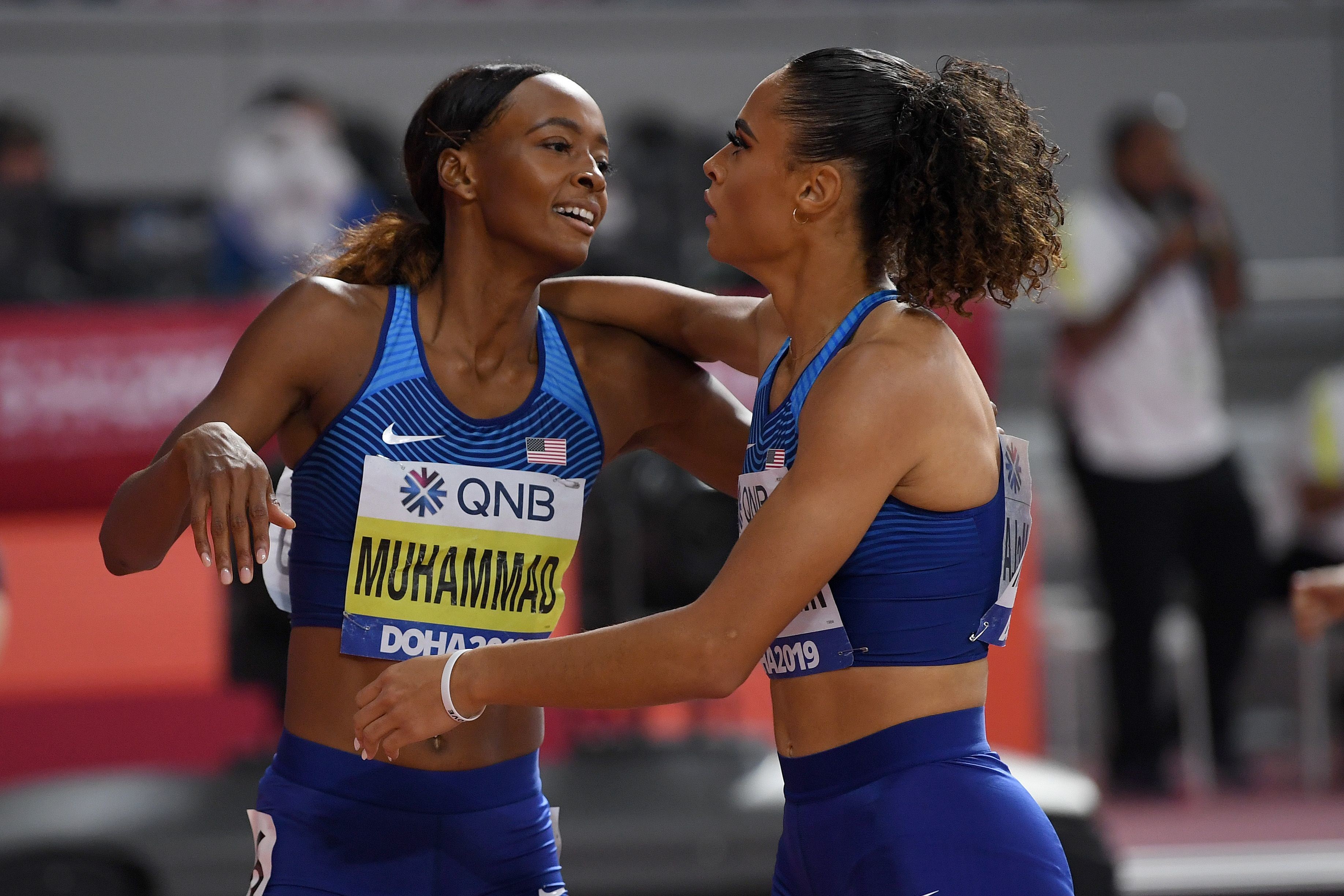
So who gets to go to the Olympics?
The top three finishers in each event qualify, provided they have reached the Olympic standard. If not, they have until July 1 to attain it.
Who are some of the most compelling athletes to watch?
Any list like this has to start with Allyson Felix, the nine-time Olympic medalist who is aiming to compete in her fifth and final Olympic Games. A onetime prodigy who is entered in the 200 and 400 meters, Felix, 35, long ago secured her place as one of the sport’s most revered and respected figures. She has advocated for gender equality since giving birth to her first child in 2018.
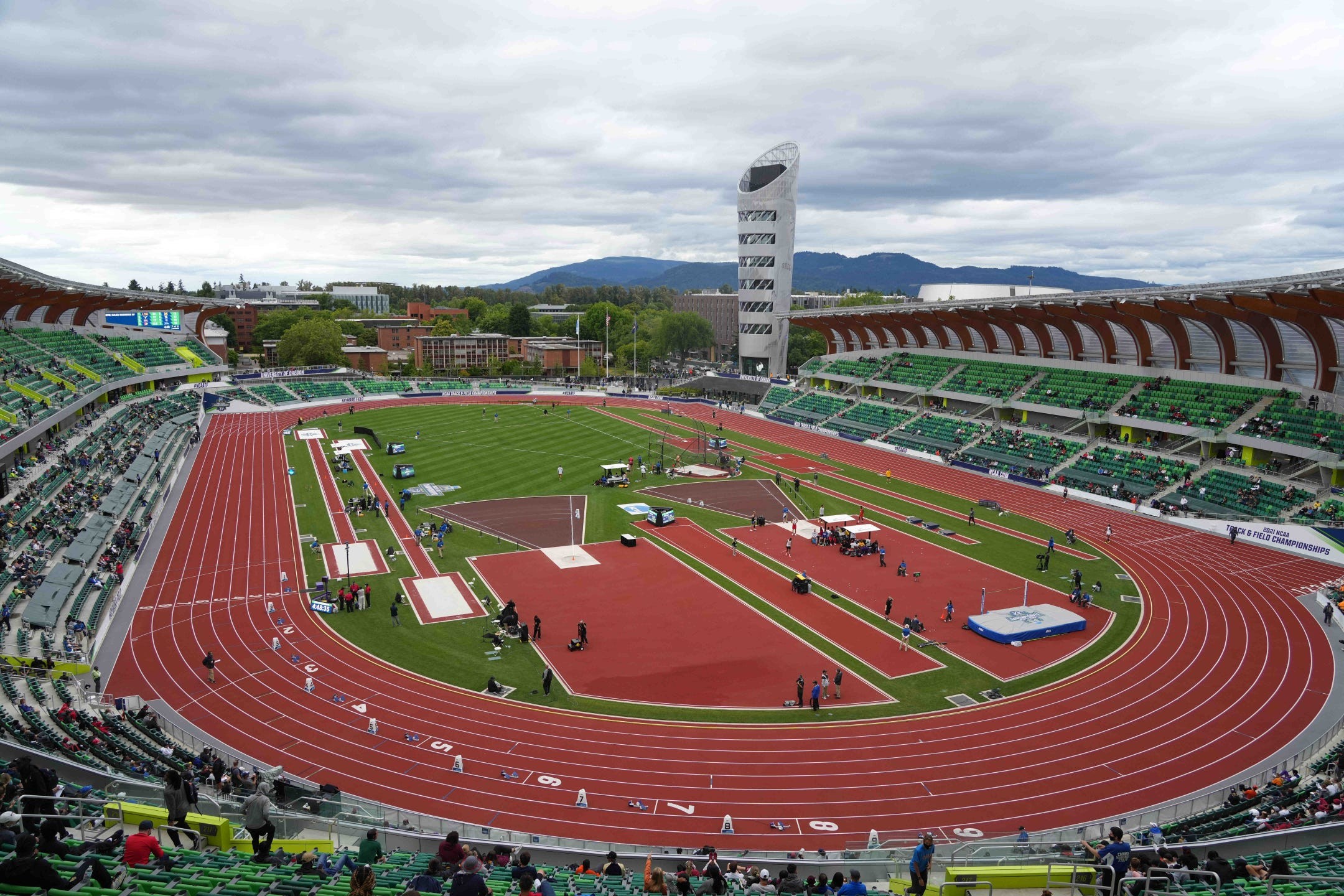
Felix’s retirement will leave a void among the American women, and Sha’Carri Richardsonseems prepared to help fill it. In April, she ran the sixth-fastest 100 in history. Richardson, just 21, is unapologetically brash while consistently coming through with fast times and big performances. She is easy to spot, too: Just look for her colorful hair.
In the women’s 1,500 meters, Elle Purrier St. Pierre is the favorite after a string of convincing victories this season. She grew up on a dairy farm in Vermont, where she would train by running to the Quebec border and back. Her sponsors include Cabot Cheese.
Donavan Brazier is the American record-holder and reigning world champion in the men’s 800. He seems determined after failing to qualify for the Olympics in 2016.
And Sam Kendricks, who has won back-to-back world men’s pole vault championships, is the heavy favorite in Oregon. His toughest competition figures to be in Tokyo, where Mondo Duplantis, who grew up in Louisianabut competes for Sweden, will be waiting. Duplantis, 21, already owns the world record but is seeking his first Olympic gold.
How about a few must-see events?
No, we didn’t forget about Noah Lyles, the world champion in the men’s 200 meters. Lyles wants to double in the 100 and 200 meters in Tokyo, and his 100-meter form has been coming along slowly. He will face a loaded 100-meter field in Eugene, Ore., headlined by the likes of Trayvon Bromell, who has run the fastest time in the world this year, and Justin Gatlin, the five-time Olympic medalist who has twice been suspended for doping. Americans have the six fastest 100-meter times in the world this year — and Lyles is not among them.
The field in the men’s 1,500 is also competitive. Matthew Centrowitz, the 2016 Olympic champion, was injured last year and benefited from the postponement. Craig Engels is the 2019 national champion, but he is equally renowned for his mullet. There is also a group of up-and-comers headlined by Cole Hocker, fresh off an N.C.A.A. title at Oregon, and Hobbs Kessler, the fastest high school miler ever.
The most anticipated showdown, though, could materialize in the women’s 400-meter hurdles. At the 2019 world championships, Dalilah Muhammad, 31, had to break her own world record to outrun Sydney McLaughlin, one of the sport’s rising stars. Muhammad, the Olympic champion in Rio, has been working in recent weeks to return to form after injuring her hamstring. McLaughlin, 21, spent much of the spring fine-tuning her speed and technique while competing in the 100-meter hurdles. If both athletes are healthy, their final — held on the final day of the meet — should be a highlight.
Who’s missing?
The trials got a harsh dose of reality this week when Shelby Houlihan, the American record-holder in the women’s 1,500 meters, was suspended from competing for four years after she had tested positive for an anabolic steroid. Houlihan has maintained her innocence, claiming she ate tainted pork from a food truck. For about eight hours Thursday, it seemed that Houlihan might still be able to run while she appealed the ban, but ultimately the U.S. Olympic & Paralympic Committee stepped in and said that she could not participate in the trials.
Speaking of suspensions, that deep field in the men’s 100 meters is missing an important name: Christian Coleman, who won the 2019 world championship under a cloud of suspicion, and was subsequently suspended for missing a series of drug tests.
Also absent will be Christian Taylor, the two-time Olympic champion in the men’s triple jump. Taylor ruptured his Achilles’ tendon at a meet last month and underwent surgery. He has vowed to make a comeback in time for next year’s world championships.
On the bright side, several American runners will not be at the trials — but only because they have already punched their tickets for Tokyo. We are referring, of course, to the marathoners, whose trials were staged all the way back in the prepandemic era, in February 2020. Galen Rupp, Jacob Riley and the seemingly ageless Abdi Abdirahman, 44,qualified for the men, while Aliphine Tuliamuk, Molly Seidel and Sally Kipyegomade the women’s team. (Rupp, a two-time Olympic medalist, is expected to compete in the 10,000 on Friday, though he told OregonLive.com last month that he would treat the race as a rigorous training run and appears to have no intention of running the track event in Tokyo.)
Is it on television?
NBC and NBCSN will provide live daily coverage of the meet.
by Scott Cacciola (NY Times)
Login to leave a comment
Rogers, Brazier and Taylor ready for top-quality test in Eugene
Global medallists Raevyn Rogers, Donavan Brazier and Christian Taylor are preparing for an early-season top-quality test of their form at the USATF Grand Prix – the first World Athletics Continental Tour Gold standard meeting of 2021 – on Saturday (24).
As well as offering the opportunity for some high-class clashes, the event also gives the US trio the chance to compete at Eugene’s recently renovated Hayward Field, which will stage the US Olympic Trials in June and this weekend welcomes athletes for its first professional competition since 2018.
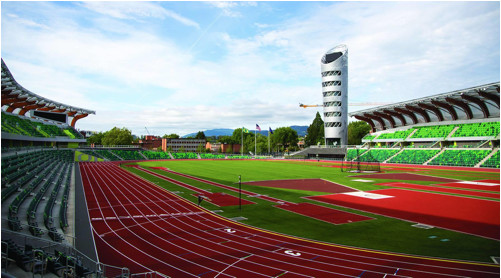
“I am very nervous and excited to compete at the new Hayward,” said Taylor, the four-time world and two-time Olympic triple jump champion. “I had the previous stadium record and had lifelong memories made in front of the grandstands. This is a glorious new beginning but also has that special sense of the unknown.
“This will be a very serious competition for us,” he added, “to have an idea of exactly where we are and what areas we need to focus on moving forward.”
While Taylor has fond memories, world 800m champion Brazier is looking to make up for the disappointment he felt when he last raced at the iconic venue five years ago.
“I’m really excited to race there,” said the 24-year-old, who this time steps up to compete over 1500m. “The last time I raced there I ran pretty bad, I think it was the Olympic Trials in 2016, so I’d like to get the monkey off my back and finally start racing good again in Eugene.
“We’re going to see where we’re at this weekend and that’s part of the reason why we’re doing the 1500m instead of 800m.”
Rogers – star of the track and tower
For Rogers, it's a sense of ‘being home’.
“It is a huge weekend, especially to be running the 800m at Eugene,” said the world 800m silver medallist, who won multiple NCAA titles while racing for the University of Oregon. “I’m just looking forward to kicking it (her 800m season) off and seeing where all of this hard work in practise will lead to.”
Rogers is one of five icons – along with legendary coach Bill Bowerman, Steve Prefontaine, Ashton Eaton and Otis Davis – pictured on the Tower at Hayward Field and on whether there will be any extra pressure to perform, the 24-year-old said: “Just to be able to run the 800m at the ribbon-cutting meet, I did express (to her coach, Pete Julian) ‘you want me to do my first 800m in Eugene at the new stadium?!’ Of course, I was factoring in some of that pressure, but he was very reassuring to understand that the focus is about June and of course later on, God willing, the Olympics.
“It’s more to see where we are and get some races under our belt. That helped a lot to ease some of those outside thoughts in my head in regards to factoring in the pressure of running at the stadium.”
As well as it being the ‘ribbon-cutting’ professional competition at the reimagined Hayward Field – which will host next year’s World Athletics Championships Oregon22 – the event also kicks off this year’s Continental Tour Gold-standard series of meetings. The aim of the Tour is to offer a coherent global series of the best international one-day meetings outside of the Wanda Diamond League.
“I’m excited about the fact that we are getting some World Athletics type of races in,” said Rogers. “I feel like we are still kind of holding on to the slowness of last year, with things not being open, but now people are feeling like vaccinations are a little bit more allowing of us getting outside and being able to do things. And so now that we are able to focus on getting some good competition and more races in, I think it will help get more of that type of competitive experience that we have when it comes to the Olympics, because this is really necessary.
"I feel like as we get into championship season, since it is in almost two months, it’s super necessary and the time window to be able to get those type of races in is very short. So the fact that they are trying to implement this World Athletics Continental Tour will help get those Diamond League type of races and experiences in, instead of just having to have them straight at the Olympics.”
Following the Continental Tour Gold season opener in Eugene, the series will move on to California, Tokyo, Ostrava and Boston in May before meetings in Hengelo, Turku, Bydgoszcz and Szekesfehervar ahead of the Olympic Games in Tokyo.
by Jess Whittington for World Athletics
Login to leave a comment
Irish former track and field athlete Sonia O’Sullivan will take Nike coaching role based in Portland, Oregon
Sonia O’Sullivan has agreed to take up a new assistant coaching role with a Nike training group based in Portland, Oregon beginning this week, initially in the run up to and including the Tokyo Olympics.
It will see O’Sullivan move from her current home in Melbourne to the US on Thursday, her new role as assistant coach to Pete Julian affording her the chance to work with some of the best distance runners in the world.
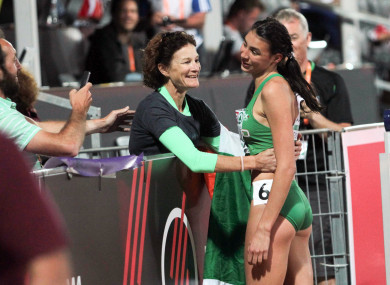
Describing the role as “exciting and challenging”, O’Sullivan is also looking forward to the chance to “have some purpose again in big time athletics”.
The move, only confirmed in recent weeks, will also bring O’Sullivan closer to her daughter Sophie, currently in her first year at the University of Washington on scholarship.

“It all evolved quite quickly, and once we started talking, it felt like an instinctual decision for me, something I felt I’d like to do,” says O’Sullivan. “I won’t know what it’s fully about until I’m out there, but to be a part of a fully professional set-up, with a good budget behind them, to get the best possible out of the athletes, is something I’m excited about.
“There are currently 10 athletes in the group, Pete Julian as head coach, they also have a strength and conditioning coach, and his athletes range from 800m up to the marathon, so there’s a lot of diversity there, they don’t all train together, on different days and in different places, so he can’t always be there. And this was the perfect opportunity to go and do something that I’ve not really had a chance to do, ever.
“It’s a way for me to travel again in an Olympic year, even though it’s very nice here in Melbourne with no Covid restrictions, it feels very far from the action. Every year I’ve had events in Ireland that I work with and the main athletics championships to look forward to, this past year has been so unpredictable my normal schedule has been put on hold.
“It also definitely helped that it’s pretty close to where Sophie is going to college, two and a half hours away, so that swayed things a bit too, because of the times we’re in, it’s so difficult to get back in or out of Australia, and it’s still unknown when she can next get back to Australia.”
Julian was previously an assistant coach with the Nike Oregon Project, run out of the Nike headquarters in Beaverton, Oregon but which was disbanded in 2019 in the immediate aftermath of a four-year ban handed down to then head coach Alberto Salazar for doping offences. With that Julian, in no way implicated in any of those offences, started up his own training group with some of the athletes already under his guidance, including top US 800m runner and Tokyo gold medal favourite Donavan Brazier.
For O’Sullivan, the 2000 Olympic silver medallist over 5,000 metres who won 13 major championships medals in all, the initial three-month agreement would see her through to the Tokyo Olympics. Also in the group are two international women athletes from Australia in Jessica Hull, and Germany’s Konstanze Klosterhalfen, Japanese Tokyo Olympic athlete Suguru Osaka, the remaining seven being American.
“The main target for the American athletes will be the US Olympic Trials, and then after that there is a small circuit of American meetings, so that they don’t have to travel to Europe. ”
O’Sullivan’s first chance to see some of the athletes in action will likely come this weekend at the USATF Grand Prix from Hayward Field in Eugene, the newly renovated venue for the 2022 World Athletics Championships, and the first stop on the 2021 World Athletics Continental Tour (which is also being broadcast on TG4).
by Ian O'Riordan
Login to leave a comment
Tokyo 2020 Olympic Games
Fifty-six years after having organized the Olympic Games, the Japanese capital will be hosting a Summer edition for the second time, originally scheduled from July 24 to August 9, 2020, the games were postponed due to coronavirus outbreak, the postponed Tokyo Olympics will be held from July 23 to August 8 in 2021, according to the International Olympic Committee decision. ...
more...Athing Mu Runs 1:58.40 breaking NCAA & World U20 Records at 800 Meters
The magical freshman season of Texas A&M sensation Athing Mu hit a new high on Saturday evening as the 18-year-old clocked a stunning 1:58.40 at the SEC Indoor Track & Field Championships in Fayetteville, Ark., obliterating several records in the process.
Prior to tonight, no collegiate woman had run faster than 2:00.69 indoors (Jazmine Fray in 2017 for Texas A&M), but Mu went from 2:01.07 to 1:58.40 in a single race. She also took more than two seconds off the official world U20 record and 0.63 off Keely Hodgkinson‘s unratified 1:59.03 from earlier this year.
he time was also faster than Raevyn Rogers’ overall collegiate record of 1:59.10, set outdoors in 2017. And it also ranks Mu #2 on the all-time US indoor list at 800 meters, just behind Ajee’ Wilson’s American record of 1:58.29 last year. Mu is also now the 2nd fastest American U20 – just behind the 1:58.21 that Wilson ran to get 5th at Worlds outdoors in Moscow in 2013.

Mu made history by running a fearless race. With no pacemaker in the field, Mu went straight to the front, hitting 200 in 28.65, and coming through 400 in 57.96 — a remarkable split for an indoor race. Mu ran her third lap in 29.64 to hit 600 in 1:27.60, and though her final lap was by far her slowest — 30.81 — she held on for a stellar time.

This may have been the most impressive run of Mu’s young career, but it is far from the only one. Mu first made national headlines two years ago as a 16-year-old by defeating Rogers to win the 2019 US indoor 600m title, setting an American record of 1:23.57 in the process.
After graduating high school in 2020, Mu headed off to Texas A&M — following the same path of fellow US phenom Donavan Brazier — and her first season in 2021 has seen Mu reel off a string of terrific performances. On January 23, she ran 1:25.80 to break the collegiate record at 600 meters. The following week, Mu ran one of the fastest 4x400m splits ever (50.03) to anchor her Texas A&M squad to the win at Texas Tech. And a week after that, Mu ran 50.52, which broke the world U20 record of 50.82 set by future Olympic champion Sanya Richards-Ross. (That’s assuming the record is ratified; Sydney McLaughlin actually ran faster as a U20 athlete — 50.36 — but McLaughlin’s time was never ratified as a WR).
Mu will compete next at the NCAA Indoor Championships, also in Fayetteville, from March 11-13. Whether she chooses to run the 400 or the 800, she will be the favorite.
by Jonathan Gault
Login to leave a comment
3 Key Reasons Why Records Keep Getting Broken in 2021
It’s not just the shoes. But they certainly help.
The times have been spectacular across the globe.
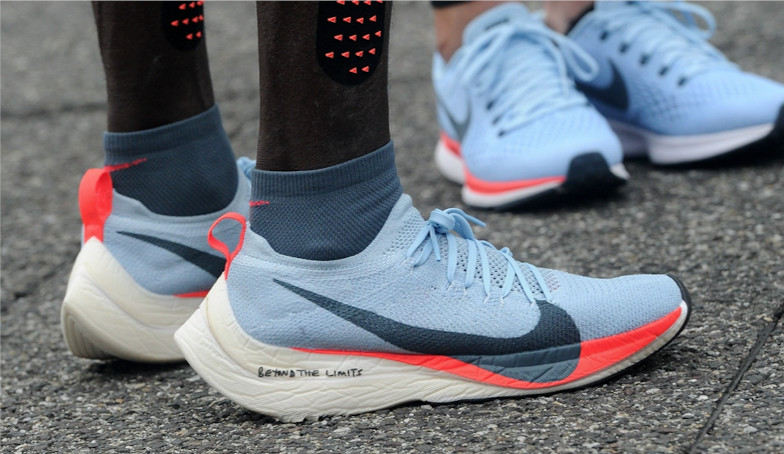
In Europe, four men broke the previous world half marathon record in December in Valencia, Spain. Earlier this month, Gudaf Tsegay of Ethiopia set a world record for the indoor 1500 meters on February 9, running 3:53.09 at a meet in Liévin, France.
Closer to home, Americans Sara Hall, Keira D’Amato, Martin Hehir, and Noah Droddy reshuffled the list of top 10 Americans in the marathon.
On the track, Donavan Brazier, Bryce Hoppel, Elle Purrier, and Grant Holloway have set American or world records.
High school and college athletes are in on the action, too. Hobbs Kessler set the high school indoor mile record with his 3:57.66, and Cooper Teare of the University of Oregon took almost 2 seconds off the collegiate mile record when he ran 3:50.39. Athing Mu at Texas A&M, who was thought to be an 800-meter runner, has been turning in world-class 400-meter splits and anchored her teammates to a collegiate record in the 4x400 meters.
What’s going on with all these fast times? Yes, there is new shoe technology, but it goes well beyond that for these record-shattering runners.
Shoe technology that changed road racing is now changing track racing
Back in 2017, when Eliud Kipchoge attempted for the first time to break two hours in the marathon on a racetrack in Monza, Italy, he wore a new type of shoe from Nike, the Zoom Vaporfly Elite. The shoes promised a 4 percent efficiency benefit, through a combination of a new type of foam, which was lighter and more responsive than previous foams, and a stiff carbon fiber plate to stabilize the foam and move the foot as it pushes off the ground.
Nike’s innovative design has evolved since 2017 and has been emulated, with varying degrees of success, by other shoe brands, like Saucony and Adidas. Now the same technology—better foam with a stiff plate inside—has moved into track spikes, said Geoff Burns, a post-doctoral fellow at the University of Michigan who is researching biomechanics and sport performance.
“The absolute effect may be a little bit smaller,” he said. “But because of the controlled environment and frequency of racing on a track, it’s much more apparent.”
Burns said that although Nike’s competitors are closing the gap, he hesitates to say that they’ve caught up. He praises Adidas and Saucony road shoes, and Adidas and New Balance for track spikes. “But if I were getting on a starting line, for a marathon or a track race, I would be in the Nike shoes,” he said.
Races are set up in near-perfect conditions
With the pandemic, the traditional lineup of road races and track meets has gone out the window, as race organizers have grappled with how to stage events safely.
In their place, pro runners, needing to race, have turned to time trials. And many of these are set up according to exact specifications.
Take The Ten, a track meet on February 20 in San Juan Capistrano, California. In two 10,000-meter track races, athletes—almost exclusively from the Bowerman Track Club in Portland, Oregon—were paced to try to get the Olympic standard in the event, which is 27:28 for men and 31:25 for women.
In the women’s race, Vanessa Fraser and Courtney Frerichs (the American record holder in the steeplechase), set a perfect pace, running 74- or 75-second laps. Fraser led for the first two miles, Frerichs took over and set the pace through four miles, 16 of the 25 laps. Her teammates could turn off their brains and follow behind. In the end, Elise Cranny won in 30:47 and five women hit the standard, four from Bowerman plus Eilish McColgan of Great Britain. The results of the men’s race were similar: Evan Jager and Sean McGorty paced, Marc Scott won in 27:10, and five runners achieved the Olympic standard.
“We are fortunate to have [teammates] who can pace a race for three or four miles,” said Marielle Hall, a Bowerman runner who finished fifth in 31:21. “That doesn’t happen that often. We’re pretty lucky.”
The Marathon Project, on December 20 in Chandler, Arizona, was similar in some ways. Organizers picked a perfectly flat U-shaped loop. Runners went up one side of a 2.1-mile stretch of road and back down the other. Pacers for the top men and women kept a steady pace through 18 miles. In the end, Martin Hehir ran 2:08:59, and Sara Hall ran 2:20:32. Hehir is now eighth on the list of fastest U.S. marathoners; Hall is second among women.
Athletes have benefited from long training blocks—and now they’re itching to race
In a typical season, many college runners race too frequently. They compete in three seasons—cross country, indoor and outdoor track. They might travel the country every other week, chasing top-level competition and in track, qualifying marks for nationals.
But that’s not the case this year. Last March, just as the pandemic was spreading across the country, the NCAA canceled indoor nationals. (Many athletes were already at the meet.) The outdoor season was quickly called off, and the cross-country season, which was supposed to happen in the fall of 2020, was pushed to winter.
The result? College runners have had long blocks of uninterrupted training time with little or no racing outside of team time trials. They’re eager to race again, and they’re reaping the benefits of the extended period of training.
Pros, too, may have benefitted from less racing than usual. And many have the feeling that finally, now that racing is back in some form, it’s time to run fast, especially in the buildup to the Olympic Trials. “The pent-up demand to have races — that definitely has something to do with it,” said Mark Coogan, coach of Team New Balance Boston, who coached Elle Purrier to a 9:10.28 American record in the two mile on February 13.
In a sense, track athletes have been forced to train as marathoners do, with long blocks of dedicated training toward one event, Burns said. “I think there could be enormous gains to track and field performances by taking the same approach: Hunker down and focus.”
Marielle Hall said that training and limited racing through the pandemic has been “all been just one giant experiment.” Bowerman workouts, designed by head coach Jerry Schumacher, are getting harder. Splits they aim for during interval workouts are faster. They do more reps. “Those kinds of things are constantly evolving, changing to fit people’s new fitness level,” she said. “It looks a lot more effortless than it is.”
by Runner’s World
Login to leave a comment
Three American Records and 10 National Records Fall at the New Balance Indoor Grand Prix
Elle Purrier’s indoor two-mile American record was just one of many highlights in New York.
Many of the best track and field athletes in the world returned to competition—some for the first time in several months, due to the COVID-19 pandemic—at the New Balance Indoor Grand Prix on February 13. The event, typically held at the Reggie Lewis Center in Boston, was relocated to the Ocean Breeze Athletic Complex in Staten Island, New York, because the Boston venue is serving as a mass vaccination site.
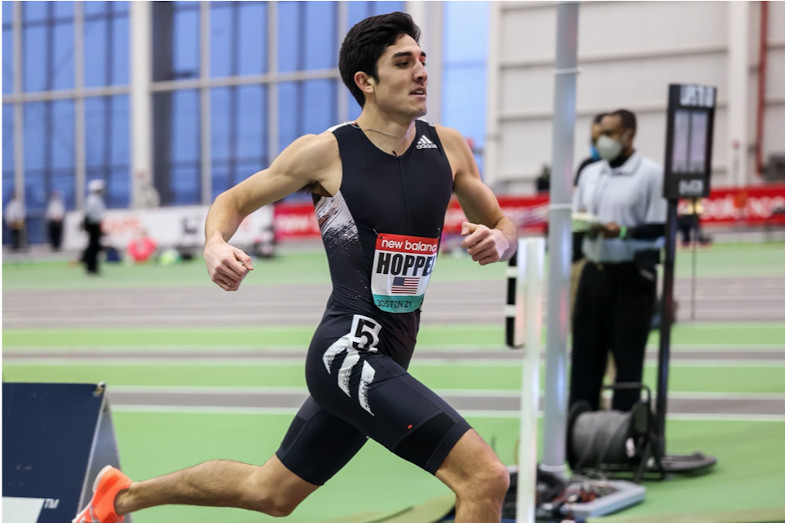
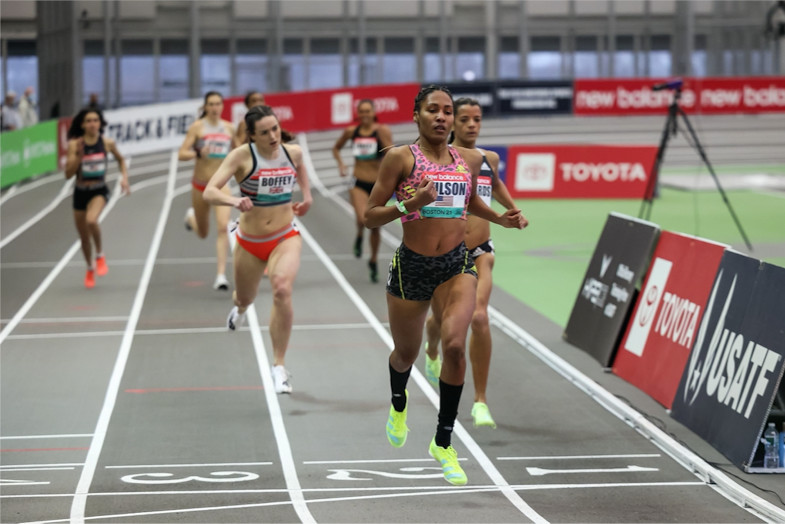
And the athletes made the most of this racing opportunity by breaking three American records and 10 national records total on Saturday.
Almost one year after shattering the American record in the mile at the Millrose Games, Elle Purrier broke another national record by winning the women’s two-mile in 9:10.28. Her time improves on the previous American record (9:18.35) set by Jenny Simpson in 2015. Purrier’s performance is also the third-fastest two-mile ever run in history. For Purrier, the victory follows a runner-up finish and 2:02.05 personal best in the 800 meters at the Prickly Pear Invitational in Phoenix, Arizona on February 6—her first race of 2021.
“I felt pretty confident going in, but you never know when you’re just training,” Purrier told journalists in a virtual mixed zone. “[Coach] Mark [Coogan] felt pretty confident about my fitness level, but after that [race] I’m feeling pretty good now.”
Looking back on her mile record a year ago, Purrier—who trains under Coogan with the New Balance group in Boston—said navigating the challenges of 2020 brought some silver linings to her process.
“Millrose was probably one of the biggest highlights of my career, and I think stopping after that was kind of a bummer because I felt like I was on a roll and the team was on a roll,” Purrier said in the mixed zone. “But we were able to kind of just wait it out this summer and get into some great training. And I went home and I find a lot of happiness there, and so I think that built this up to another great training block this fall and this winter.”
The 2018 NCAA mile champion followed the pacemaking set by Leah Falland, who brought the field through the first mile in 4:41. For the remaining laps, Purrier and steeplechase world champion Emma Coburn ran 1-2 in the front. With three laps to go, Purrier broke away from Coburn to seal the win and the record, running the final 400 meters in 63 seconds.
Five seconds behind Purrier, Coburn finished second in a personal best of 9:15.71. In the same race, Julie-Anne Staehli of Canada (9:22.66) and Amy-Eloise Markovc of Great Britain (9:30.69) broke national records for their respective countries.
Hoppel Sets a World Best for 2021
About 20 minutes later, Bryce Hoppel followed the momentum by running a world lead and U.S. national record in the 1,000 meters. The former Kansas Jayhawk and NCAA 800-meter champion broke the previous American record (2:16.76) set by the late David Torrence in 2014.
“It means everything,” Hoppel said. “It’s just something you dream of as a kid, and I couldn’t have done it without all the support that I have, my family, and my coach. They all make it possible. I mean, it feels awesome to get it. That was what I was going for.”
Behind Hoppel, Marco Arop of Canada finished second in 2:17.10, and Charlie Grice finished third in 2:17.20, a national record for Great Britain.
An American Record for Donovan Brazier
Two weeks after being forced to withdraw from the American Track League meet due to COVID-19 exposure, Donavan Brazier returned to the track with a vengeance.
The 2019 world champion lowered the American record by winning the men’s 800 meters in 1:44.21, more than two seconds ahead of runner-up Jamie Webb of Great Britain. Brazier set the previous American record (1:44.22) at the Millrose Games last year.
After Saturday’s victory, Brazier said his coach, Pete Julian, didn’t want him to hold back, and the strategy proved to be successful.
“Pete wanted me to go out and die. That was literally what he said, word-for-word,” Brazier said. “He said, ‘go out hard, see if you can hold it, and we’ll just gauge where you’re at from a fast pace.’ ... I don’t think I’m quite where I was at in Millrose last year, but I still think I’m in decent shape.”
Ajeé Wilson Returns to Competition
The women’s 800 meters featured an unexpected performance from a four-time world championship medalist and American record-holder.
Ajeé Wilson was a late entry to the meet after receiving treatment for a hamstring injury earlier in the week. Unlike her signature racing tactic of leading from the gun, Wilson ran behind the race-leader Kaela Edwards until the homestretch, where she sprinted ahead to finish first in 2:01.79.
“Not knowing exactly how things will play out with my body, I wasn’t trying to take any chances and felt a little more comfortable hanging behind,” Wilson said. “That’s something that we’ve been working on in practice. We’re maybe five strong in our group now, so that definitely prepared me for today and just being comfortable and also making sure I was still in a good position so when I wanted to move, I could.”
The performance is Wilson’s first race since winning the 800 meters at the 2020 USATF Indoor Championships on February 15, 2020. After Saturday’s race, Wilson said she didn’t feel comfortable traveling for competition last year amid the COVID-19 pandemic, as she interacts with people who are more at risk of catching the virus. Instead, she focused on training at her home base in Philadelphia. Her next competition will be the Texas Qualifier in Austin, Texas from February 26 to 27.
“Although things aren’t much better, I'm feeling a little more comfortable with the precautions we're all taking to be safe,” she said.
Behind Wilson, Sophia Gorriaran—a 15-year-old high school sophomore from Rhode Island—finished fifth in 2:03.94. One week earlier, Gorriaran notched the standard to compete at the 2021 U.S. Olympic Team Trials by running 2:02.44 against a professional field at the American Track League meet in Fayetteville, Arkansas.
Two National Records in the Men’s 1500
The men’s 1500 meters featured two national records. Oliver Hoare—who trains under coach Dathan Ritzenhein with the On Running pro group in Boulder, Colorado—kicked to victory in 3:32.35, a national record for Australia. Jake Wightman of Great Britain finished second in 3:34.48, and Sam Tanner—a sophomore at the University of Washington—finished third in 3:34.72, breaking the national record for New Zealand.
The women’s 1500 meters was won by Heather MacLean who out-paced Cory McGee in the final lap to win in 4:06.32.
Michael Norman Races the 400 Meters for the First Time in a Year
For the first time since the 2019 World Championships in Doha, Qatar, track fans got to see Michael Norman compete in his signature event, the 400 meters.
The former USC Trojan and NCAA champion—who broke the world record in the indoor 400 meters (44.52) at the NCAA championships in 2018—battled with his training partner Rai Benjamin down the homestretch to secure the victory in 45.34. Benjamin finished second in 45.39.
“The instinct just kicked in,” Norman said. “We're very competitive at practice, especially when it comes to competition. So having that little fun practice rivalry going on, I couldn't have Rai beat me in the race, but he's an amazing competitor, so it was a lot of fun.”
In 2019, Norman failed to make the world championship final in Doha after suffering from an injury in the semifinals. He raced once in 2020—9.86 in the 100 meters at a COVID-adjusted meet in Fort Worth, Texas last July. After a long hiatus from competition, Norman said he felt pleased with the effort on Saturday.
“I’m feeling good,” Norman said. “There's a lot of work that needs to be done, but the main purpose of today was just to go out and compete, have fun and to kind of knock the cobwebs off because it's been over a year since I’ve run that distance.”
Another National Record for Shaunae Miller-Uibo
In her second meet of the year, Shaunae Miller-Uibo broke another Bahamian national record by running 50.21 to win the women’s 400 meters. The time makes her the eighth-fastest performer all-time indoors. The 2016 Olympic champion achieved the mark two weeks after breaking the national record in the indoor 200 meters at the American Track League meet, where she ran a personal best of 22.40.
World record-holder Keni Harrison also ran a world leading time on Saturday. The 2018 world indoor champion won the 60-meter hurdles in 7.82 seconds.
In the same race, Sydney McLaughlin finished last in 8.56. The race was McLaughlin’s highly anticipated return to the track after earning silver in the 400-meter hurdles and contributing to Team USA’s winning performance in the 4x400-meter relay at the 2019 World Championships. Saturday’s race was McLaughlin’s first time contesting the event since 2015, when she was in high school.
After the race, she said the race was an exercise in training with her non-dominant leg over hurdles. “It’s something we've been thinking about for awhile, just being able to hurdle efficiently with both legs, and what better way to do that than the short hurdles?” McLaughlin said. “It's such a short race and such a fast-paced race that you can really work on that technique. It was good to get into a fast race and really be forced to use it without being able to think that much.”
Noah Lyles Keeping His Eyes on Tokyo
Noah Lyles did double duty in the sprints on Saturday. The 2019 200-meter world champion ran the first round of the 60 meters in 6.76 seconds and returned to the track to contest the 200 meters. Holding off competitors Deon Lendore and Jaron Flournoy, Lyles made it to the finish line in 20.80, well off the typical winning times in his signature event.
While Lyles admitted he wasn’t pleased with the time (and his body language conveyed as such), he still took the experience as a lesson moving forward in his bid to represent Team USA and win more medals at the Tokyo Games this summer.
“We’ve been training for a lot of strength and endurance and it obviously paid off because I was able to come into the 60, warm up, and then I was able to shake off any type of fatigue I had from it,” Lyles said. “I still feel really good, even coming off of the 200, like I could run three more. So I actually feel strong, which is really what we were trying to get out of training, and coming here was to see how much speed we got in the tank. To be honest, it actually proved that what we’re doing is working.”
Trayvon Bromell Crosses First in the 60 Meters
After battling a series of injuries for the past few years, Trayvon Bromell returned to his winning ways on Saturday. After leading the 60-meter semifinal in 6.53, the 2016 world indoor champion won the final in 6.50 by breaking away from his competition in the second half of the race. Runner-up Demek Kemp followed in 6.65.
Looking back on the challenges of the past few years, Bromell credited his spirituality with his return to form and a newfound motivation.
“I'm here to run and make an impact on kids, adults who may have lost hope,” Bromell said. “I feel like my testimony of what I’ve been through gives people that, and it shows the sport in another light than just winning medals or running fast times. That’s all good, but what impact do you leave? I’m trying to be impactful, not impressive.”

by Runner’s World
Login to leave a comment
Joshua Cheptegei and Karsten Warholm headline nominees for Male World Athlete of the Year
World Athletics released its list of 10 nominees for Male World Athlete of the Year on Monday, and six of the finalists are runners. The list consists of 10 incredible athletes, each of whom have had amazing 2020 seasons despite having limited opportunities to compete, and it includes the likes of Joshua Cheptegei and Karsten Warholm.
Here are the six runners who have been nominated, along with their accomplishments in 2020 and why they deserve to win Male World Athlete of the Year.
Noah Lyles only raced a handful of times this year, all in July and August, but he finished his season undefeated. He had one second-place finish in a 100m race in Florida, but that was in a preliminary heat. Later that day, he ran 9.93 seconds in the finals to take the win. He also has the world-leading 200m time of 19.76, which he ran at the Monaco Diamond League.
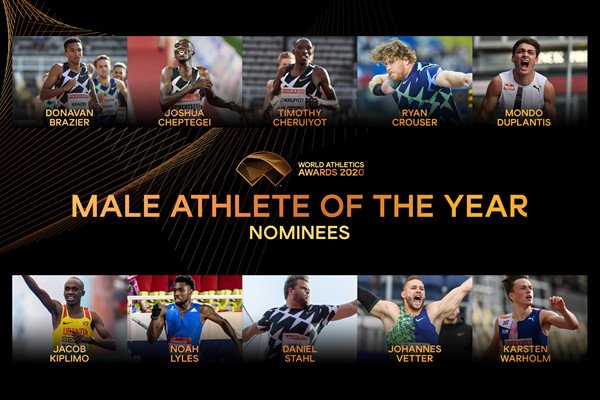
Donavan Brazier, Like Lyles, Brazier went undefeated this year. He kicked the season off by setting an American 800m indoor record with a 1:44.22, and he also ran the outdoor 800m world-leading time in Monaco, where he won the race in 1:43.15. Racing in 600m, 800m and 1,500m events throughout the season, Brazier showed off his speed and endurance, often cruising to wins. On top of all that, after his final race of the year, news came out that he had been dealing with plantar fasciitis during these races, although he certainly didn’t let it slow him down too much.
Karsten Warholm, Once again, we have an undefeated athlete nominated. Warholm not only won all six of his 400mH races this year, but he also ran the six fastest times in the event in 2020. He’s the only athlete who ran sub-48 seconds this year (a feat which he accomplished five times), and he also ran the second-fastest 400mH time in history with a 46.87 in Stockholm in August. This was just 0.09 seconds off the world record of 46.78, which has stood since 1992. Finally, he also set the 300mH world record at a meet in Oslo, where he ran 33.78 seconds.
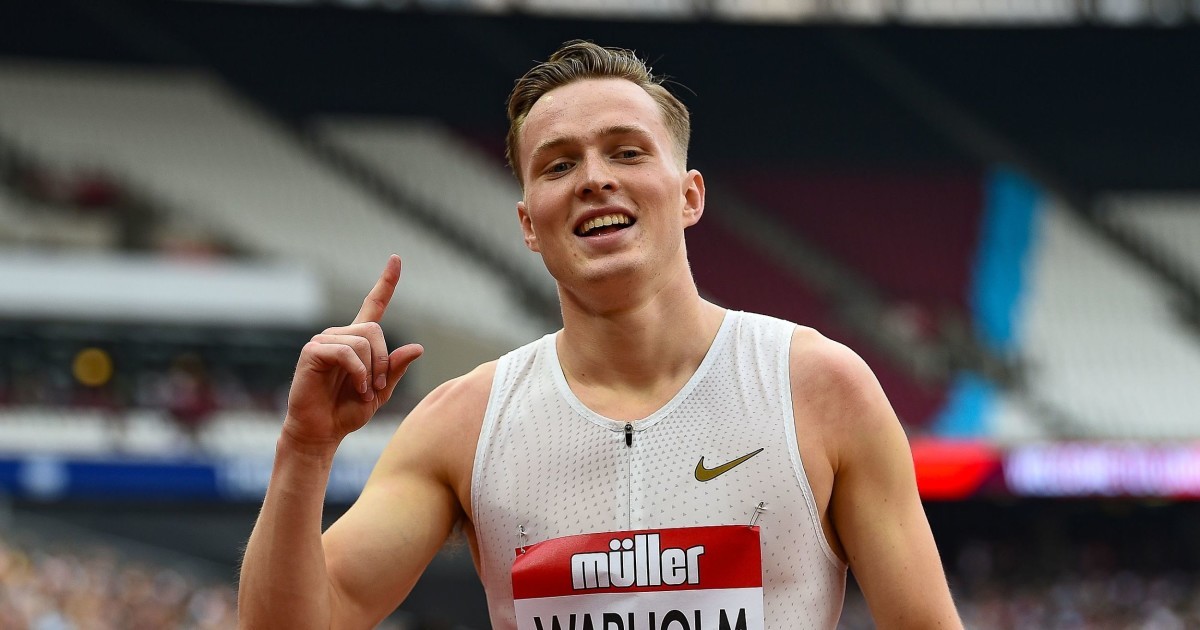
Timothy Cheruiyot, didn’t have an undefeated season, but he did remain perfect in his preferred event of 1,500m. He won each of his three 1,500m races in 2020, and he also set the world-leading time of 3:28.45, which he ran in Monaco. He also stepped out of his comfort zone with a 5,000m run in March. He recorded a time of 13:47.2, and while this result doesn’t even put him in the top 700 all-time among Kenyan runners, it’s still cool to see him broadening his horizons. We don’t expect to see him making the jump to longer races anytime soon, but if a 5,000m every now and then helps him with his endurance for the 1,500m, then all power to him.
Joshua Cheptegei, has had the year of his life. He raced four times in 2020 and broke three world records. He opened the year with a 5K road world record in Monaco, where he ran 12:51, but before he could continue his season, COVID-19 hit and put everything on hold. His time away from racing didn’t seem to faze him, though, because in his return to competition, he set the 5,000m world record (once again in Monaco) with a time of 12:35.36. Two months later, he followed that up with a 10,000m record of 26:11.00. He ran his season finale at the World Half-Marathon Championships in Poland, and while he didn’t win (he finished in fourth in 59:21), it was his debut at the distance, and he still has plenty of time to chase that world record in the coming years.
Jacob Kiplimo, only raced three times in 2020, but he won each event, and he showed impressive range as he performed well across three different distances. He opened his season with a 5,000m, which he ran in 12:48.63 (the second-fastest time in Ugandan history, behind only Cheptegei). A little over a week later, he ran a 3,000m in 7:26.64 to set the Ugandan national record and world-leading time in the event. Finally, he won his first world title when he ran to victory in 58:49 at the World Half-Marathon Championships, setting another Ugandan record along the way.
by Ben Snider-McGrath
Login to leave a comment
Britain’s Laura Muir and Uganda’s Joshua Cheptegei among World Athletics awards nominees
Britain’s Laura Muir is among the nominees for the female world athlete of the year honor, while Uganda’s Joshua Cheptegei is on a shortlist for the male prize at the World Athletics Awards.
This year the global governing body’s awards event will be held virtually on Saturday December 5.
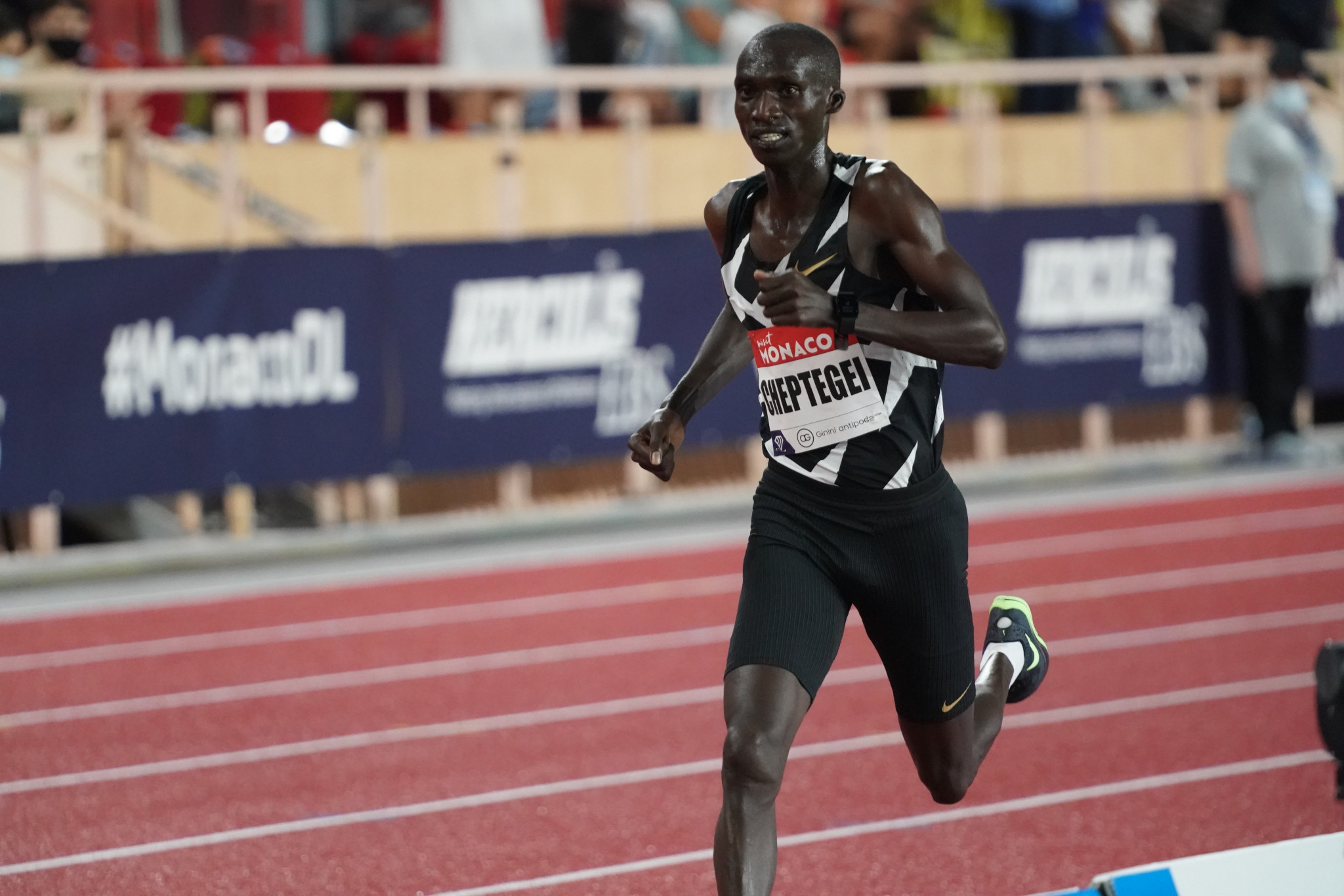
Muir clocked 1500m times of 3:57.40, 3:57.86 and 3:58.24 to lead the world rankings and set a British 1000m record of 2:30.82 in 2020, while Cheptegei broke three world records throughout the year – running 12:51 for a road 5km, 12:35.36 for 5000m on the track and 26:11.00 for 10,000m on the track.
Ethiopia’s Letesenbet Gidey, who set a world record of 14:06.62 over 5000m, and Netherlands’ Sifan Hassan, who recorded a world record distance of 18,930m in the one-hour run and broke the European 10,000m record with 29:36.67, are also among the female nominees.
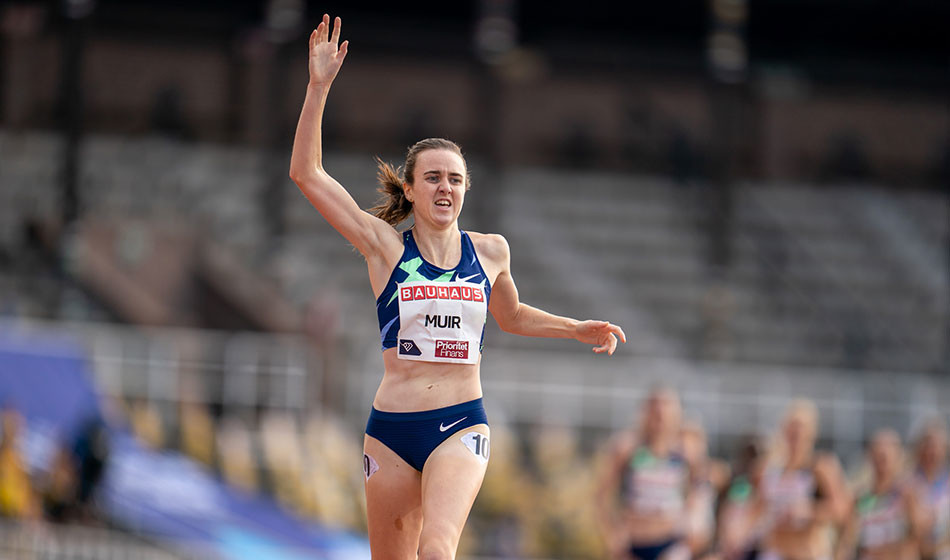
The men’s shortlist also features Sweden’s world pole vault record-breaker Mondo Duplantis and Norway’s Karsten Warholm, who ran a world-leading 46.87 in the 400m hurdles and was unbeaten in that event.
Female world athlete of the year nominees: Femke Bol, Netherlands; Letesenbet Gidey, Ethiopia; Sifan Hassan, Netherlands; Peres Jepchirchir, Kenya; Faith Kipyegon, Kenya; Laura Muir, Great Britain and Northern Ireland; Hellen Obiri, Kenya; Yulimar Rojas, Venezuela; Elaine Thompson-Herah, Jamaica; Ababel Yeshaneh, Ethiopia
Male world athlete of the year nominees: Donavan Brazier, USA; Joshua Cheptegei, Uganda; Timothy Cheruiyot, Kenya; Ryan Crouser, USA; Mondo Duplantis, Sweden; Jacob Kiplimo, Uganda; Noah Lyles, USA; Daniel Stahl, Sweden; Johannes Vetter, Germany; Karsten Warholm, Norway
A three-way voting process will determine the finalists. The World Athletics Council and the World Athletics Family will cast their votes by email, while fans can vote online via the World Athletics’ social media platforms.
As well as male and female athlete of the year honors, the World Athletics Awards will include the president’s award, coaching achievement award and athletics photograph of the year, as well as a Covid inspiration award, athletes community award and member federations award.
Last year Eliud Kipchoge and Dalilah Muhammad were named world athletes of the year, while the 2018 winners were Kipchoge and Caterine Ibarguen.
by Athletics Weekly
Login to leave a comment
Canada’s Marco Arop sets sights on Tokyo
Canada tallied five medals at the World Athletics Championships Doha 2019, so it was not surprising that Marco Arop’s excellent seventh-place finish in the 800m would be somewhat buried in the team’s performance review.
Just 21 years old at the time, the tall Sudan-born runner had earned the Pan American title two months earlier, running a then personal best of 1:44.25. But few expected him to survive the harsh preliminary rounds in Doha which required tactical nuance, stamina and most importantly experience at the highest level. Clearly the young man was up to the challenge and has immense potential.
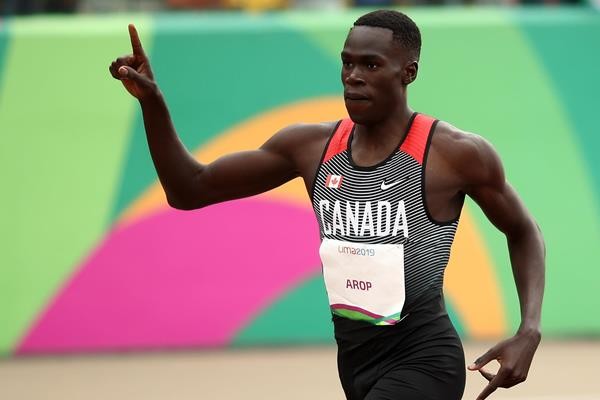
Despite the uncertainty caused by a world pandemic, Arop has continued to make progress this year, setting a new personal best of 1:44.14 while finishing third at the Wanda Diamond League meeting in Monaco last month. That extraordinary result was followed by two second-place finishes in Bydgoszcz and Stockholm. In the latter he led down the home straight but couldn’t hold off world champion Donavan Brazier. Still, he ran a very good 1:44.67.
But it was the Monaco result which stoked his confidence, particularly since it was three seconds faster than his season opener in Atlanta, a four-and-a-half hour drive from his apartment in Starkville, Mississippi.
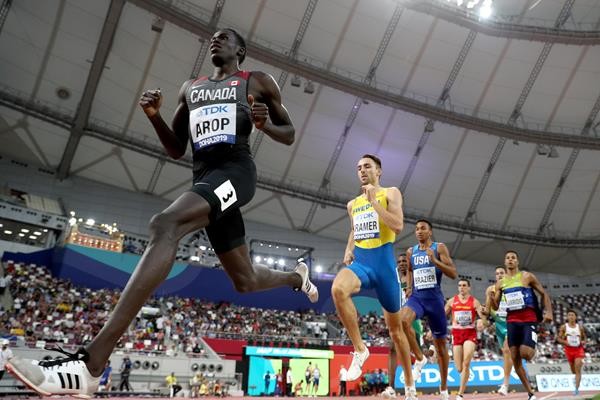
“I ended up running 1:47 high in Atlanta and I could feel there was so much more left in the tank,” he remembers. “Coming into Monaco I wanted to run fast and I was just lucky enough to be able to travel there and have that calibre of competition there. It was the perfect set up, the perfect race for me.”
Shortly after his brief European excursion, he returned to his training base in Starkville where he voluntarily quarantined for 14 days. Although he has a year and a half of academic studies in business information systems to complete, he chose to forego his eligibility at Mississippi State University to accept a contract from Adidas. Now, with a positive frame of mind, he believes an Olympic podium finish is attainable.
“Definitely! That’s just the way I have to look at it if I want to succeed,” he says. “It’s a long way from (now until) Tokyo 2021 and I am just hoping that I will be ready come the day and I am doing whatever I can to stay healthy, stay fit and become stronger.
“My goal is to win the Olympics. I know there are some really great competitors out there and I respect them all. But, at the end of the day, I want to win just as much as anybody else.”
That might be construed as youthful naïveté especially since he only became serious about athletics in his senior year at Edmonton’s St Oscar Romero Catholic High School – barely three years ago. Nevertheless, under the tutelage of Voleo Athletics Club coach Ron Thompson, Arop has become a quick study in 800-metre running, latching on to heroes from the past whose physical size equals his own 1.93m height.
“I have met (1984 Olympic 800m champion) Joaquim Cruz and I have watched him race in a couple of YouTube videos,” Arop says. “Guys like him and David Rudisha are huge role models and inspiration for me and I try to race like them. Front running is my strength.
“Coach Ron would say I can’t run the same as some of the other guys because I am not the same size. If I am in the front, it helps me stay out of trouble and control the race. That’s one thing I like to do – take the pace and decide when and where I should kick.”
“You can’t really take anything for granted,” Arop now says. “You never know who is going to come out on top.
“That’s one thing I want to take into Tokyo: not leaving anything to chance. Prelims and the semifinals and then, in the final – it’s who is having a good day.”
by World Athletics
Login to leave a comment
Tokyo 2020 Olympic Games
Fifty-six years after having organized the Olympic Games, the Japanese capital will be hosting a Summer edition for the second time, originally scheduled from July 24 to August 9, 2020, the games were postponed due to coronavirus outbreak, the postponed Tokyo Olympics will be held from July 23 to August 8 in 2021, according to the International Olympic Committee decision. ...
more...Donavan Brazier pulls plug on 2020 season due to nagging plantar fasciitis
The 800m world champion went undefeated in his fractured 2020 season
According to a report from The Oregonian, 800m world champion Donavan Brazier is bringing his 2020 outdoor season to a premature close following persistent issues caused by plantar fasciitis. As his coach Pete Julian told The Oregonian, Brazier’s right foot has been bugging him for a while now, and they finally agreed it was time to take a break. Despite this issue, Brazier has had a stellar 2020 season. He went undefeated this year, and he has a 10-race winning streak that extends back into 2019.

As has been the case with all athletes, the 2020 season was a strange one for Brazier. He opened the year with a couple of indoor meets (including a win in the 800m at the Millrose Games in New York City). Then the season came to an abrupt halt, and he wasn’t able to race until the summer. He resumed his season in early July and has been on fire since, winning every race that he has entered. The first few events were smaller runs with limited fields, but in recent weeks he has raced in Europe against a number of the world’s best athletes.
In just nine days, he won three big meets, including two Diamond League races. On August 14, he won the 800m at the Monaco Diamond League event. A few days later, he won the 600m at the Continental Tour Gold meet in Hungary. Later that week, he was back on the Diamond League stage in Stockholm, where he wrapped up his season with another big win in the 800m.
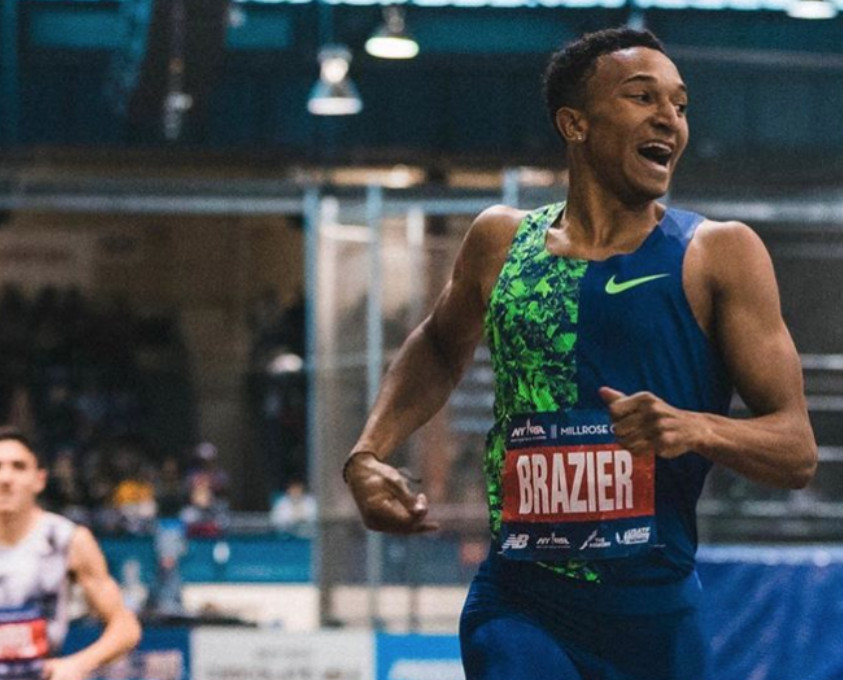
Julian told The Oregonian that he was happy to let Brazier continue racing through the summer with the plantar fasciitis, which is “one of those types of injuries that most runners can relate to,” he said. “[It’s] not bad enough to stop but not good enough to bring fuzzy happiness. It’s all always about finding the right combination of what you can and cannot do.” When it came to what he could do, Brazier managed pretty well. With all of his wins and his undefeated record this year, he has shown the world that he’s still the runner to beat heading into the next summer, by which time he should be in peak shape to take on the world’s best in Tokyo.
by Running Magazine
Login to leave a comment
After dealing with a plantar fasciitis problem in Europe, Donavan Brazier ends his season
Donavan Brazier’s 2020 outdoor season is over.
The reigning outdoor champion and U.S. record-holder in the 800 meters has been dealing with nagging plantar fasciitis problem in his right foot according to Pete Julian, Brazier’s coach.
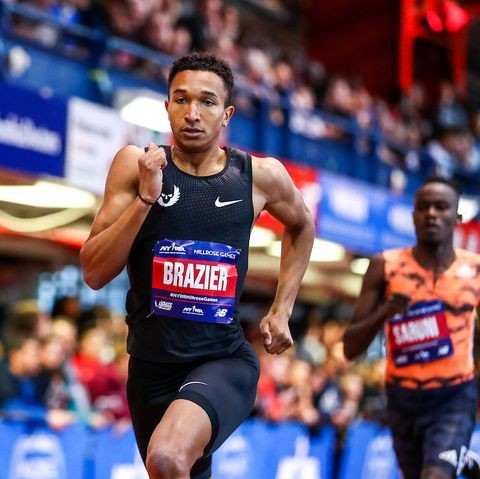
Not that anybody could tell from his performances. Brazier won his 10th consecutive race -- a streak that dates to 2019 -- Sunday in the Stockholm Diamond League meet, taking the 800 in 1 minute 43.76 seconds with a late charge on the home straight.
And, for Brazier, that was that.
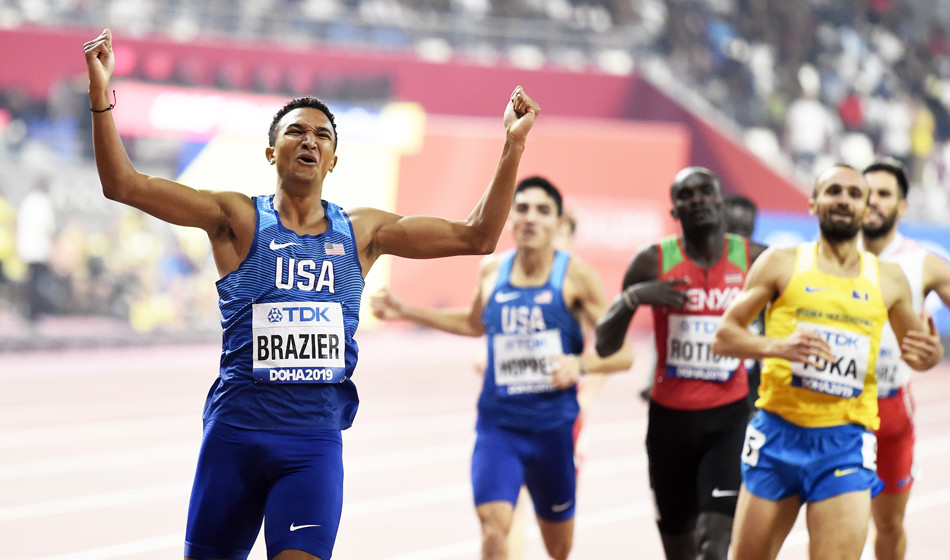
In a text message, Julian said Brazier’s has been dealing with “one of those types of injuries that most runners can relate to. Not bad enough to stop but not good enough to bring fuzzy happiness. It’s all always about finding the right combination of what you can and cannot do.
“As long as he was getting through the training and making a little bit of progress from week to week, and with the support of his doctor, I welcomed the adversity as a teaching tool. He did a great job keeping his head straight and focusing on winning stead of whining. By Stockholm, his foot was feeling better and you could tell in the way he raced.”
Just the same, Brazier and Julian decided enough was enough.
“He was fishing on the banks of Stockholm the next day,” Julian said.
Julian said the runners in his training group will go different directions soon. Craig Engels, Jessica Hull, Raevyn Rogers and Shannon Rowbury are entered in a meet in Goteborg, Sweden on Saturday. After that, Julian and some of his athletes will head home.
Engels is penciled into the 1,500 at the Diamond League in Brussels on Sept. 4. Hull and Rowbury are scheduled for the 1,500 in Berlin on Sept. 13.
“Shann and Jessica want to stay in Europe and keep racing any willing participants,” Julian said.
by Ken Goe
Login to leave a comment
Donavan Brazier Keeps Win Streak Alive, Runs 1:15.07 For 600m in Hungary
Meet organizers for today’s Gyulai Memorial meet in Székesfehérvár, Hungary, the second World Athletics Continental Tour Gold meet of 2020, were hoping that 800m American record holder and world champion Donavan Brazier would be able to beat Johnny Gray‘s 1:12.81 world best for the 600 meters, which has stood since 1986. But Brazier, who won the 800 at last week’s Herculis meet in Monaco, never had the same intentions and didn’t attack the mark in today’s race.
Brazier actually barely won the 600 in 1:15.07, as he had to come from way behind to beat Puerto Rico’s Wesley Vázquez (1:15.31). Vázquez, the Puerto Rican record holder at 800 who was 5th at Worlds last year, had close to a five-meter lead when he hit the homestretch but tied up on the way home and Brazier got the win, passing Vázquez with roughly 20 meters to go. Vázquez remains the world leader at 600 as he ran 1:14.85 in Puerto Rico on August 1
Race organizers said Brazier’s splits were 24.07 for 200 and 48.43 for 400 (Gray’s pace averages out to be 48.54 per 400). Brazier’s time today was well off his pb for 600 as Brazier owns the fastest time ever indoors (1:13.77 in 2019) and ran 1:14.39 indoors this year as well. For comparison’s sake, when David Rudisha ran his 1:40.91 800m WR, he hit 600 in 1:14.30. Non-US visitors can watch today’s race at this link.
Brazier has now won nine straight races across all distances, dating back to July 2019.
In other action of note in Székesfehérvár, American Noah Lyles won the men’s 100 in 10.05 (+.3 m/s) over Brit Adam Gemili‘s 10.28 and the 200 in 20.13 (+1.3 m/s) as Italy’s Eseosa Desalu was second in 20.35.
The resurgence of 2018 NCAA 400 champ Lynna Irby of the US continued in the women’s 200 as Irby won that in a seasonal best 22.55 (+.7 m/s) over 2015 and 2017 world champ Dafne Schippers (22.94). It was Irby’s best time since May 2018.
There was an upset in the men’s triple jump, as 2019 world bronze medalist Hugues Fabrice Zango of Burkina Faso jumped a world-leading 17.43m to defeat world/Olympic champ Christian Taylor (17.34). And in the 110 hurdles, Spain’s Orlando Ortega got the best of American world champion Grant Holloway for the second time in six days. Just as in Monaco, Holloway got out to a fast start, but once again, Ortega ran him down off the final hurdle and won in 13.21 to Holloway’s 13.22.
by Let’s Run
Login to leave a comment
Lots of fast times in Monaco including a new 5000m world record
Ugandan Joshua Cheptegei broke a 16-year-old world record in the 5000m by nearly two seconds, clocking 12:35.36 in Monaco on Friday.
Cheptegei, the 2019 World 10,000m champion who reportedly needed 80 hours to travel from Uganda for the Diamond League meet, took 1.99 seconds off Ethiopian legend Kenenisa Bekele‘s world record from 2004. Bekele is also the 10,000m world-record holder and the second-fastest marathoner in history.
“It took a lot of mind setting to keep being motivated this year because so many people are staying at home, but you have to stay motivated,” Cheptegei said, according to organizers. “I pushed myself, I had the right staff with me, the right coach.”
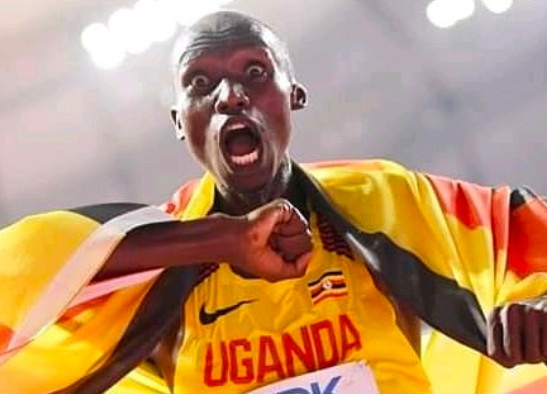
Cheptegei, 23, came into Monaco as the 73rd-fastest man in history with a personal best of 12:57.41. But he declared before the meet that the world record was his goal, given he had no Olympics or world championships to peak for this year.
“It is very difficult to run any world record,” was posted on the Instagram of Bekele, who is part of the NN Running Team with Cheptegei. “Congratulations to my teammate [Cheptegei].”
The Diamond League next moves to Stockholm on Aug. 23.
In other events Friday, Noah Lyles easily won a 200m after raising a black-gloved first before the start. More on Lyles’ gesture and victory here.
Donavan Brazier extended a year-plus 800m win streak, clocking 1:43.15 and holding off countryman Bryce Hoppel by .08. Brazier won his last seven meets, including national, world and Diamond League titles in 2019, when he broke a 34-year-old American record.
Olympic silver medalist Orlando Ortega of Spain won the 110m hurdles in 13.11 seconds, overtaking world champion Grant Holloway. Holloway, who won worlds in 13.10 last autumn, finished fourth in 13.19.
Timothy Cheruiyot followed his 2019 World title by clocking his second-fastest 1500m ever. The Kenyan recorded 3:28.45, holding off Norwegian 19-year-old Jakob Ingebrigtsen, who set a European record of 3:28.68.
Sifan Hassan, the world’s top female distance runner, dropped out of the 5000m with two and a half laps left while in the lead pack. Two-time world champion Hellen Obiri won in 14:22.12, surging past Ethiopian Letesenbet Gidey on the final lap.
Karsten Warholm ran the joint eighth-fastest 400m hurdles in history, a 47.10 against a field that lacked rivals Rai Benjamin and Abderrahman Samba. Warholm, the two-time world champion, ranks second in history with a personal best of 46.92, trailing only American Kevin Young‘s 46.78 from the 1992 Olympics.
American Lynna Irby won her Diamond League debut with a 50.50 in the 400m. Irby, the second-fastest American in 2018, failed to make the 2019 World team. On Friday, she beat Wadeline Jonathas, the top American in 2019.
Login to leave a comment
18-year-old Max Burgin runs 1:44 UK U20 800m record at Trafford
Max Burgin made quite a statement in his first race of the summer as the 18-year-old stormed to a British under-20 800m record (awaiting ratification) at the British Milers’ Club meeting in Trafford on Tuesday evening.
Clocking 1:44.75, Burgin improved on his own national age-group record mark of 1:45.36 which he ran as a 17-year-old last year.

Before that, David Sharpe had held the UK junior record for 33 years with his 1:45.64 recorded in Brussels.

Burgin received a number of awards at the end of last year in recognition of his achievements and in an interview with AW the Halifax athlete said that following a summer which also featured time out through injury, he was hoping for a similar improvement in 2020 to the progress he made in 2019.
The training he has done in lockdown with his dad and coach Ian has clearly paid off, with his time in Trafford leading the European rankings for this summer and putting him second behind Donavan Brazier’s 1:43.84 on this season’s world list.
“It was an ideal season opener, really,” Burgin said in a British Milers’ Club interview.
“I just went for it. A 51-second first lap, exactly on the pace, and then just pushed on from there. Tried to go as fast as possible and came away with a good time.”
On his lockdown training, he added: “I’ve been doing some good training. Obviously it has been a bit disrupted, as has everyone’s training. There was certainly a point a couple of months ago where everything seemed to be up in the air, no one knew what races were going to happen, but we just kept training and working on the assumption that something would come together and we ended up here.”
Finishing second behind Burgin in that 800m A race was George Mills, who ran a PB of 1:47.10.
A number of other athletes also had PB performances, including British indoor under-20 800m record-holder Keely Hodgkinson who ran an outdoor PB of 2:02.85 in the women’s 800m A race, with Georgie Hartigan running an outright PB of 2:03.60 in second and Jess Judd clocking 2:04.58 in third.
Tom Dodd went quickest in the 1500m races, running a 3:45.56 PB, while Katie Snowden won the women’s A race in 4:13.9.
The 2016 European Youth Championships silver medallist Sabrina Sinha, who has shared her story of struggles with endometriosis over the past few years in the hope it may help others, improved on her four-year-old 1500m PB in the B race, clocking 4:17.17 behind Gemma Kersey with 4:16.34.
by Jessica Whittington
Login to leave a comment
Donavan Brazier believes he has a chance at legendary record
On the night of the biggest race of his life, Donavan Brazier met the man whom he is trying to succeed and, perhaps, supplant.
David Rudisha, the two-time Olympic 800m champion and world-record holder, told Brazier before the Oct. 1 world championships 800m final that he believed in the 22-year-old American more than any other man in that night’s event.
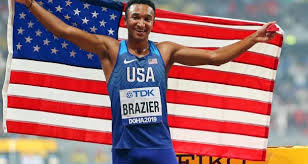
Later that evening in Doha, Brazier proved the sidelined Kenyan prophetic, winning in a national record 1:42.34 and becoming the first American to win a world title in the event.
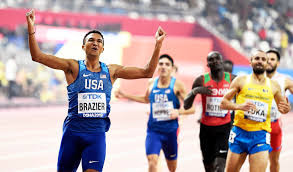
Brazier, in his first global championship final, also ran the fastest time by somebody that young since Rudisha’s 2012 Olympic title and world-record epic pulled that field to personal bests.
Rudisha’s mark of 1:40.91 — from a race Brazier has watched dozens of times — is still significantly faster. That hasn’t stopped followers from wondering if Rudisha’s days as world-record holder may be numbered.
Sounds like Brazier may be wondering, too.
“I think I definitely have the opportunity,” Brazier told NBC Sports’ Leigh Diffey in a watchback of his 2019 Diamond League and world titles. “If we’re looking at guys that are currently racing right now, I think I might have the best opportunity to do it.”
Brazier exercised caution. He was by no means predicting such a feat.
“David Rudisha, when he first broke it, he was a once-in-a-century athlete,” Brazier said. “For someone to break it so quick and just to say it so nonchalantly, I think it’s not really giving David Rudisha the respect that he deserves. A 1:40.91 is a really dangerous record to break.”
by Olympic Talk
Login to leave a comment
Long hours, short nights and ulcers: Portland Track defies the coronavirus to stage elite meets
If Portland Track’s Jeff Merrill feels a little ragged, well, no wonder.
The legwork it takes to stage elite track meets during the coronavirus pandemic would be a strain on anybody.
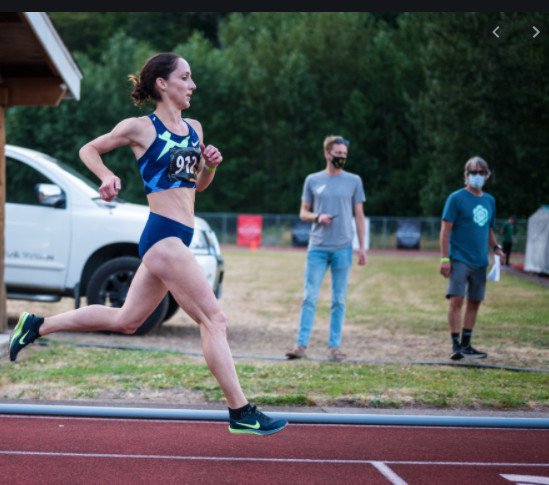
“It’s an around-the-clock type of thing,” Merrill says. “The days all kind of blur together.”
Portland Track has put on two popup meets, the Big Friendly 1 on July 3 at Portland’s Jesuit High School and the Big Friendly 2 (the Bigger Friendly) on July 17 at McKenzie Track, 40 miles outside of Eugene.
Big Friendly 3 is being planned for Friday at an undisclosed location somewhere in the Portland area. Organizers are staying mum about the location to discourage spectators and prevent potential spread of the virus.
The effort it’s taken to get to this point would exhaust a marathoner. Portland Track has consulted with Oregon’s three, Nike-sponsored elite distance groups — the Bowerman Track Club, Oregon Track Club Elite and coach Pete Julian’s unnamed group.
The Portland Thorns of the National Women’s Soccer League have advised. The office of Oregon Gov. Kate Brown has signed off. So have Multnomah and Lane counties, and, presumably, the county in which the next one will take place if it’s not Multnomah. So has USA Track & Field.
Portland Track organizers have arranged with Providence-Oregon for participants to be tested twice in a 48-hour period shortly before race day. They have had to find available tracks suitable for Olympic-level athletes that meet USATF’s sanctioning criteria.
In the case of McKenzie Track, that meant building an inside rail the day before the meet, even while on the phone to Lane County Health and Human Services.
“We weren’t sure the meet was going to happen because a new mask order was going into effect and we wanted to find out for sure that we were OK to hold it,” Merrill says.
They were — once they had passed the hat to participants to pay for the rail. Portland Track is a shoestring operation with an all-volunteer board and next-to-no budget. Merrill, who is a Portland Track board member and works fulltime for Nike, hasn’t slept much this month.
None of this is easy. All of it is time consuming. Start with finding a track.
“It’s pretty hard,” says Portland Track president Michael Bergmann. “I’ve learned about all the tracks in the state, from Lane Community College, to George Fox, to Linfield, to Mt. Hood Community College. All of those guys have rails. But the schools are closed. The campuses are closed. Most of those places don’t want to take the risk of having any sort of event, which I totally understand and respect.”
McKenzie Community Track & Field didn’t have those concerns, which made the track available on July 17 — providing Portland Track brought the rail.
But that track’s tight turns make it less suitable for running fast and setting records, which is what athletes such as Donavan Brazier, Craig Engels, Konstanze Klosterhalfen, Raevyn Rogers and Shannon Rowbury of Team Julian, Nijel Amos and Chanelle Price of OTC Elite, and Josh Kerr of the Brooks Beasts want to do.
“A good call out is, when you’re looking at an aerial view on Google Maps, you want a track with a soccer field in the middle because those are wider,” Merrill says. “If they just have a football field in the middle, they’re a little narrow.”
The Thorns became involved because some players are fans of Tracklandia, a talk show Portland Track streams and Merrill co-hosts with two-time Olympian Andrew Wheating.
Thorns defender Emily Menges, who ran track at Georgetown, has been known to join the pre-pandemic post-show gatherings at an adjacent restaurant. When Merrill mentioned Portland Track was trying to set up a coronavirus testing protocol, Menges put the organizers in touch with the Thorns training staff. That led Portland Track to Providence for the testing.
“Their system is awesome,” Bergmann says.
On race day, Portland Track is serious about keeping out spectators and holding down the number of people around the track.
At McKenzie Track, “we had folks from their board at the front of the road access with a checklist,” Bergmann says. “Nobody got past who wasn’t on the list. When people come into the facility, we do a temperature check and give them a wristband to show they’ve been checked.”
Athletes are asked to wear masks when not competing. Portland Track board members do everything from labeling and handing out race bibs to counting laps to handling the public address announcing.
They had hoped to livestream the McKenzie meet, but rural Lane County couldn’t provide the necessary bandwidth. That shouldn’t be a problem Friday.
J.J. Vazquez, a Portland State professor who runs the production company Locomotion Pictures, is set to be in charge of streaming the action live on Portland Track’s free
There should be plenty to watch. Team Julian, OTC Elite, the Brooks Beasts of Seattle and Little Wing of Bend will compete. Seattle-based post-collegians mentored by University of Washington coaches Andy and Maurica Powell also figure to be there.
Bergmann has hinted there could be surprises — either entries or record attempts — but declines to be more specific.
The Bowerman Track Club has opted out, choosing instead to hold intrasquad time trials.
Bergmann says BTC coach Jerry Schumacher “knows what we’re doing. But they’ve been pretty successful doing it their way. He has his plan. I’m not going to beg him.”
The people at Portland Track have enough on their plate as it is. They aren’t getting rich.
On their own time, they are providing the region’s Olympic-level athletes a chance to do what they train to do.
“We’re having a blast,” Merrill says. “Although, I might have an ulcer.”
by Oregon Live
Login to leave a comment
Organizers of the Herculis meeting have confirmed the participation of four more global champions, Brazier, Chepkoech, Holloway and Thompson-Herah
Organizers of the Herculis meeting have confirmed the participation of four more global champions for the Wanda Diamond League fixture in Monaco on August 14.
World 800m champion and 2019 Diamond League winner Donavan Brazier will make his Herculis debut. The 23-year-old US middle-distance runner set a North American record of 1:42.34 to win the world title in Doha last year. His form this year is promising too, having clocked a North American indoor 800m record of 1:44.22 back in February and a 1500m PB of 3:35.85 in Portland earlier this month.
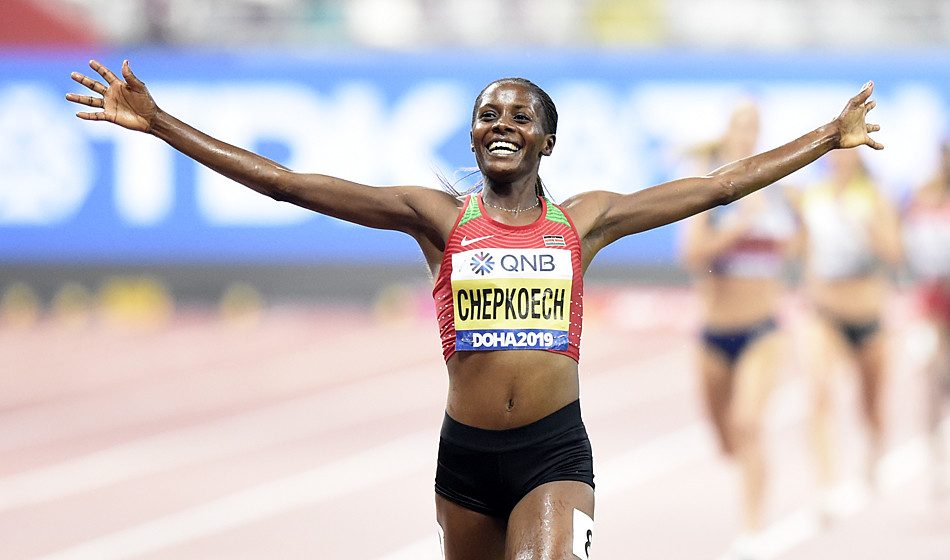
World steeplechase champion Beatrice Chepkoech will return to the scene of her world record clocking of 8:44.32 from two years ago. The Kenyan’s last race was a victory at the World Athletics Indoor Tour meeting in Dusseldorf in February, where she clocked a Kenyan indoor 1500m record of 4:02.09.
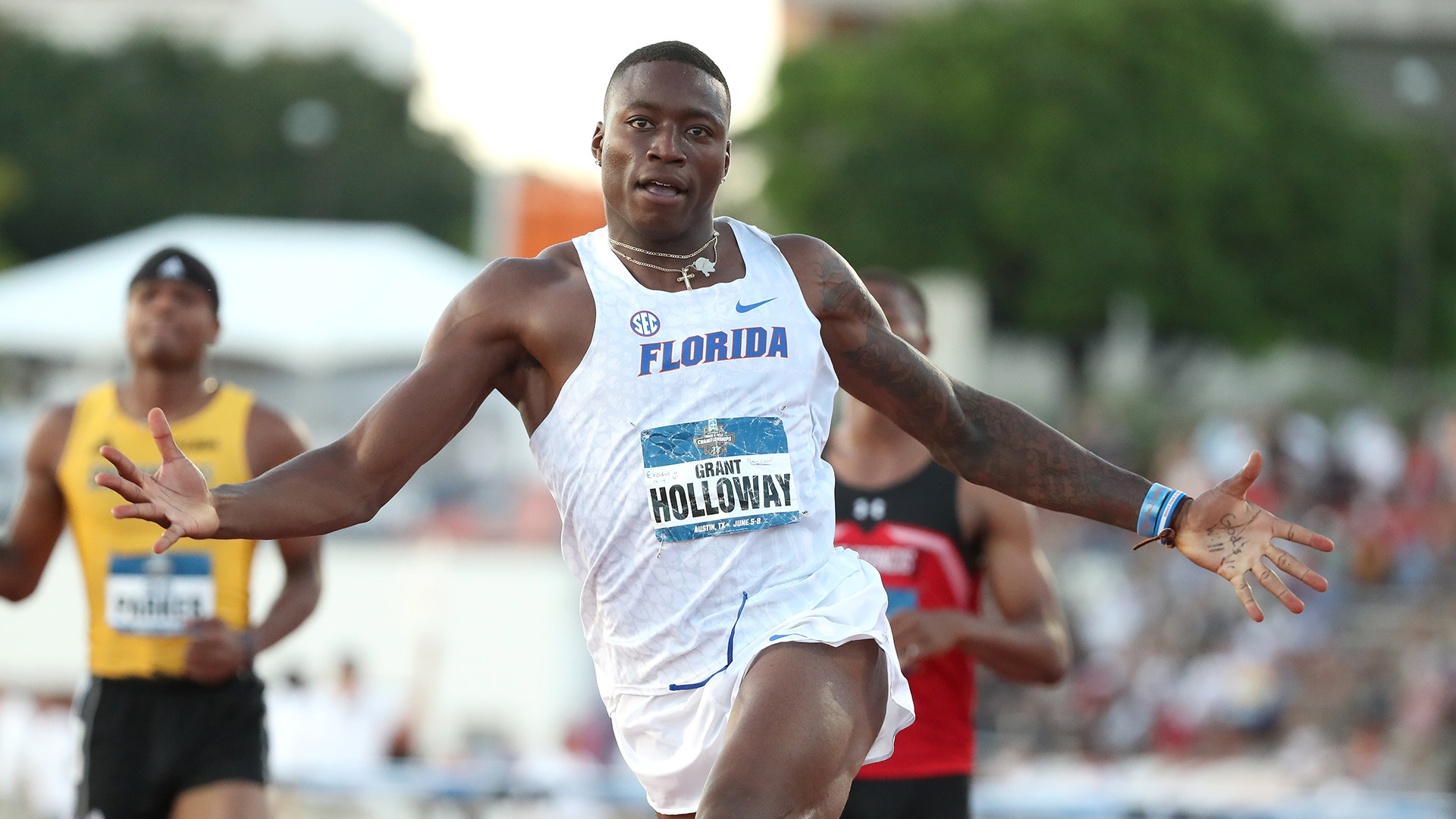
Like Brazier, world 110m hurdles champion Grant Holloway will be competing in Monaco for the first time. Following a string of record-breaking feats on the US collegiate scene, the 22-year-old turned professional last year and went on to win the world title in Doha.
Double Olympic sprint champion Elaine Thompson-Herah has also been confirmed for Monaco. Having finished third over 100m in 2018 and second in the 200m last year, the Jamaican sprinter will move back down to the shorter distance and she’ll be keen to achieve her first victory at the Stade Louis II.
European 400m champion Justyna Swiety-Ersetic of Poland is another addition to the Herculis line-up. Along with her four continental titles, the 27-year-old owns four global medals in the 4x400m.
by World Athletics
Login to leave a comment
After coronavirus forces postponement of 2020 Tokyo Olympics, elite athletes share their sorrow
Former University of Oregon sprinter English Gardner was looking at the big picture when the news broke Tuesday that the 2020 Tokyo Olympics were being postponed for a year because of the worldwide coronavirus pandemic.
Gardner has a 2016 Olympic gold medal from the Team USA women’s 4x100 relay and big hopes for Tokyo.
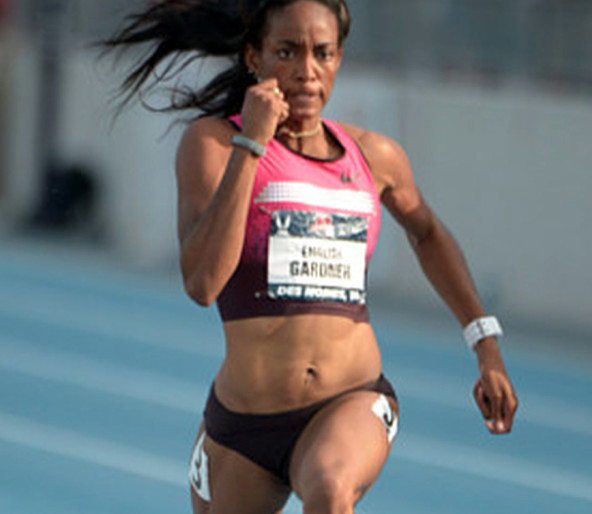
But she fully supports the decision by the International Olympic Committee and Japanese organizers to postpone.
“I’m bigger than track and field,” Gardner said. “I’m part of the community. I’m a human being. I’m a sister. I’m a mother. I’m a girlfriend. I’m a godmother. As a whole world, we’re kind of going through it right now. It’s OK that the Games got postponed because this problem, this illness, this sickness is way bigger than Tokyo.”
Gardner is among the Olympic-level athletes and coaches who spoke to The Oregonian/OregonLive on Tuesday about the postponement. They shared varying mixtures of relief, resignation, disappointment and hope for the future.
Shortly after the decision about the Olympics became public, the TrackTown USA local organizing committee announced the U.S. Olympic trials for track and field scheduled for June at Hayward Field in Eugene also had been postponed.
In most of the country, athletes are living in various degrees of social isolation as state, regional and municipal governments try to slow the spread of the virus. In many cases it has affected their ability to train.
Maybe worse has been the uncertainty of not knowing what the future holds and watching major sporting events be canceled or postponed, one after another. It seemed only a matter of time before the Olympics became the next domino to fall.
“I wasn’t super surprised,” said Shelby Houlihan of the Portland-based Bowerman Track Club and reigning USA Track & Field outdoor women’s champion in the 1,500 and 5,000 meters. “I figured it was probably going to happen. But it still kind of sucks.
“Obviously, it was probably for the best because of the situation we’re in. Safety should definitely be the No. 1 priority. But it does suck because I was ready for this year.”
Pete Julian coaches a Nike-sponsored, Portland-based team of elite distance runners who have been gearing up for the Olympics.
Julian’s group includes, among others, U.S. mid-distance stars Donavan Brazier, the 2019 world outdoor champion in the 800 meters, and Craig Engels, German star Konstanze Klosterhalfen and former University of Oregon runner Jessica Hull of Australia.
“I don’t think any of them are happy about the Olympics getting moved,” Julian said. “I think a lot of them feel they’re ready to go and believe they can win medals. They’re sort of kicking the post. They want to race.”
But Julian agrees with the decision to postpone. His message to his runners is they can be better in 2021 than they are now. He believes the Olympics can be too.
“I think Tokyo is one of the few cities in the world that could pull this off without a hitch,” he said. “I don’t think most of us can even imagine the logistical nightmare that this is going to create, and what the IOC and Tokyo will have to work through. But they will be able to do it, and it will be amazing.”
Evan Jager of the Bowerman Track Club is the 2016 Olympic silver medalist in the men’s steeplechase. He said he had a strong winter of training and liked his positioning heading into the outdoor season. But he believes this step back can turn to be a bigger step forward.
“Postponing it a year and having the Olympics as that light at the end of the tunnel is going to be a very positive thing to look forward to,” Jager said. “We can come out of this crisis a year from now, and hopefully be healthy. The Olympics can be a celebration of getting out of these dark times.”
Marathoner Galen Rupp said he planned to keep training and keep perspective.
The former University of Oregon star won an Olympic silver medal in the men’s 10,000 meters in 2012 and a bronze in the marathon in 2016. He already had made the 2020 U.S. Olympic team by winning the marathon trials on Feb. 29 in Atlanta.
“The health, safety and well-being of the global population are of the utmost importance and beyond any sporting event,” Rupp said. “Already so many people have gotten sick or died and so many more have been greatly impacted by the coronavirus. We need to listen to the advice of health experts.”
Even if that means going dark in 2020 and waiting a year so the coronavirus can be contained.
Gardner, the former UO sprinter who lives in New Jersey, said training has become difficult because of quarantine containment regulations. She joked she has to get creative to do track workouts because of padlocked facilities.
“I’ve been hopping a lot of fences,” she said. “I’ve been working on my long jump and high jump approaches.”
But turning serious, she said she endorsed the quarantines and social-distancing rules as a way to keep vulnerable family members safe. She said the Olympic postponement would protect athletes and fans.
“I was mostly concerned that we would calm the virus down, we all would go to Tokyo and spur it back up again,” Gardner said.
She said it could hit athlete housing in Tokyo the way an outbreak of the norovirus struck at the 2017 World Outdoor Championships in London.
“We share common eating rooms,” she said. “We all share the same tracks, the same weight rooms, the same hotels. It would just be a matter of time before it spurred back up again.“
by Oregon Live
Login to leave a comment
The reigning 800m world champion Donavan Brazier sees an NFL career in his future
For most people, winning a world championship and racing for an Olympic medal would be enough to satisfy them. Donavan Brazier wants to try for more, but not in running. He wants to take a shot at making it in the NFL.
The 22-year-old 800m world champ and American record-holder has his sights set on Olympic gold, and he is the obvious favourite to win in Tokyo. At the 2019 world championships in Doha, Brazier won in an American record time of 1:42.34, which was over a second ahead of silver.
In an interview with Reuters before his win at the Millrose Games this past weekend, Brazier expressed his interest in an NFL career.
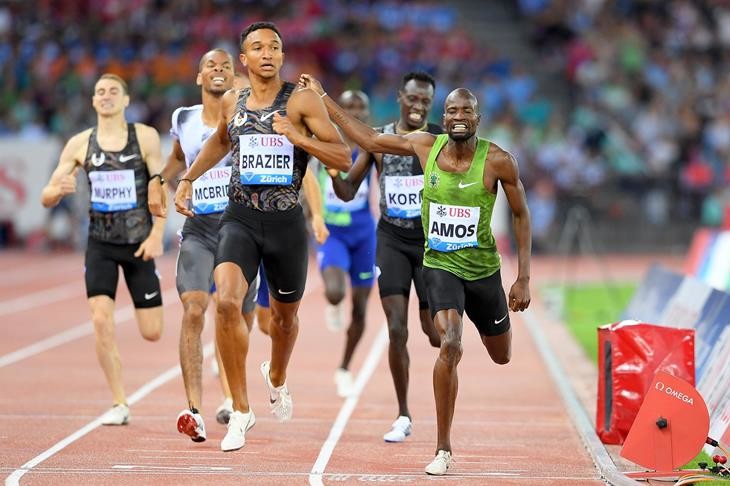
“When I’m in practice and I’m going through a lot of pain and training, I start thinking about anything else I’m good at so that I don’t have to do track,” he said. “The first thing I think of is NFL wide receiver.” Apparently this is not just a dream—he might really act on it, saying that he will consider trying out for an NFL team in the next couple of years.
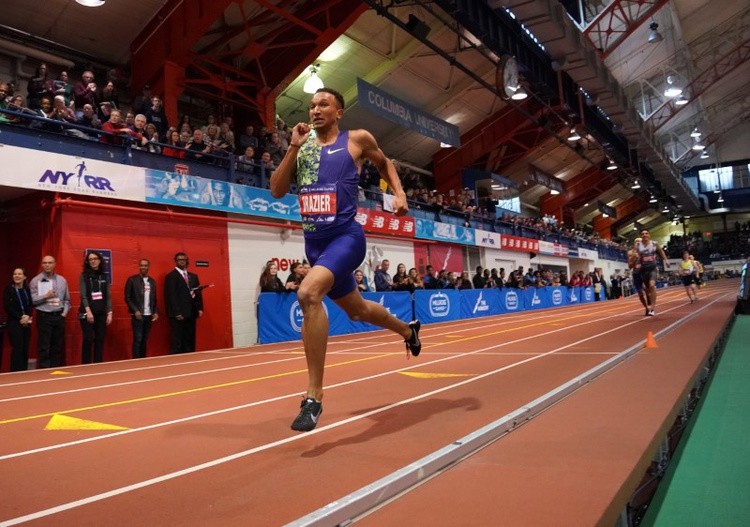
This wouldn’t be the first time that a track star has transitioned into another sport. In 2018, Usain Bolt joined the Central Coast Mariners, a professional soccer team in Australia. He played for the club for two months (he even scored two goals in a friendly match) but ultimately walked away from the sport in November 2018.
It will be interesting to see if Brazier follows through with these plans, and if he does, to see how far he can go. If he does make it in the NFL, it will be a tall order for him to match the success of his track career. On Saturday at the Millrose Games, he took the win in the 800m in 1:44.22, a new U.S. men’s indoor record.
Brazier told Reuters that he sometimes get “too ahead of myself” in competitions. Hopefully he doesn’t look too far ahead to his NFL goals until he reaches a few more of his dreams on the track first.
by Ben Snider-McGrath
Login to leave a comment
Three indoor American records were set Saturday at the 113th NYRR Millrose Games in front of a sold out crowd
American records fell in three events as athletes entertained a sell-out crowd at the Armory and the113th NYRR Millrose Games Saturday afternoon in Washington Heights.
Elle Purrier raised the bar in the NYRR women’s Wannamaker mile smashing the American Record in 4:16.85. At the bell, Purrier powered ahead to outpace Germany’s Konstanze Klosterhalfen at the wire and break one of the oldest American records in the books, a 4:20.5 by Mary Slaney in 1982. Her en route time at 1,500m was 4:00.23, the second-fastest time in U.S. indoor history
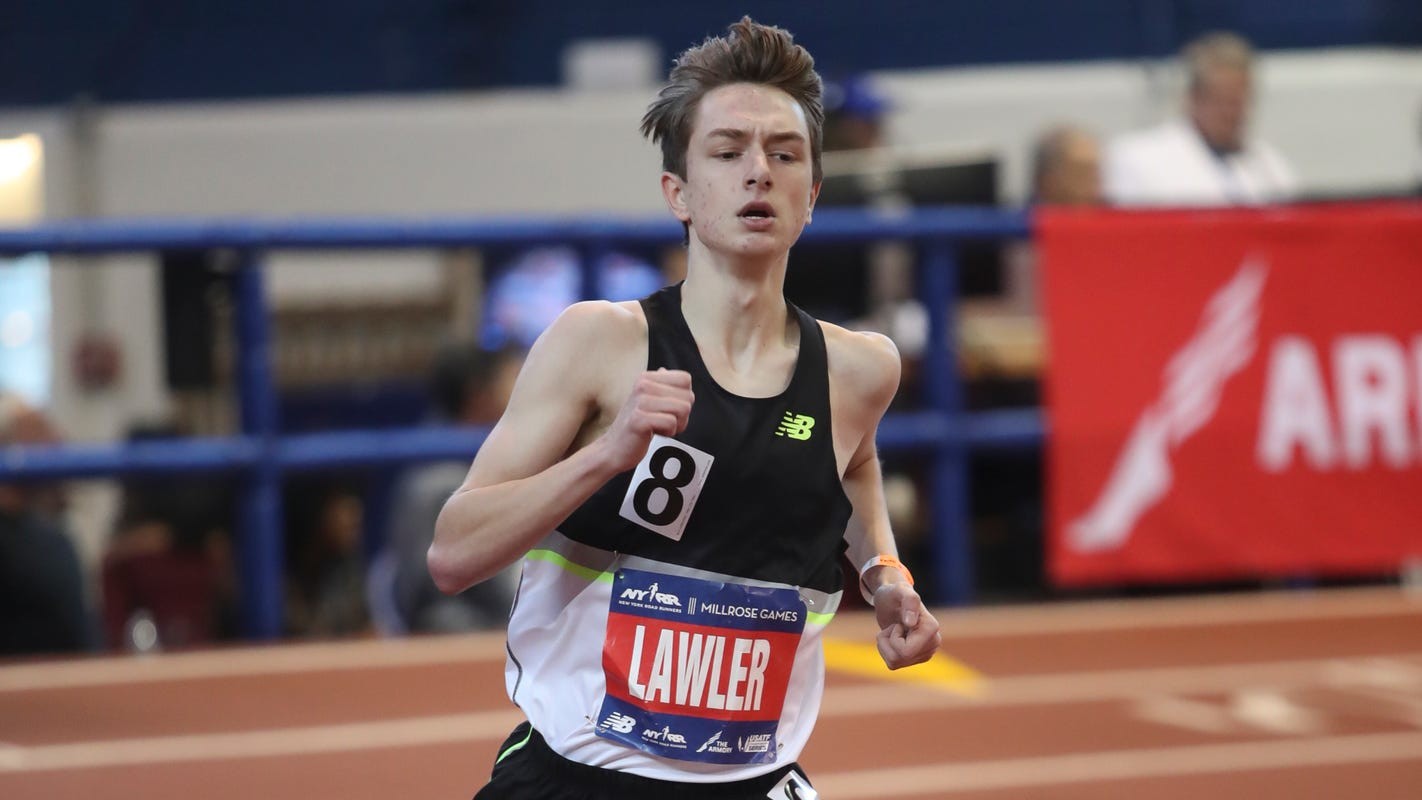
In the New York Presbyterian men’s 800 meters, Donavan Brazier added another record to his resume, crossing the line in 1:44.22 to break his own mark of 1:44.41 set here last year in finishing second. Brazier holds both the indoor and outdoor U.S. records. Ajeé Wilson put on a show in the women’s 800 meters, biding her time through 600 meters when she surged to go ahead of Jamaica’s Natoya Goule to cross the line in 1:58.29, bettering the AR of 1:58.60 she set in 2019 to win the Millrose title.
USATF CEO Max Siegel and USATF COO Renee Washington presented the World Athletics Heritage Plaque to the Armory to honor the NYRR Millrose Games’ Wanamaker Mile.
In a showdown between the reigning Olympic and World champions in the men’s shot put, Rio gold medalist Ryan Crouser blasted the sixth-best throw in American indoor history, a 22.19m/72-9.75 in round five, that gave him an almost three-foot margin of victory over Doha winner Joe Kovacs, who threw 21.34m/70-0.25.
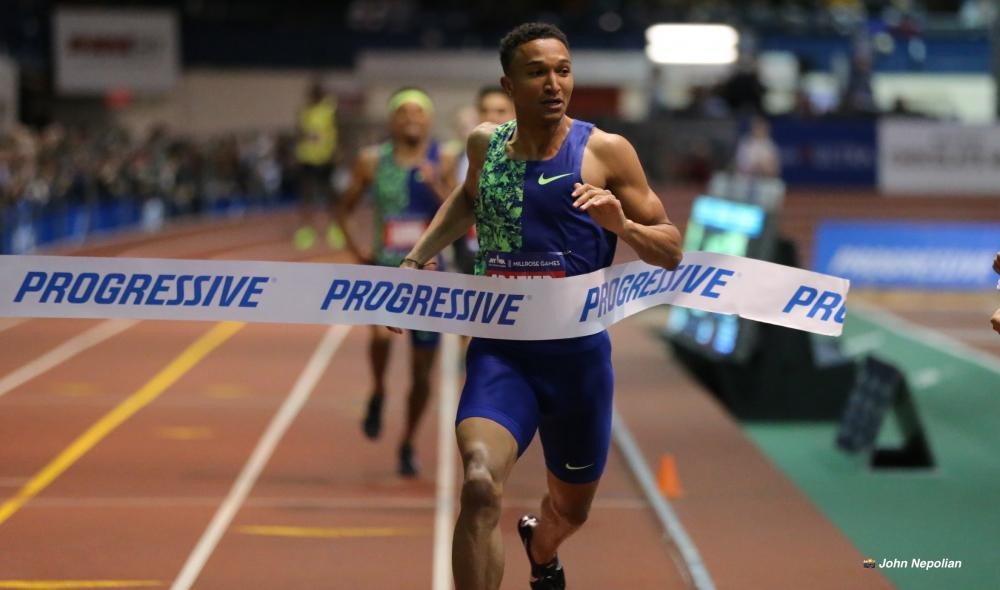
Another world-leading performance came in the women’s pole vault, where Sandi Morris scaled 4.91m/16-1.25, a height only she and Jenn Suhr have ever bettered on the U.S. indoor all-time list.
Keni Harrison, the world record holder in the women’s 100m hurdles, won the 60m version of her specialty in 7.90, with Daniel Robertstaking the men’s race in 7.64. Coming through 200m in 20.61, 400m hurdles World Championships silver medalist
Rai Benjamin won the Jane & David Monti 300m in 32.35, making him the No. 8 all-time U.S. indoor performer. 2018 World Indoor bronze medalist Ronnie Baker won the men’s 60m in 6.54, and ‘18 USATF Indoor women’s 60m champ Javianne Olivertook the women’s dash in 7.13.
World Championships fourth-placer Wadeline Jonathan powered away from the field in the Cheryl Toussaint women’s 400m to win by more than a second in 51.93, while Team USATF steeplechaser Allie Ostranderunleashed an unbeatable kick over the final 100m of the Mike Frankfurt women’s 3,000m to win in 8:48.94.
Login to leave a comment
NYRR Millrose Games
The Pinnacle of Indoor Track & Field The NYRR Millrose Games, first held in 1908, remains the premier indoor track and field competition in the United States. The 2025 edition will once again bring the world’s top professional, collegiate, and high school athletes to New York City for a day of thrilling competition. Hosted at the New Balance Track &...
more...Allyson Felix will headline the 113th NYRR Millrose Games for this weekend
Allyson Felix leads a host of Olympic medalists at the world’s top annual international indoor track and field meet, the NYRR Millrose Games, live on NBC Sports on Saturday.
Felix, the most decorated female track and field Olympian with nine medals, competes in the 60m at the Armory in New York City. She takes on a field including U.S. 100m champion Teahna Daniels and 17-year-old Jamaican phenom Briana Williams.
NBC and NBC Sports Gold air live coverage of the Millrose Games on Saturday from 4-6 p.m. ET. Full start lists are here.
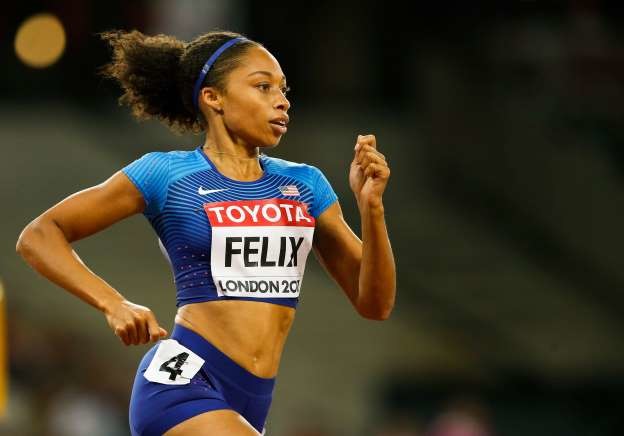
Athletes are preparing for the USA Track and Field Indoor Championships in Albuquerque, N.M., the following weekend, and the Olympic trials in Eugene, Ore., in June. The world indoor championships, traditionally held in even years, have been postponed due to host nation China’s coronavirus.
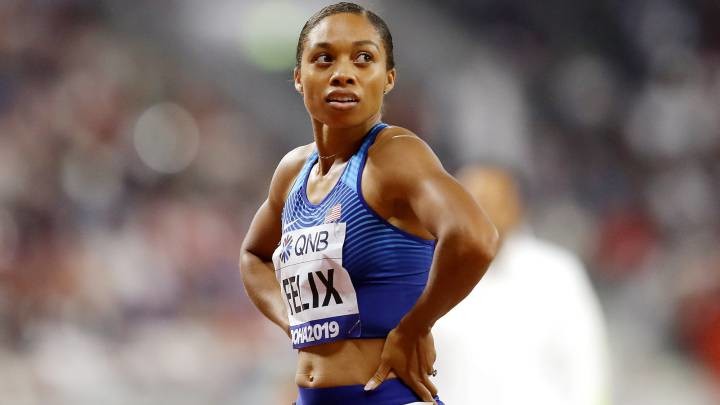
Felix is racing indoors this season for the first time since 2016. She missed the last indoor season following the birth of daughter Camryn. Though Felix is predominantly a 400m sprinter, she said in the fall that she plans to be ready to race the 200m at the Olympic trials. The 200m comes after the 400m at trials, so it could be a safety net if Felix is unable to make the team in the 400m.
In other Millrose Games events, the 60m hurdles features Olympic 110m hurdles champion Omar McLeod of Jamaica, plus the two fastest men from last year — world champion Grant Holloway and Daniel Roberts, both Americans.
World champion Nia Ali and world-record holder Keni Harrison are entered in the women’s 60m hurdles.
Another world champion, Donavan Brazier, leads an 800m field that includes fellow U.S. Olympic team contenders Bryce Hoppel, Brannon Kidder and Isaiah Harris.
In field events, Olympic champion Ryan Crouser takes on world champion Joe Kovacs in the shot put. Olympic silver medalist Sandi Morris headlines the women’s pole vault.
Action concludes with the Wanamaker Men’s Mile. Two-time Olympic 1500m medalist Nick Willis of New Zealand aims to win that race for the first time.
Login to leave a comment
NYRR Millrose Games
The Pinnacle of Indoor Track & Field The NYRR Millrose Games, first held in 1908, remains the premier indoor track and field competition in the United States. The 2025 edition will once again bring the world’s top professional, collegiate, and high school athletes to New York City for a day of thrilling competition. Hosted at the New Balance Track &...
more...The 113th NYRR Millrose Games will host the greatest array of talent ever assembled
The 113th NYRR Millrose Games will host many of the world’s best track & field men and women to perform on centre stage on February 8 at The Armory New Balance Track & Field Center in Washington Heights in New York City.
This year’s NYRR Millrose Games field is arguably the most talented overall since the meet moved to The Armory in 2012.
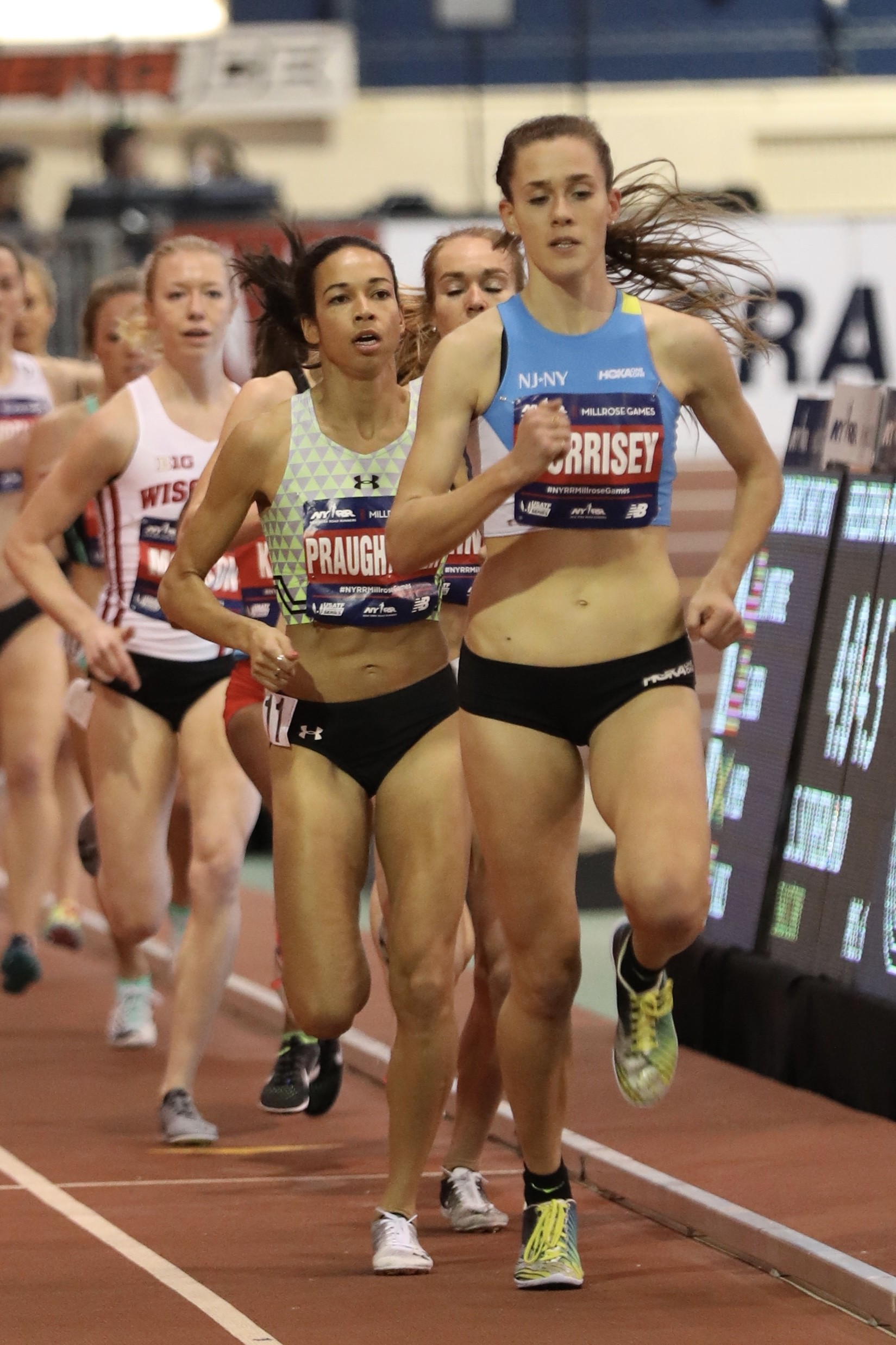
NYRR Millrose Games Meet Director Ray Flynn takes it one step further: “This year’s Millrose Games features probably the greatest array of talent ever assembled in its 113-year history.”
Moreover, 16 women and 15 men are Olympians in the 113th NYRR Millrose Games.
Allyson Felix headlines the women’s side. Felix is a six-time Olympic gold medalist and is the most decorated athlete in the history of track & field. She is entered in the Women’s 60m and has her sights set on the 2020 Tokyo Olympics this summer.
Joining Felix as the top women track & field athletes in this year’s NYRR Millrose Games are: Ajeé Wilson (competing in the Jack and Lewis Rudin Women’s 800m), the American Indoor and Outdoor record-holder in the 800m, two-time World Championships bronze medalist and two-time World Indoor silver medalist, Laura Muir (Jack and Lewis Rudin Women’s 800m), a four-time European Indoor champion and 2018 European 1,500m champion.
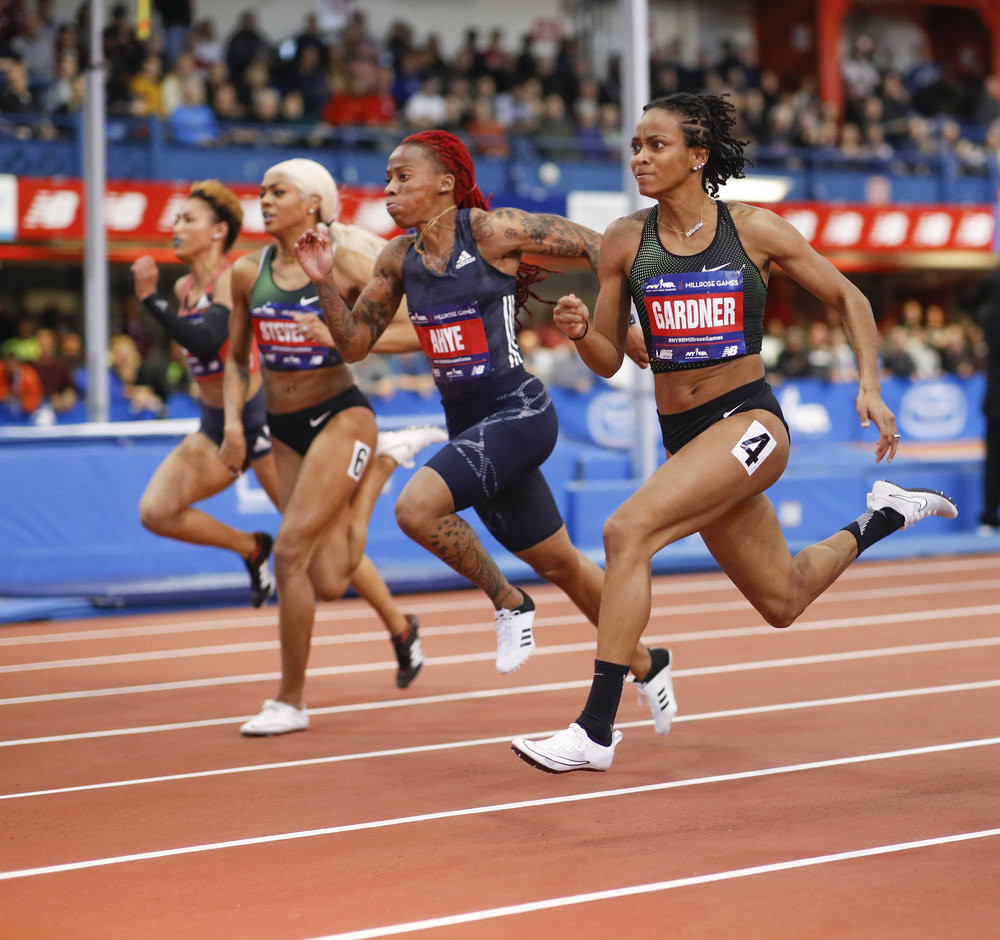
Sandi Morris (Women’s pole vault), the World Indoor champion in 2018 and 2016 Rio Olympics silver medalist, Kenni Harrison (Women’s 60m hurdles), the 100m hurdles world record holder, 2018 World Indoor champion and 2019 World silver medalist, Nia Ali (60m hurdles), 2019 World gold medalist in 100m hurdles and 2016 Rio Olympics silver medalist, Wadeline Jonathas (Women’s 400m), 2019 World Championships gold medalist in 4x400m Relay.
Konstanze Klosterhalfen (Women’s Wanamaker Mile), the defending Women’s Wanamaker Mile champion and 2019 World Championships bronze medalist in the 5,000m, Nikki Hiltz (Women’s Wanamaker Mile), 2019 World Championships 1,500m finalist and last weekend turned in a PR 4:29.39 to win the mile at the Dr Sander Invitational Columbia Challenge at The Armory, Elinor Purrier (Women’s Wanamaker Mile), the 2018 NCAA Indoor Mile champion, runner-up in the 2019 New Balance 5thAvenue Mile Presented by NYRR with a time of 4:16.2 on the heels of winner Jenny Simpson’s 4:16.1 and this past weekend set a personal-best 9:29.19 to win the two-mile race at the New Balance Grand Prix, Brittany Brown(Women’s 400m), 2019 World Outdoor Championships 200m silver medalist.
The top men competing for feature Ryan Crouser and Joe Kovacs, who will reprise last year’s duel in the men’s shot put from the centre of the infield. Crouser is the 2016 Olympic champion and 2019 World silver medalist, while Kovacs is the 2015 and 2019 World champion and the 2016 Rio Olympics silver medalist.
Other top men competing in the 113th NYRR Millrose Games include, Omar McLeod (Men’s 60m hurdles), 2016 Rio Olympics gold medalist, Grant Holloway (Men’s 60m hurdles), the 2019 World Championships gold medalist in the 110 hurdles, Ronnie Baker (Men’s 60m), 2018 World Indoor Championships bronze medalist in 60m and third fastest 60m in history.
Donavan Brazier (Men’s 800m) 2019 World Championship gold medalist and American indoor and outdoor record-holder in 800m; and in 2019 he broke the Indoor world record in 600m at USATF Championships, Michael Saruni (Men’s 800m), NYRR Millrose Games champion, NCAA record-holder and Kenyan Indoor 800m record-holder, Isaiah Harris (Men’s 800m), 2018 NCAA champion, Bryce Hoppel (Men’s 800m), 2019 NCAA champion and World Championships finalist, Rai Benjamin (Men’s 300m), 2019 World Championships silver medalist in 400 hurdles and 2019 U.S. Champion 400m hurdles.
Filip Ingebrigtsen (Men’s NYRR Wanamaker Mile), Norwegian National record holder in both the 1,500m and mile, and 2017 World Championships bronze medalist in 1,500m, Nick Willis (Men’s NYRR Wanamaker Mile), two-time Olympic 1,500m medalist, silver (2008) and bronze (2016). When Willis ran a 3:59.89 last weekend in the New Balance Grand Prix it marked the 18th consecutive year he ran a sub-4-minute mile, tying John Walker’s record. Willis won a record-breaking fifth title at the Fifth Avenue Mile last September, Chris O’Hare, (Men’s NYRR Wanamaker Mile), 2018 NYRR Wanamaker Mile champion, Eric Jenkins (Men’s NYRR Wanamaker Mile), 2017 NYRR Wanamaker Mile champion, Paul Tanui (Men’s 3,000m), 2016 Rio Olympics silver medalist in 10,000m.
Login to leave a comment
NYRR Millrose Games
The Pinnacle of Indoor Track & Field The NYRR Millrose Games, first held in 1908, remains the premier indoor track and field competition in the United States. The 2025 edition will once again bring the world’s top professional, collegiate, and high school athletes to New York City for a day of thrilling competition. Hosted at the New Balance Track &...
more...Brazier and Ali kick off World Athletics Indoor Tour with dominant victories in Boston
The 2020 World Athletics Indoor Tour began with national records and fantastic performances in Boston, as world champions Donavan Brazier and Nia Ali kicked off their Olympic campaigns with victories at the New Balance Indoor Grand Prix on Saturday night (25).
Brazier, the world champion in the 800m, dominated the men’s 600m. In the final event of the evening, Brazier came through 400m in 49.62, and obliterated the field to win in a meeting record of 1:14.39. Brazier, who owns the world indoor best for the 600m with his 1:13.77 from last year’s US Indoor Championships, won by nearly six seconds from Michael Stigler.
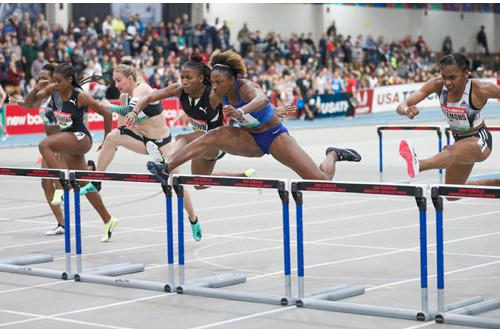
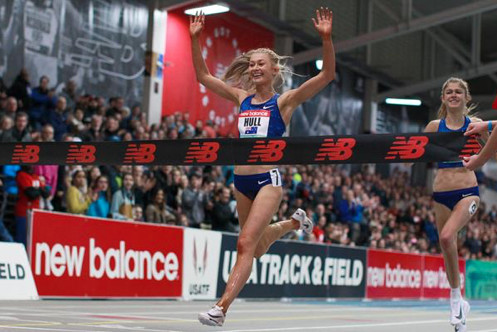
“It feels great,” said Brazier, who was contesting his first race since the World Championships. “This is my tradition so far while being a professional. I’ve run at the Reggie Lewis Center four years straight now and I’ve come out with four wins in a row – so I might as well just keep coming back.”
Ali started her indoor season right where she left off, winning the 60m hurdles in 7.94. The world 100m hurdles champion pulled away over the final barrier to beat world indoor silver medallist Christina Clemons, who finished in 7.98.
“It means a lot to start off the season here,” said Ali after running her fastest 60m hurdles time since winning the 2016 world indoor title. “My family is able to get down and see me and I appreciate that. Especially being from the East coast. I know the crowd is always good to me, so I love it.”
In the women’s 1500m, Jessica Hull of Australia sat on the shoulder of Konstanze Klosterhalfen for 1450m before bursting to the front in the final straight to win in 4:04.14, taking more than two seconds off the Oceanian indoor record.
Klosterhalfen, the German athlete coming off a bronze medal in the 5000m at the World Championship in Doha, finished second in 4:04.38. Ciara Mageean finished third in 4:06.42 to break her own Irish indoor record.
In his first indoor race as a professional, Bryce Hoppel, who did not lose a race collegiately last year, nipped Jake Wightman at the line to win the 1000m in 2:17.41. Wightman, who set a British indoor record of 2:17.51, led going into the final lap, but Hoppel clocked a 27.1 final circuit pick up the win.
World indoor bronze medallist Bethwell Birgen of Kenya won a duel over Edward Cheserek, who announced this week he would be competing internationally for Kenya, in the 3000m. After the pacemaker stepped off the track with just over 1000m to go, Cheserek and Birgen traded the lead before Birgen unleashed a stunning final 300m, closing his last lap in 26.33 to take the win over Cheserek, 7:44.21 to 7:46.74.
In the women’s two miles, Elinor Purrier buried the competition over the final lap to win in 9:29.19 as 2017 world steeplechase champion, Emma Coburn, finished third.
Gabby Thomas blitzed a 36.52 to win the 300m. Thomas, a graduate of Harvard University, won the first heat by a wide margin and held on for the win after Shamier Little beat out Kendall Ellis in the second heat, 37.07 to 37.36.
“It was really great to compete at home, here in Boston,” Thomas said. “Especially this being my first year out of college and having that energy around me, it’s a really an amazing feeling.”
Chris O’Hare of Great Britain held off a hard-charging Nick Willis in the men’s mile, winning 3:59.62 to 3:59.89.
Demek Kemp won the 60m in 6.50, taking 0.05 off his personal best. Trayvon Bromell, running the 60m for the first time since winning the 2016 world indoor title at the distance, finished seventh in 6.84. Obi Igbokwe, a senior at the University of Houston, won the men’s 400m in 46.50.
In the field events, Pablo Torrijos of Spain kept his cool after four successive fouls in the men’s triple jump, eventually sailing out to 16.75m in the fifth round to seal the victory. Amina Smith of the US cleared 1.89m to win the women’s high jump.
The World Athletics Indoor Tour will next head to Karlsruhe, Germany, on 31 January, when athletes will continue to chase tour ranking points as well as wildcards for the World Athletics Indoor Championships Nanjing 2020.
by World Athletics
Login to leave a comment
Donavan Brazier and Michael Saruni will showdown at the 113th NYRR Millrose Games on Saturday, February 8th
The 113th NYRR Millrose Games will take place on Saturday, February 8th, and one of the most anticipated races of the day will be the men’s 800-meter run. This race figures to be a showdown between world champion and American record-holder Donavan Brazier and defending Millrose champion and NCAA record-holder Michael Saruni.
“The rematch of Donavan Brazier and Michael Saruni may be one of the highlights of the indoor season,” Armory Foundation Co-President Jonathan Schindel said. “But anything can happen with so many of the world’s best 800-meter runners back at the NYRR Millrose Games.”
The historic NYRR Millrose Games takes place at The Armory’s New Balance Track & Field Center and will feature dozens of Olympians and world championship contenders as they look toward the 2020 Tokyo Olympics next summer.
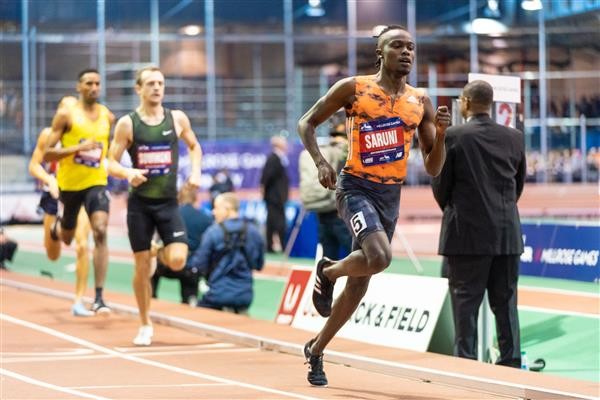
After a dream season in 2019, Brazier has established himself as arguably the best 800m runner in the world. At Millrose last year, Brazier began his campaign by running an indoor American record of 1:44.41. He followed that performance with an indoor world best over 600m at the USATF Championships. Outdoors, Brazier collected another U.S. championship before claiming the Diamond League trophy in Zurich with an epic come-from-behind victory over Nigel Amos. Brazier then capped his season in style, destroying the field at the World Championships in Doha to win the gold medal, running 1:42.34 to break Johnny Gray’s 34-year-old American record in the process.
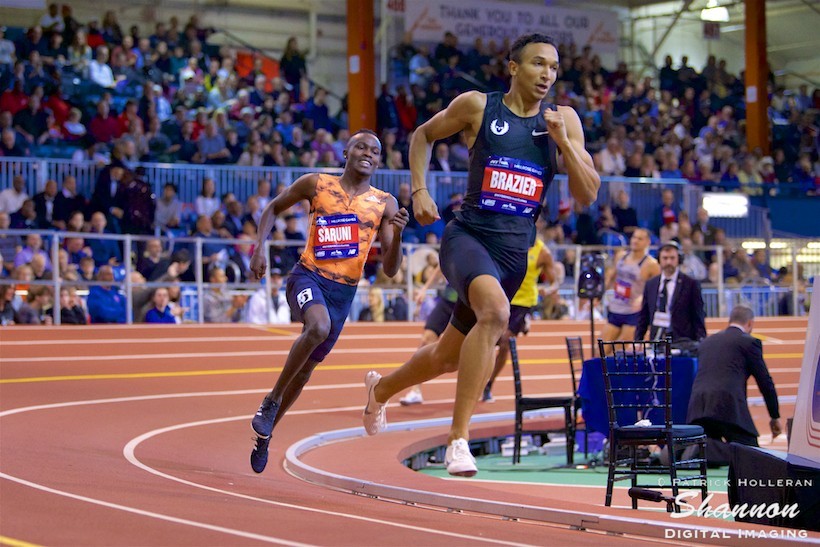
“After a successful 2019 season, I’m looking forward to running at the Millrose Games for the fifth year in a row,” Brazier said.
Brazier’s primary competition will come from Saruni, the man who bested him at Millrose in 2019. Saruni blasted a 1:43.98 in that race, making him the second-fastest indoor performer at all time. Despite being hampered by an injury outdoors, Saruni still managed a season best of 1:43.70 in Monaco. His personal best of 1:43.25 still stands as the NCAA record, and the 24-year-old Kenyan will surely be a threat.
Joining the field is 2019 breakout star Bryce Hoppel. The former University of Kansas standout won both the indoor and outdoor NCAA 800m titles during a 21-race winning streak. Hoppel went on to place third at USAs to punch his ticket to Doha, where he exceeded all expectations by finishing fourth in a personal best of 1:44.25. Entering 2020, Hoppel will look to establish himself as a medal contender in Tokyo with a strong performance at Millrose.
Isaiah Harris, another former NCAA champion who starred at Penn State, will be in the race. Harris competed at the 2017 World Championships, and he will attempt to reclaim that form heading into the Olympic year. Rounding out the field is the reliable veteran and Millrose stalwart Erik Sowinski. Sowinski is a former world indoor bronze medalist, and one of the most consistent middle-distance runners in the world, especially indoors.
The NYRR Millrose Games is the most storied event in indoor track and field.
More than 200 athletes share the distinction of being both Millrose and Olympic champions. In November of 2013, the New York Road Runners became the title sponsor of the NYRR Millrose Games, which is owned by The Armory Foundation. The NYRR Millrose Games is a USATF television series event, and The Armory Foundation appreciates the support of USA Track & Field.
Login to leave a comment
NYRR Millrose Games
The Pinnacle of Indoor Track & Field The NYRR Millrose Games, first held in 1908, remains the premier indoor track and field competition in the United States. The 2025 edition will once again bring the world’s top professional, collegiate, and high school athletes to New York City for a day of thrilling competition. Hosted at the New Balance Track &...
more...15 Mind-Blowing Race Moments From 2019-From Kipchoge to Kosgei and all of the upsets, records, and victories in between, 2019 was a major year for running.
1-Kosgei Shocks Everyone in Chicago-On October 13, Brigid Kosgei made history when she won the Chicago Marathon in 2:14:04. The Kenyan ran almost perfectly even splits to achieve her goal in the Windy City, passing the halfway mark in 1:06:59 before clocking 1:07:05 for the second half.
2-Eliud Kipchoge Dips Under 2-Hour Marathon Barrier-In his second attempt at breaking the two-hour barrier in the marathon, Eliud Kipchogeof Kenya accomplished the feat with a stunning run of 1:59:40 on the streets of Vienna in October.
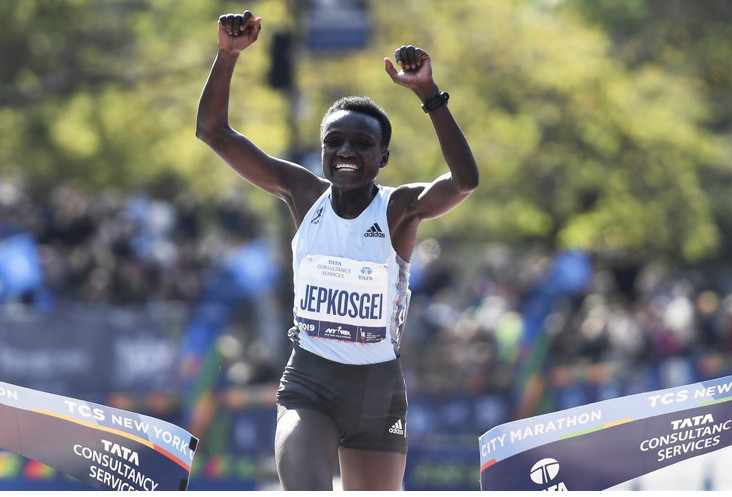
3-Joan Samuelson Crushes Her Goal 40 Years After Boston Victory-In 1979, Joan Benoit Samuelson set a national and course record when she won the Boston Marathon as a 21-year-old college student. Forty years after her historic victory, Samuelson, 61, set out to run within 40 minutes of her winning time at the 2019 Boston Marathon. On April 15, the 1984 Olympic champion wore a similar Bowdoin College singlet to honor her 1979 win and shattered her goal, crossing the finish line in 3:04. “To be here, 40 years later and being able to run, let alone being able to run a marathon, I feel blessed,” she said.
4-Jim Walmsley Obliterates His Own Western States Record-Ultrarunning star Jim Walmsley maintained his Western States winning streak when he obliterated his own course record in June. Navigating 100 miles from Squaw Valley to Auburn, California, Walmsley broke the tape in 14 hours and 9 minutes, which broke his own course record by more than 20 minutes
5-Donavan Brazier Breaks 34-Year-Old American Record-Donavan Brazier had the race of his life when he broke one of the oldest American records on his way to winning gold in the 800 meters at the IAAF World Championshipsin Doha, Qatar. With 250-meters to go, Brazier ran away from the field to secure the first 800-meter world championship gold medal for the United States in a time of 1:42.34.
6-Dalilah Muhammad Sets World Record Twice-Dalilah Muhammad made history twice this season when she broke the 400-meter hurdles world record and lowered it once again on her way to winning the world championships.

7-Sifan Hassan Wins Unprecedented Double at Worlds-At the IAAF World Championships in Doha, Sifan Hassan won two gold medals that no man or woman has achieved in the history of the world championships or Olympic Games. The Dutch runner, 26, kicked off the competition by winning the 10,000-meter final in a national record time of 30:17:33.
8-Maggie Guterl Becomes First Woman to Win Backyard Ultra-For 60 hours straight, Maggie Guterl ran the same 4.2-mile trail loop to become the last runner standing in the Big’s Backyard Ultra race. The Durango, Colorado, native ran 250 miles on her way to becoming the first woman to win the brutal race that rewards the person who can run for the longest amount of time.
9-Geoffrey Kamworor Breaks Half Marathon World Record-Holding a 4:25-mile pace, Geoffrey Kamworor of Kenya shattered the world record at the Copenhagen Half Marathon in September, running 58:01. The performance, which was 17 seconds faster than the previous record, took place in the same city where the 26-year-old won his first of three half marathon world championship titles in 2014.
10-Joyciline Jepkosgei Debuts in NYC Marathon, Beats Mary Keitany-In her first marathon, Joyciline Jepkosgei of Kenya secured a title in a major upset. The half marathon world record-holder raced like a veteran in the New York City Marathonto beat four-time champion Mary Keitany in a winning time of 2:22:38, only seven seconds shy of the course record.
11-Kenenisa Bekele Wins Berlin Marathon 2 Seconds Shy of World Record-One year after Eliud Kipchoge set a world record that many believed would be untouchable for at least a few years, Kenenisa Bekele nearly surpassed it at the Berlin Marathon. The 37-year-old Ethiopian won the race in 2:01:41, just two seconds shy of Kipchoge’s record.
12-Freshman Sha’Carri Richardson Shatters 100-meter Collegiate Record-In her first ever NCAA Outdoor Championship, Sha’Carri Richardson made history. In the 100-meter final, the LSU freshman sprinted to victory in a collegiate record of 10.75.
13-Drew Hunter, Athing Mu, and Colleen Quigley Win First Pro Titles-The USATF Indoor Championships brought out exciting breakthroughs for three young athletes. In the men’s 2-mile, 21-year-old Drew Hunter won the crown out of the “slower” heat by running a world-best time of 8:25.29. The women’s 600 meters was won by 16-year-old Athing Mu who defeated world silver medalist Raevyn Rogers in an American record time of 1:23.57.
14-BYU Snaps NAU’s Winning Streak at the NCAA Cross Country Championships-The Brigham Young team had a banner day at the NCAA Cross Country Championshipsin November. Battling muddy conditions, the BYU Cougars secured the team victory over three-time defending champions Northern Arizona in the men’s race. With a team total of 109 points, BYU beat NAU by 54 points to win the program’s first NCAA cross-country championship in history.
15-Joshua Cheptegei Sets 10K World Record After Winning Two World Titles-Joshua Cheptegei of Uganda capped off a banner year when he set a world record in the 10K on December 1, running 26:38 to win the 10K Valencia Trinidad Alfonso in Valencia, Spain. Earlier this year, he won the world cross-country championships and the world championship 10,000 meters in Doha, Qatar.
by Runner’s World
Login to leave a comment
NOMINEES ANNOUNCED FOR MALE WORLD ATHLETE OF THE YEAR 2019
This week marks the opening of the voting process for the 2019 World Athletes of the Year ahead of the World Athletics Awards 2019 in Monaco on Saturday 23 November.
The IAAF is pleased to confirm a list of 11 nominees for Male World Athlete of the Year who were selected by an international panel of athletics experts, comprising representatives from all six continental areas of the IAAF. The nominations of 11 athletes reflects the remarkable range of exceptional performances that the sport has witnessed this year, at the IAAF World Athletics Championships in Doha, and in the Diamond League and in road and cross country events. The IAAF’s Competition Performance Ranking show that the World Championships in Doha was the highest quality competition in the history of the event.
The nominees for 2019 Male World Athlete of the Year are (in alphabetical order):
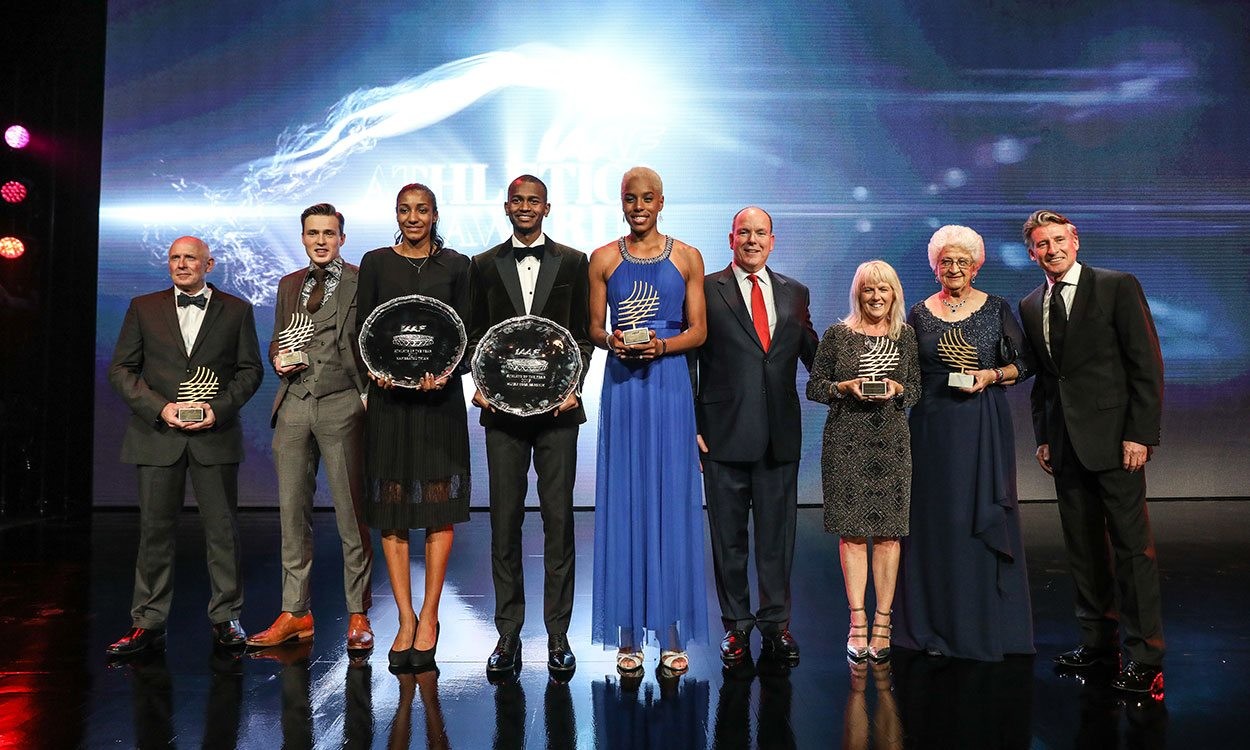
Donavan Brazier (USA) - won world 800m title in a championship record of 1:42.34, won Diamond League title, won four of his five outdoor 800m races

Christian Coleman (USA) - won world 100m title in a world-leading 9.76, won world 4x100m title in a world-leading 37.10, won four of his five races at 100m
Joshua Cheptegei (UGA) - won world cross-country title in Aarhus, won world 10,000m title in a world-leading 26:48.36, won Diamond League 5000m title
Timothy Cheruyiot (KEN) - won world 1500m title, won Diamond League 1500m title, won 10 of his 11 outdoor races across all distances,
Steven Gardiner (BAH) - won world 400m title in 43.48, undefeated all year over 400m, ran world-leading 32.26 indoors over 300m
Sam Kendricks (USA) - won world pole vault title, cleared a world-leading 6.06m to win the US title, won 12 of his 17 outdoor competitions, including the Diamond League final
Eliud Kipchoge (KEN) - won London Marathon in a course record of 2:02:37, ran 1:59:40.2 for 42.195km in Vienna
Noah Lyles (USA) -won world 200m and 4x100m titles, ran a world-leading 19.50 in Lausanne to move to fourth on the world all-time list, won Diamond League titles at 100m and 200m
Daniel Stahl (SWE) - won the world discus title, threw a world-leading 71.86m to move to fifth on the world all-time list, won 13 of his 16 competitions, including the Diamond League final
Christian Taylor (USA) - won the world triple jump title, won Diamond League title, won 10 of his 14 competitions
Karsten Warholm (NOR) - won the world 400m hurdles title, undefeated indoors and outdoors at all distances, including at the Diamond League final and the European Indoor Championships, clocked world-leading 46.92, the second-fastest time in history, A three-way voting process will determine the finalists.
The IAAF Council and the IAAF Family will cast their votes by email, while fans can vote online via the IAAF's social media platforms. Individual graphics for each nominee will be posted on Facebook, Twitter and Instagram this week; a 'like' on Facebook and Instagram or a retweet on Twitter will count as one vote.
The IAAF Council’s vote will count for 50% of the result, while the IAAF Family’s votes and the public votes will each count for 25% of the final result.
Voting for the Male World Athlete of the Year closes on 4 November. At the conclusion of the voting process, five men and five women finalists will be announced by the IAAF.
The male and female World Athletes of the Year will be announced live on stage at the World Athletics Awards 2019.
by IAAF
Login to leave a comment
Yomif Kejelcha misses the world record for the indoor mile by one hundredth of a second
The 112th Millrose Game’s featured event was the NYRR Men’s Wanamaker Mile. Yomif Kejelcha fell 0.008 seconds short of the indoor mile record, winning the Wanamaker Mile in 3 minutes, 48.46 seconds.
Yomif was ready to run the first sub 3:48 indoor mile and he almost did it. He ran even pace with his slowest 200m being 29.21 before running his final one in 28.33. He was all alone the last few laps breaking the tape in 3:48.46.
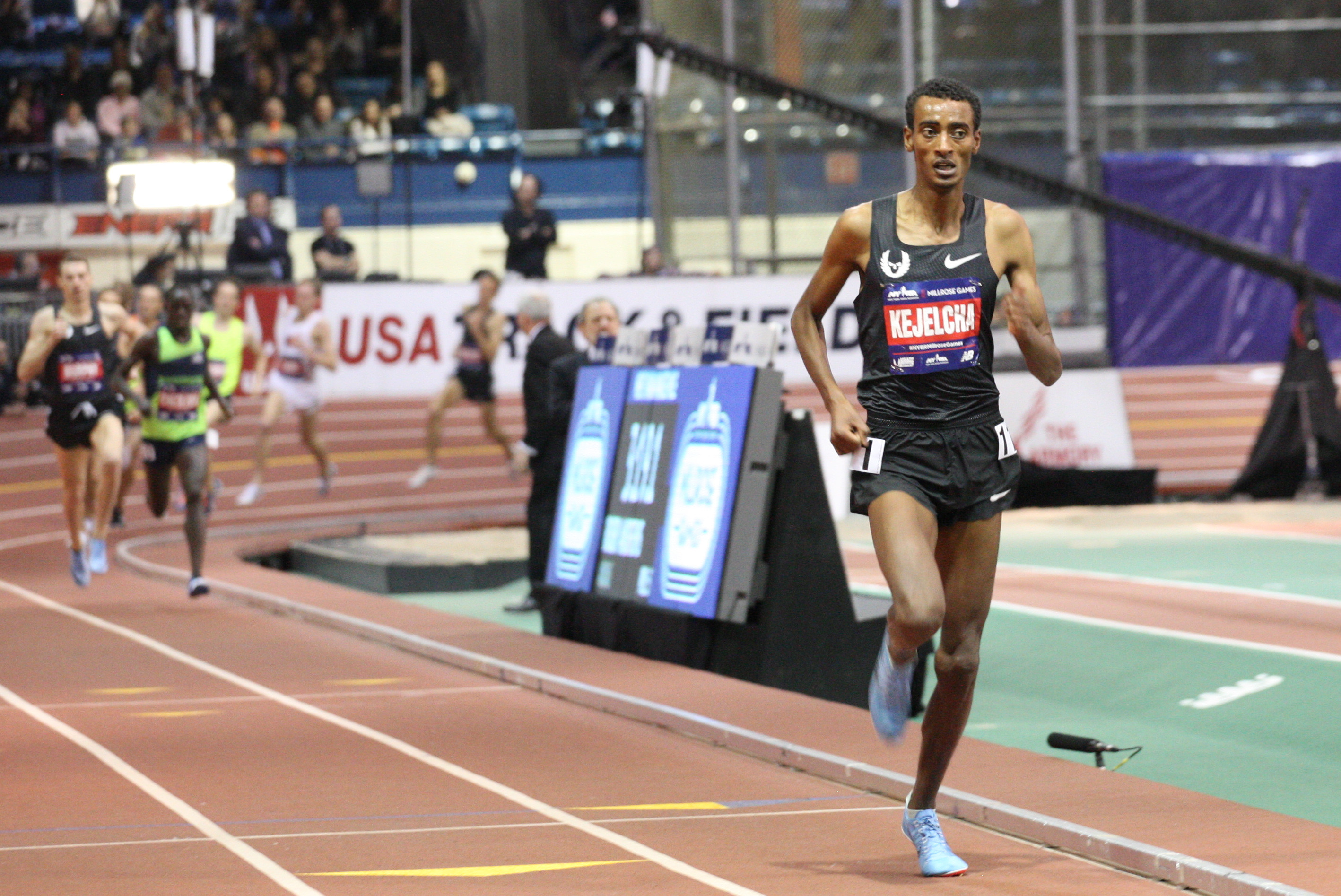
The world Record is 3:48.45. Kenya’s Edward Cheserek placed a distant second clocking 3:53:29 just ahead of USA’s Clayton Murphy 3:53:30. Both Yomif and Clayton are part of the NIKE Oregon Project.
But this was not the only outstanding performance of the afternoon. Germany’s Konstanze Klosterhalfen ran an outstanding 4:19.98 in the women’s Wanamaker mile. USA’s Colleen Quigley placed second in 4:22.86.
Donavan Brazier wanted Johnny’s Gray’s indoor 800 American record of 1:45.00 set March 8, 1992. He got it today as he clocked 1:44.41.
There was over six hours of exciting races with many PR’s and meet records.
Login to leave a comment


